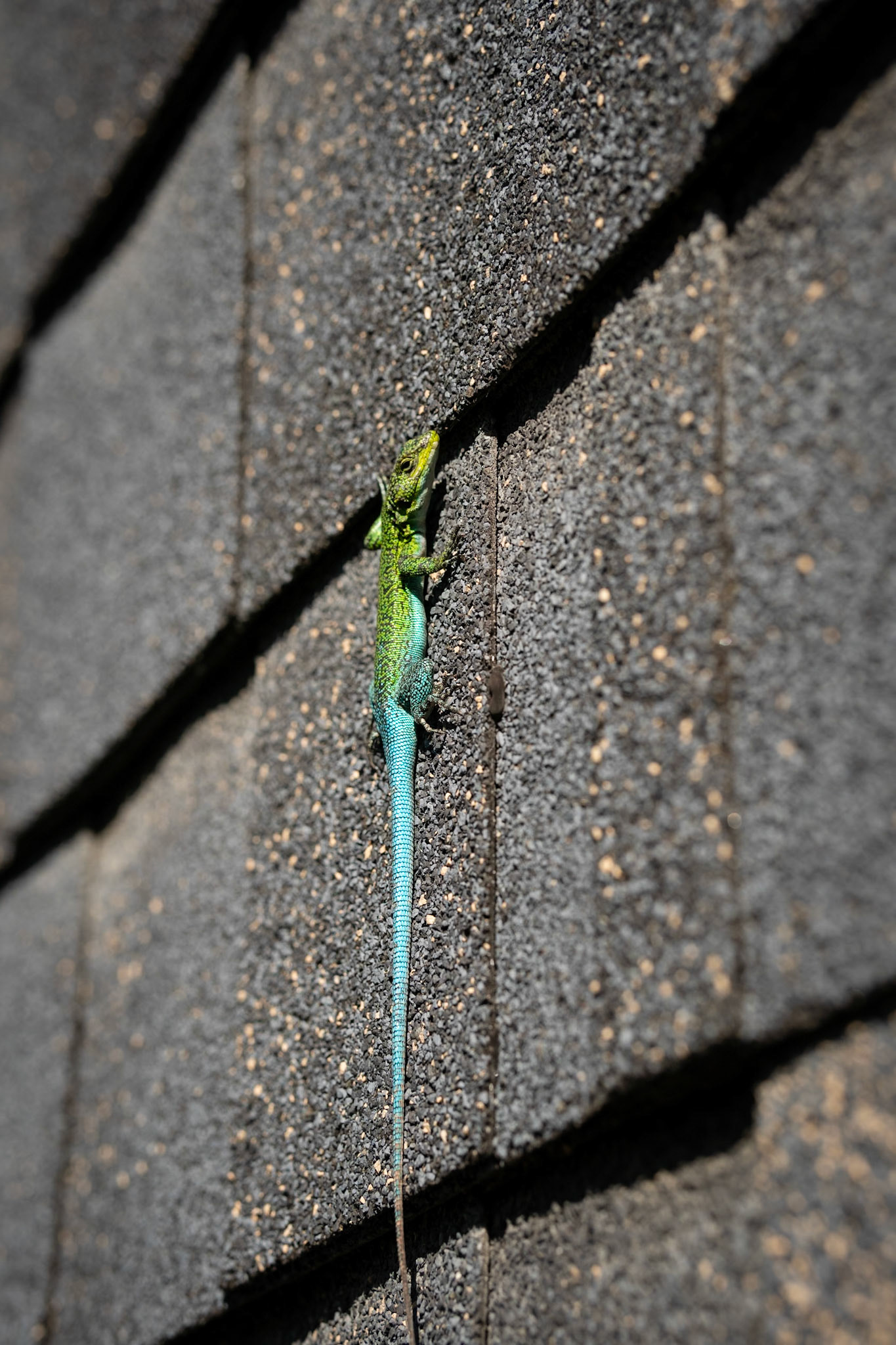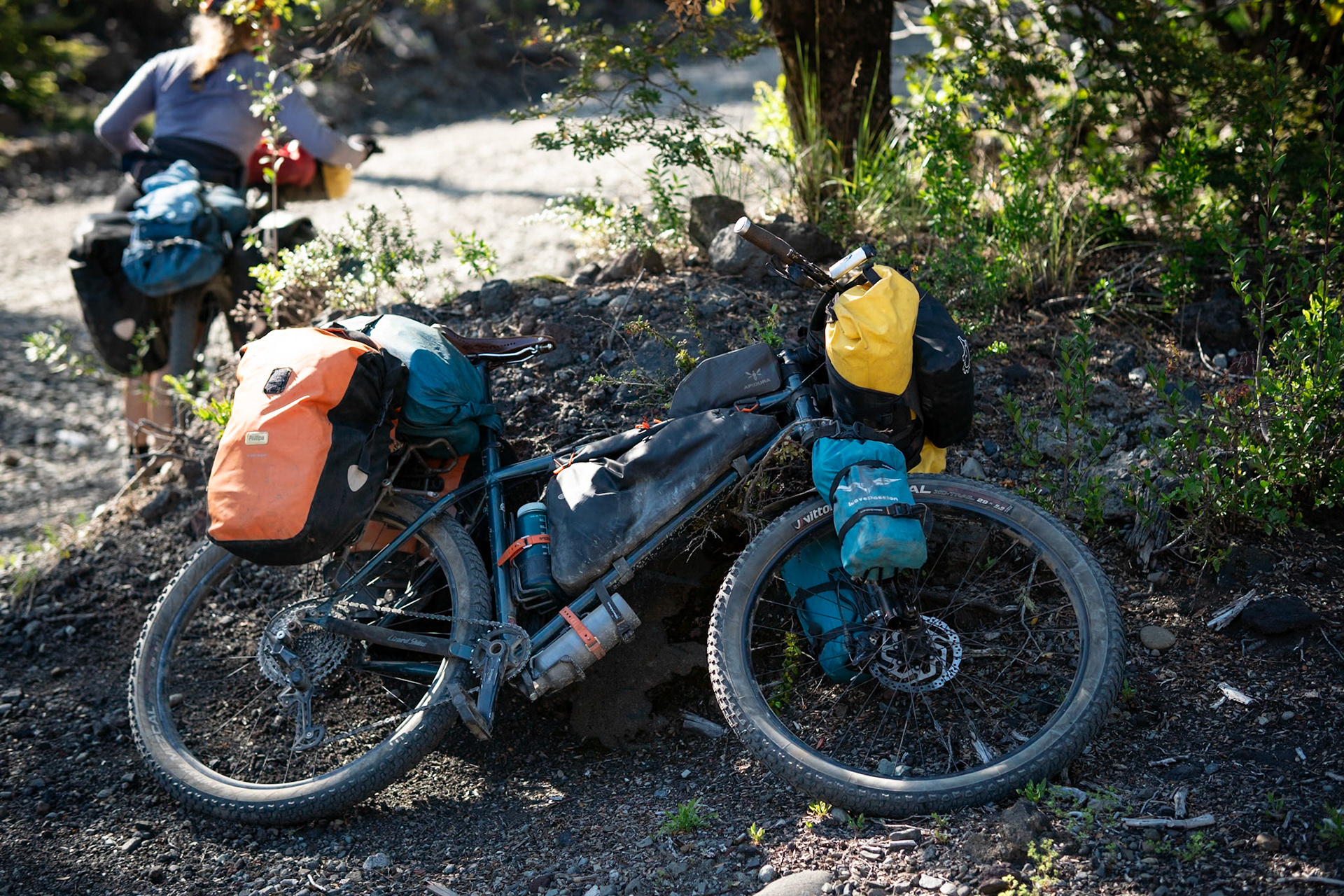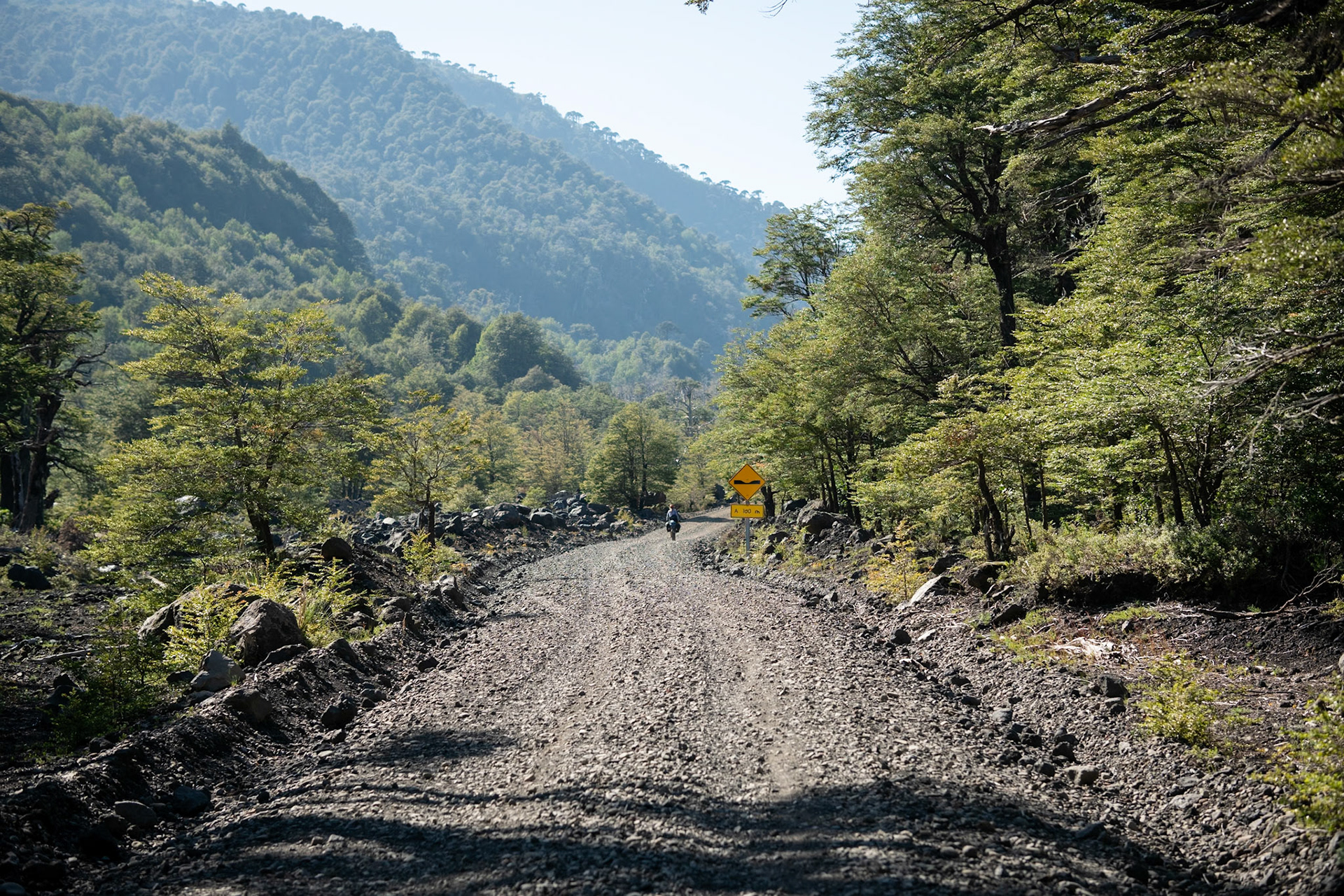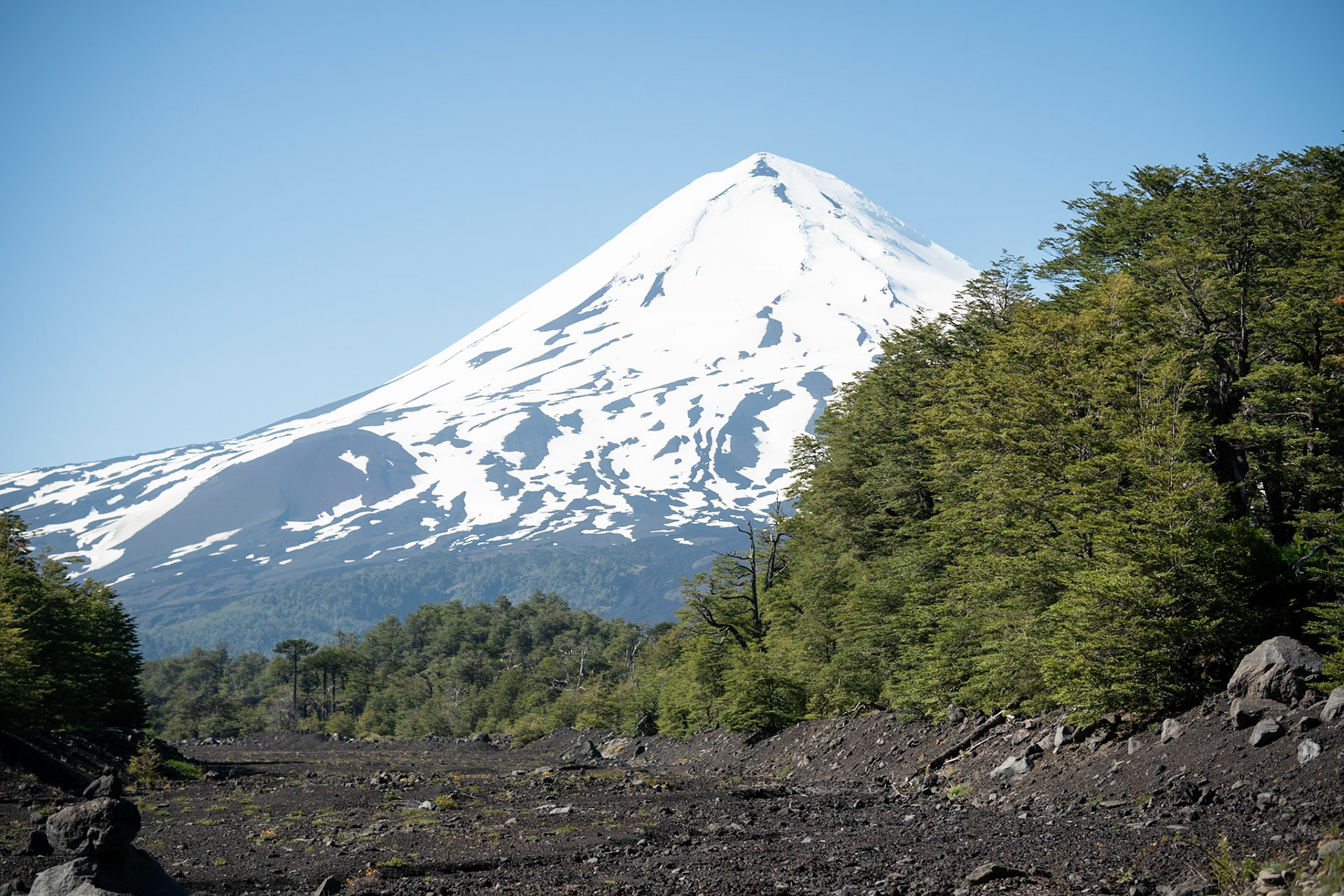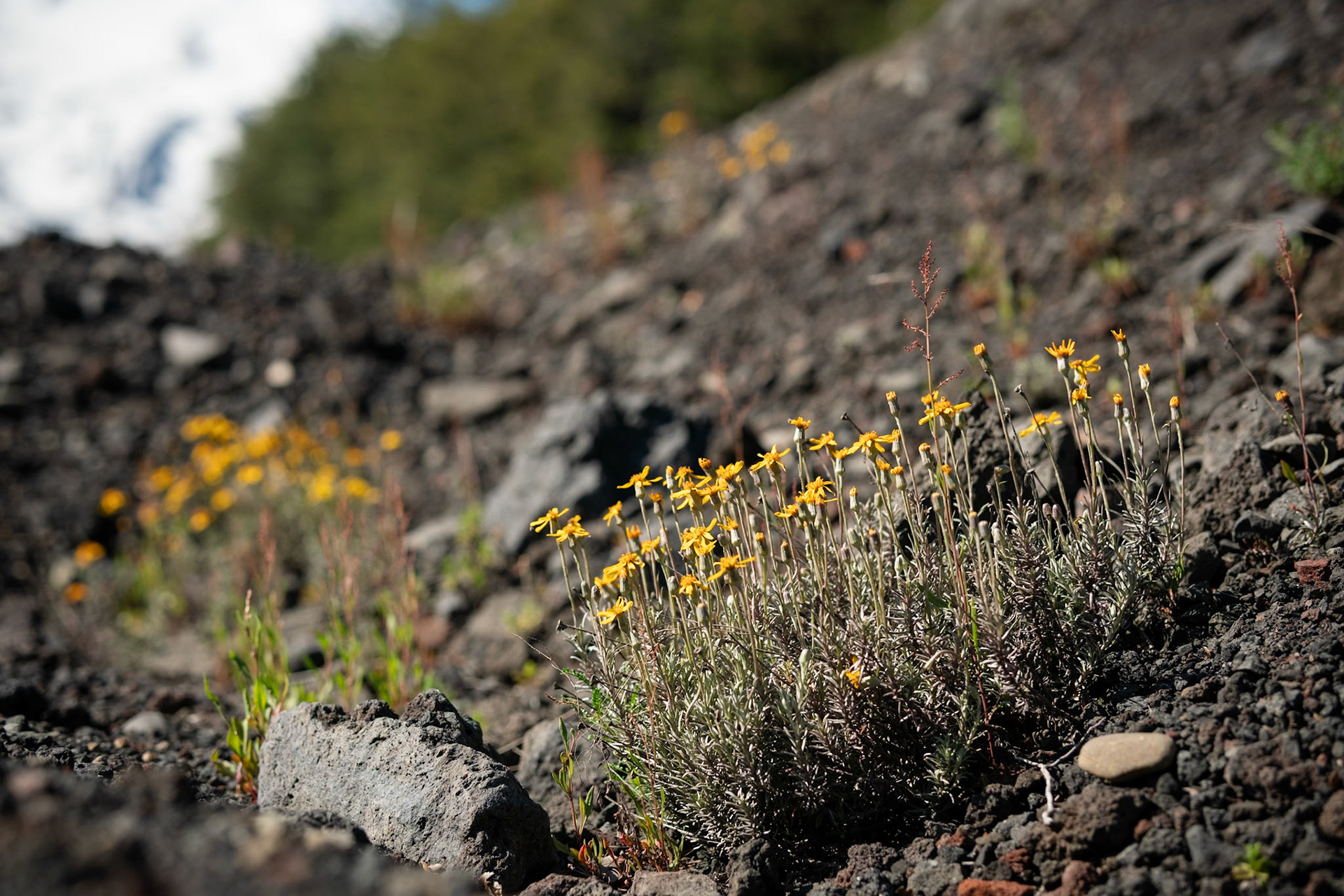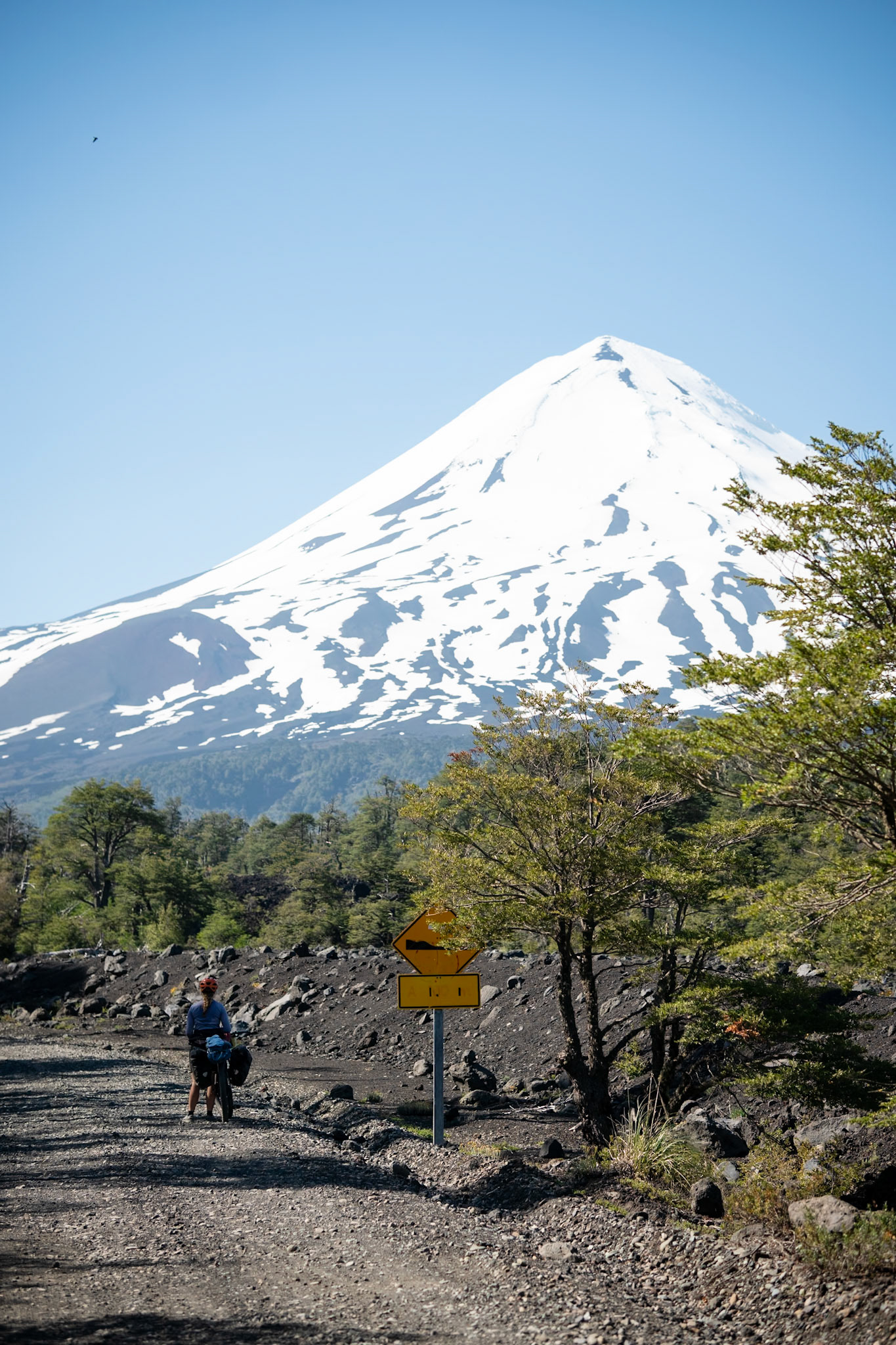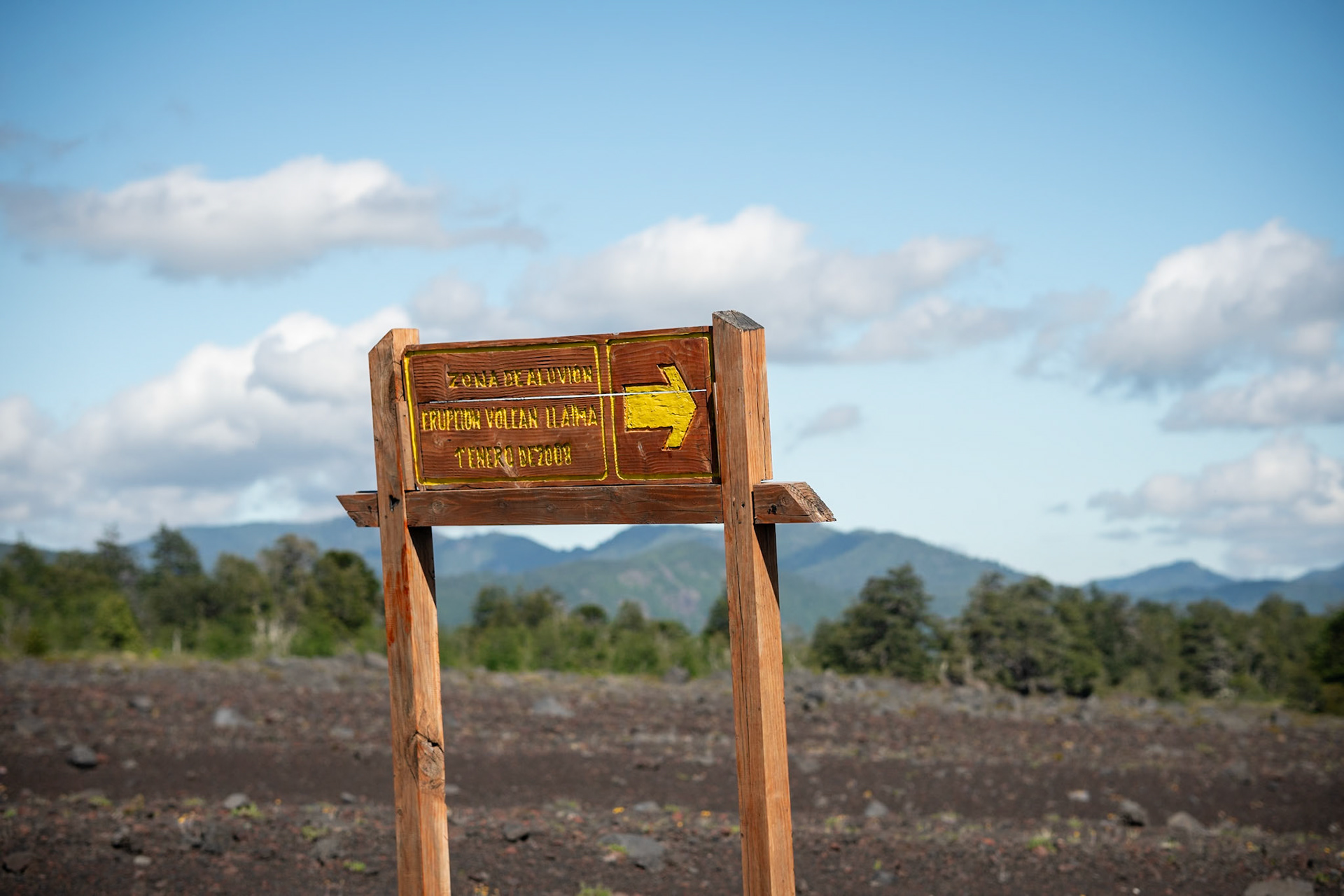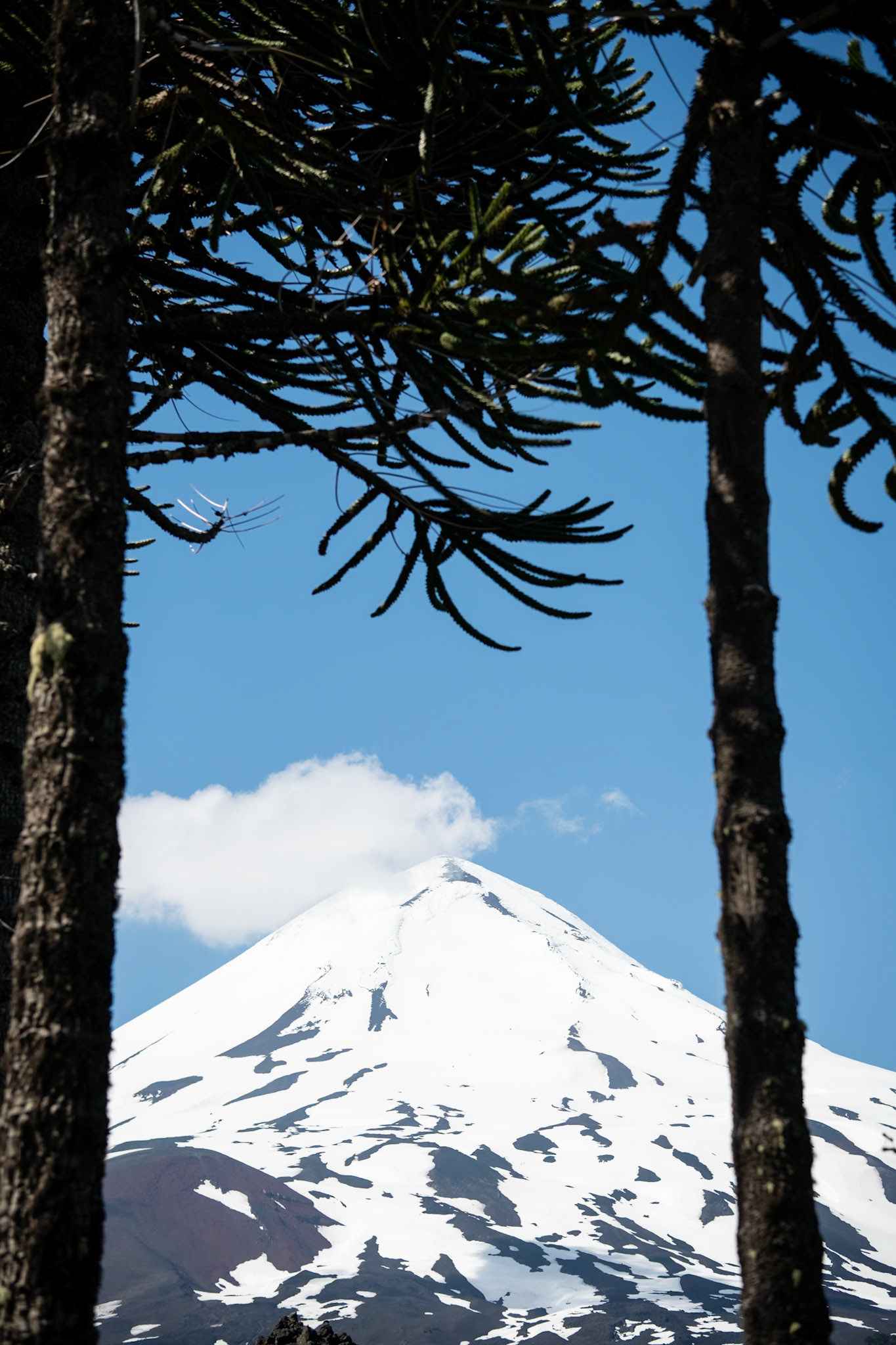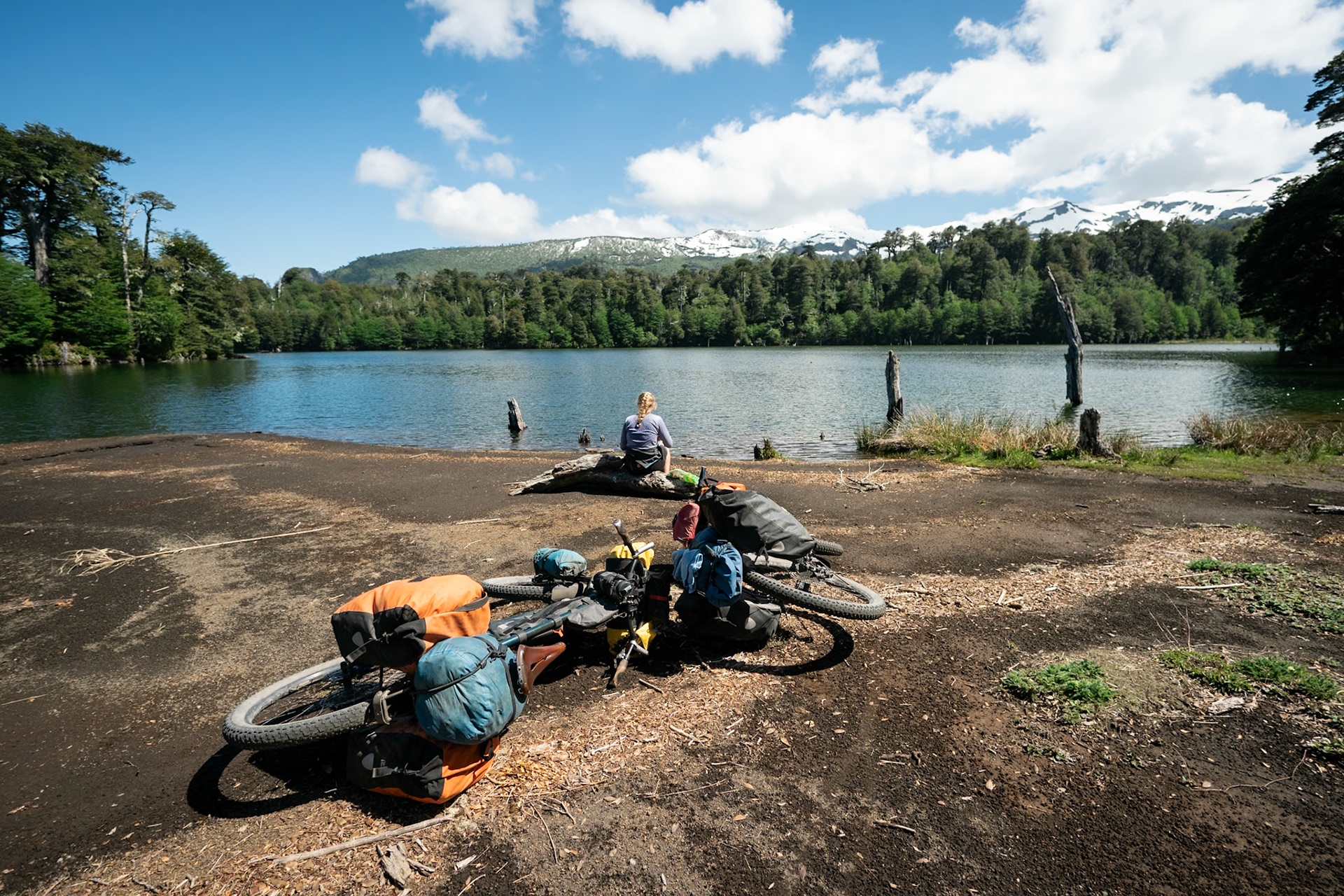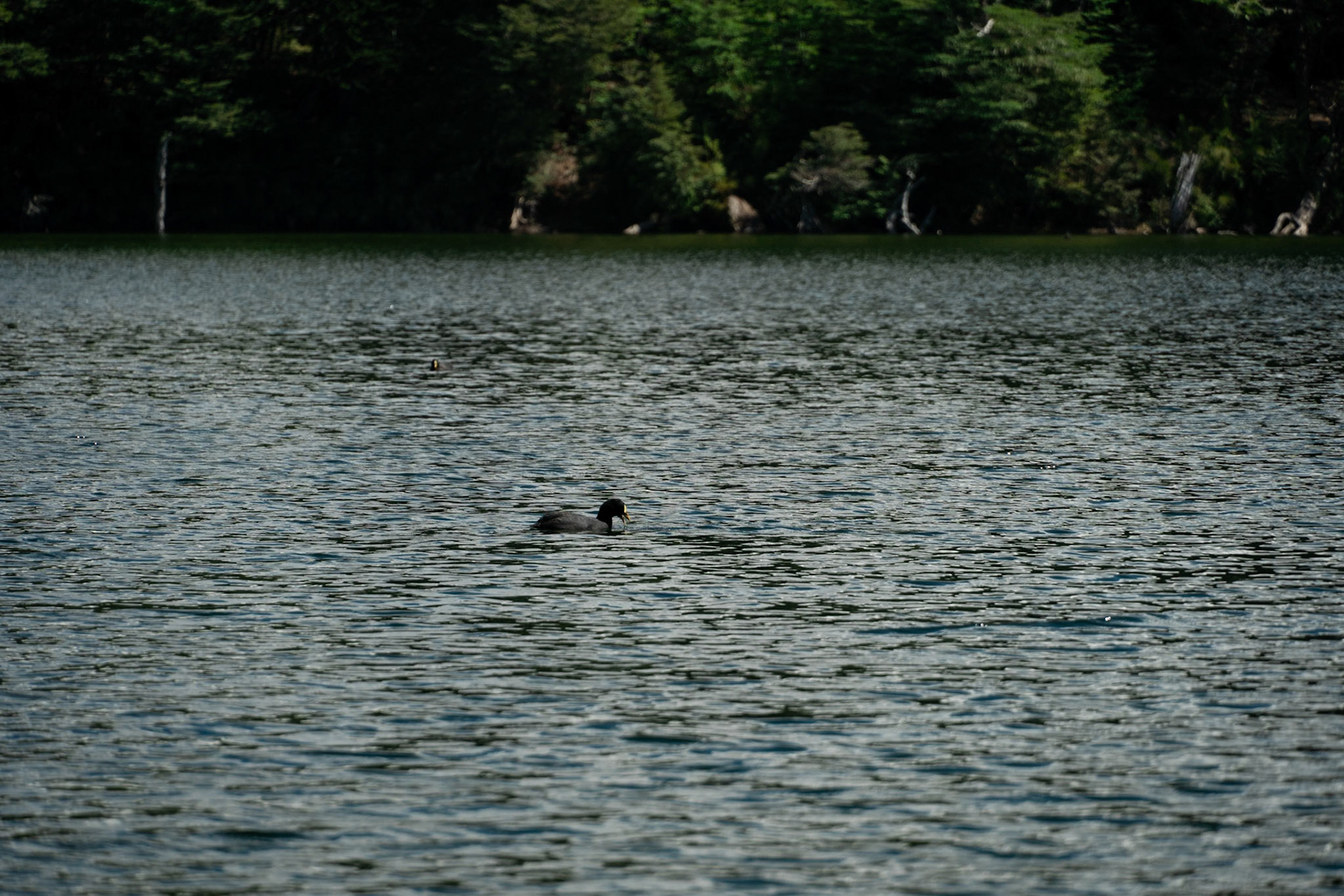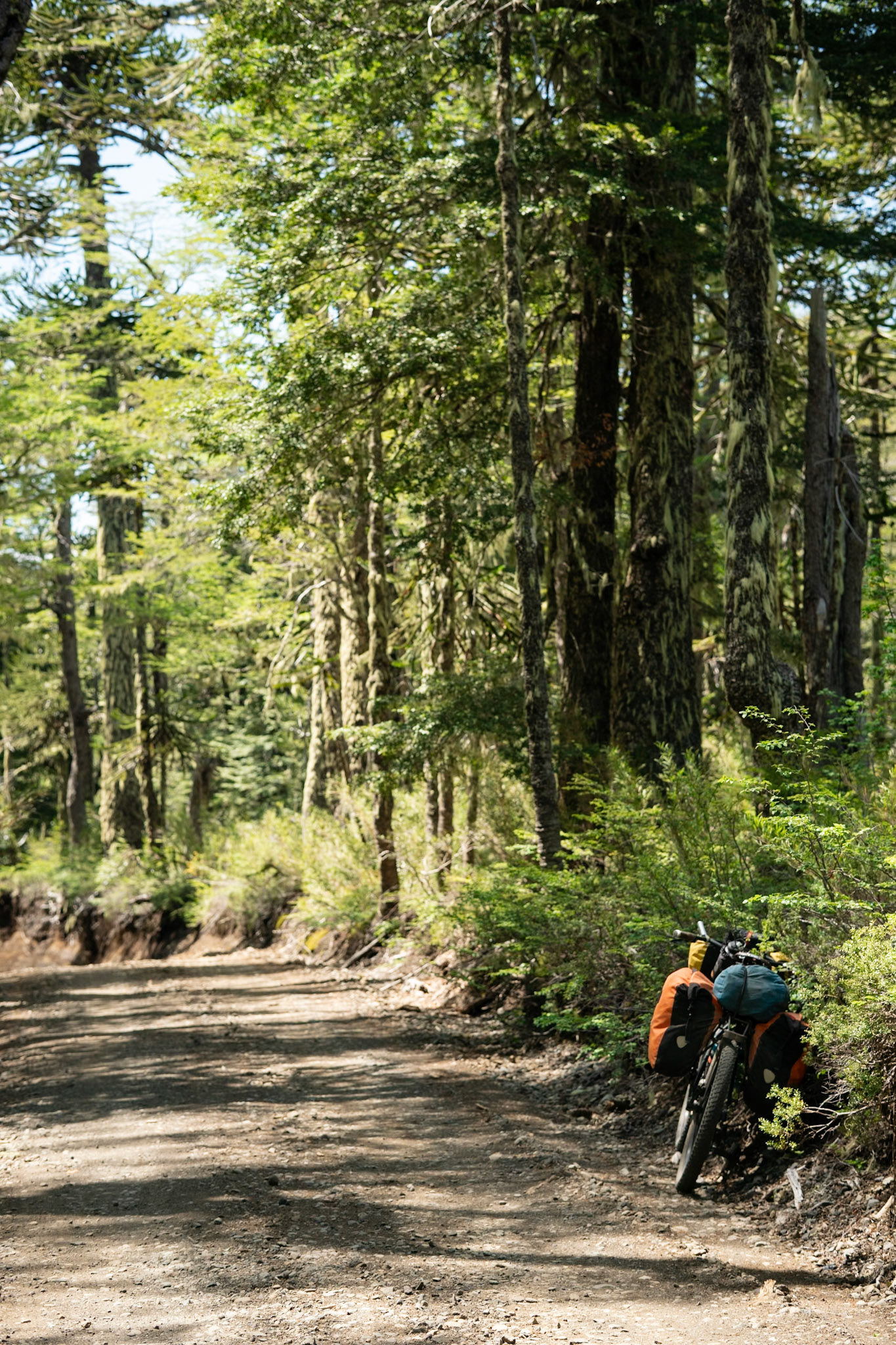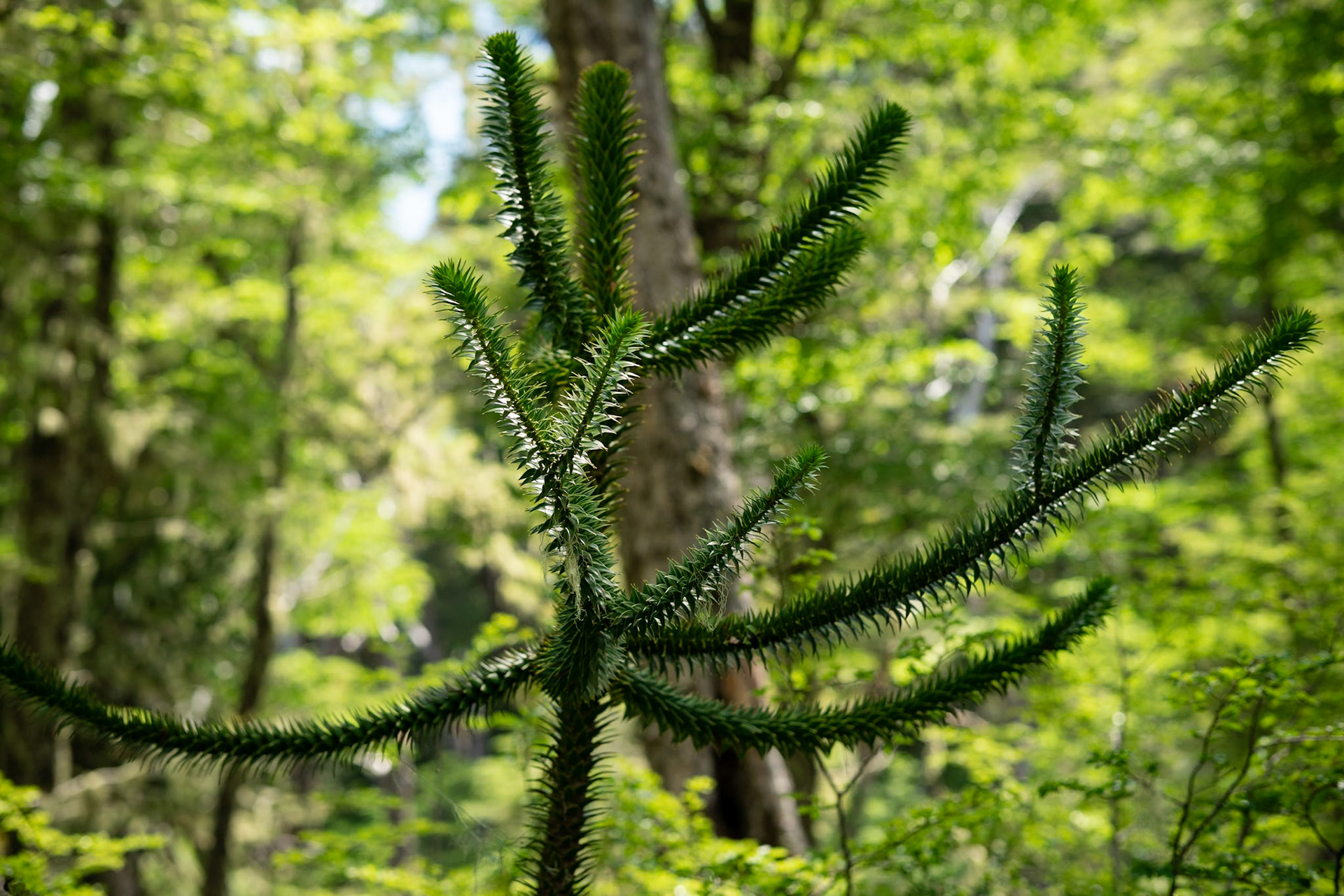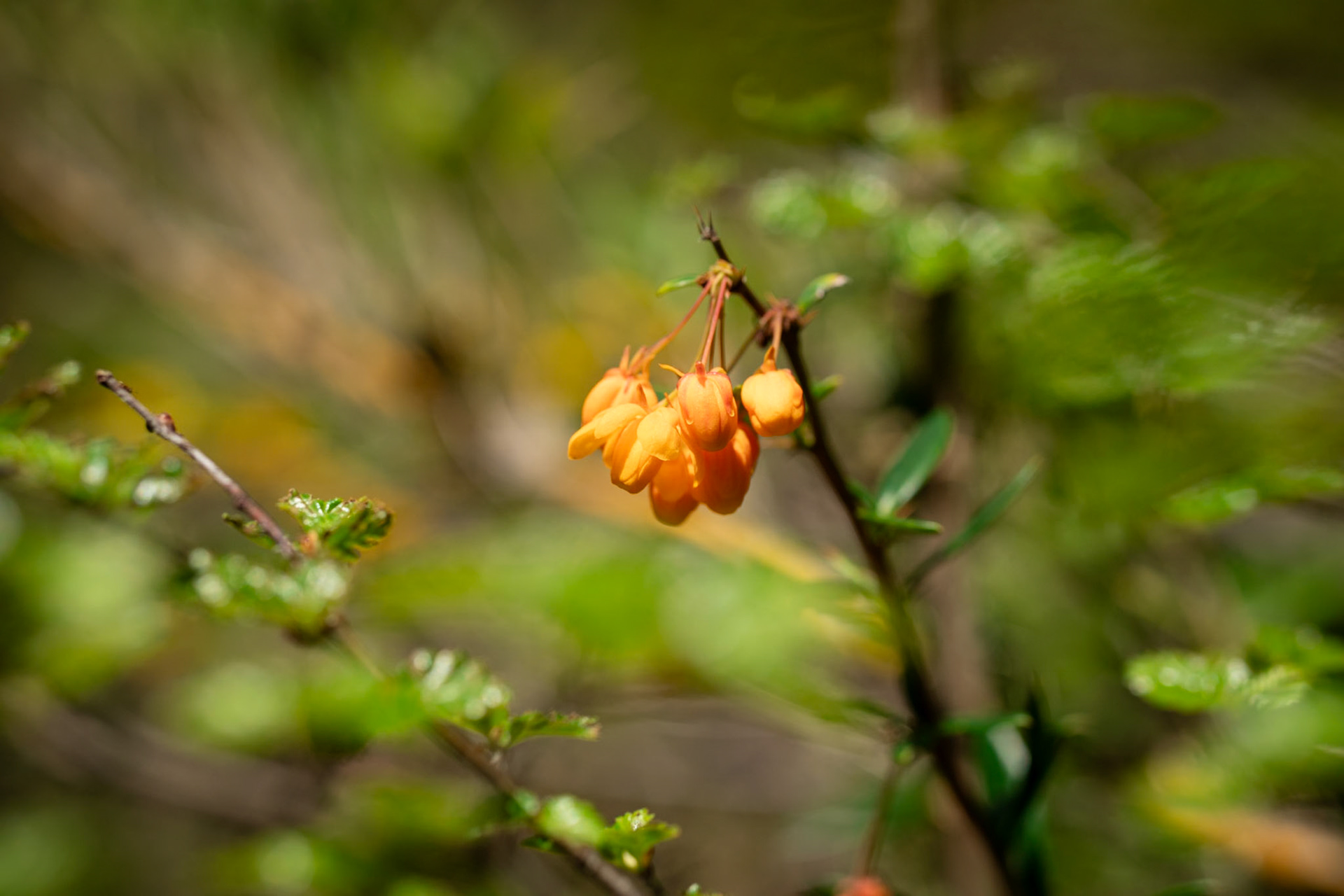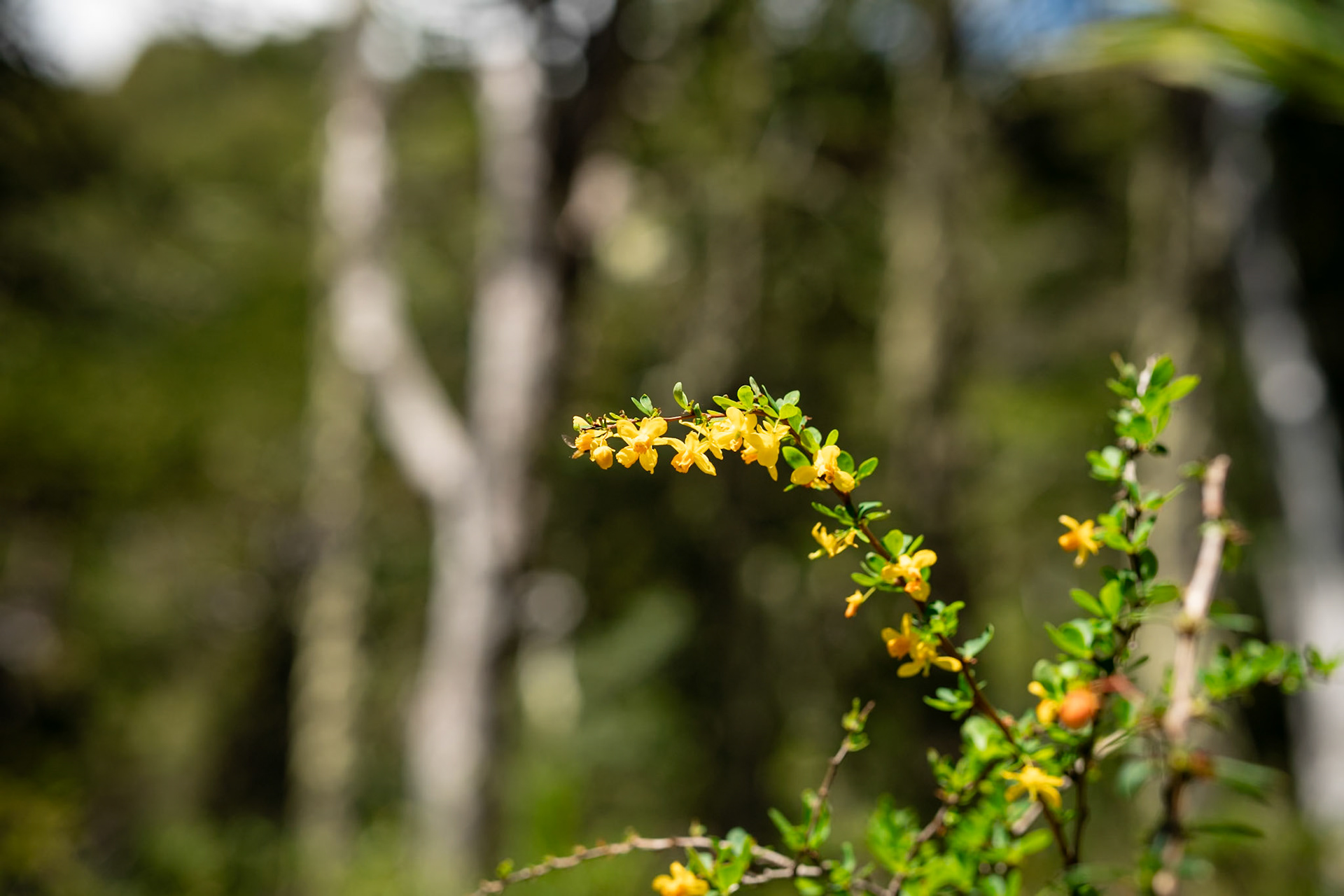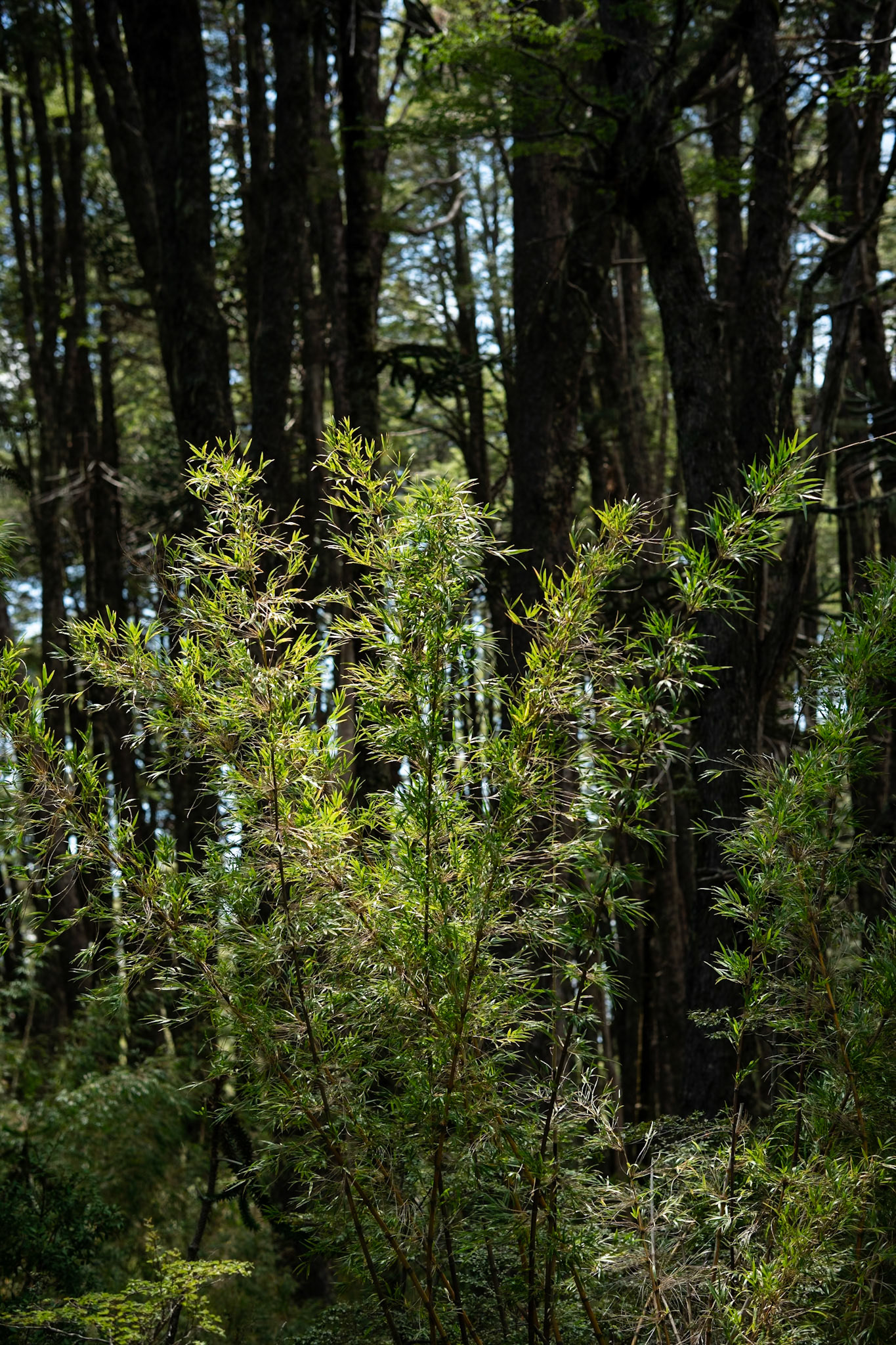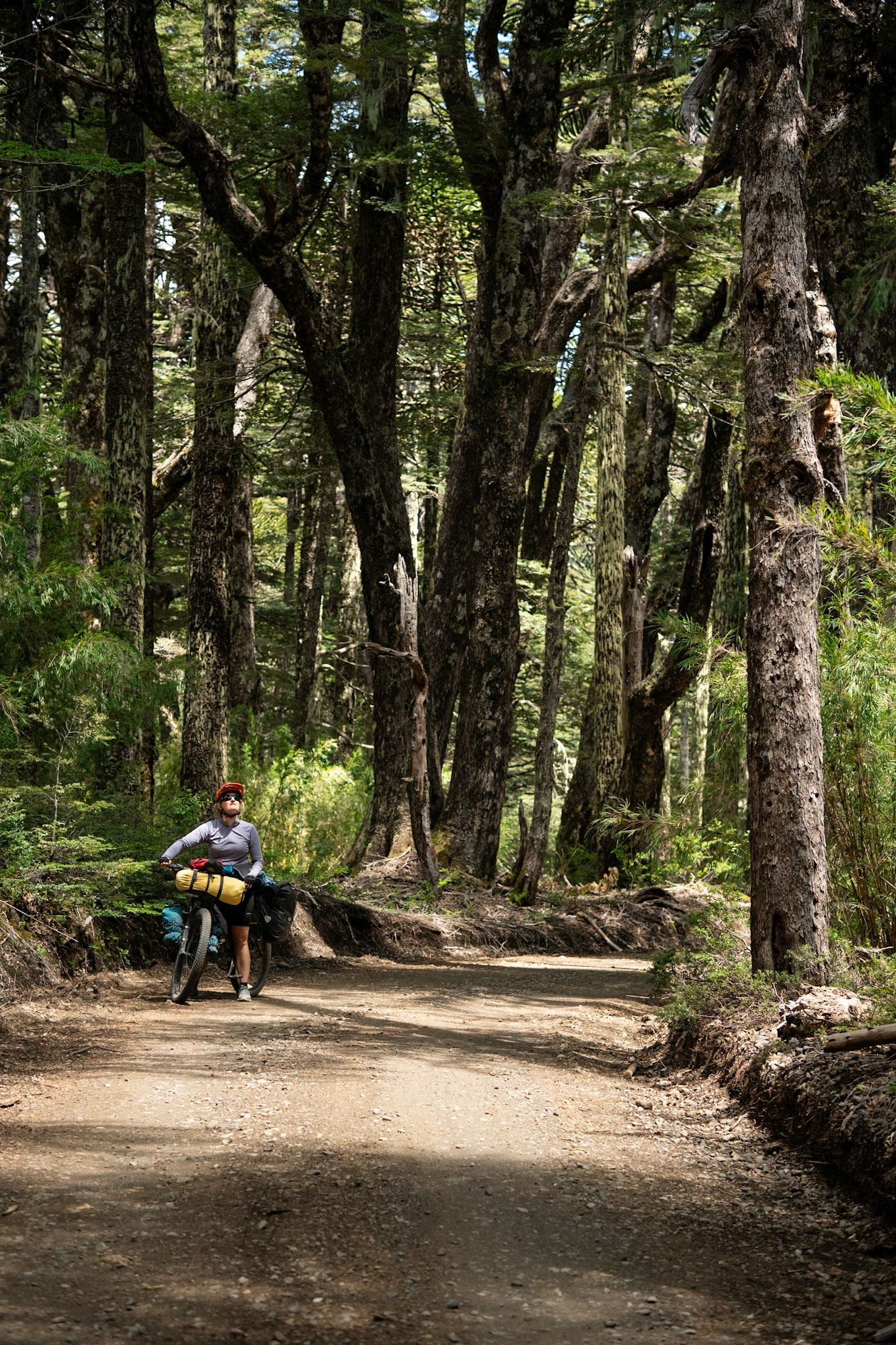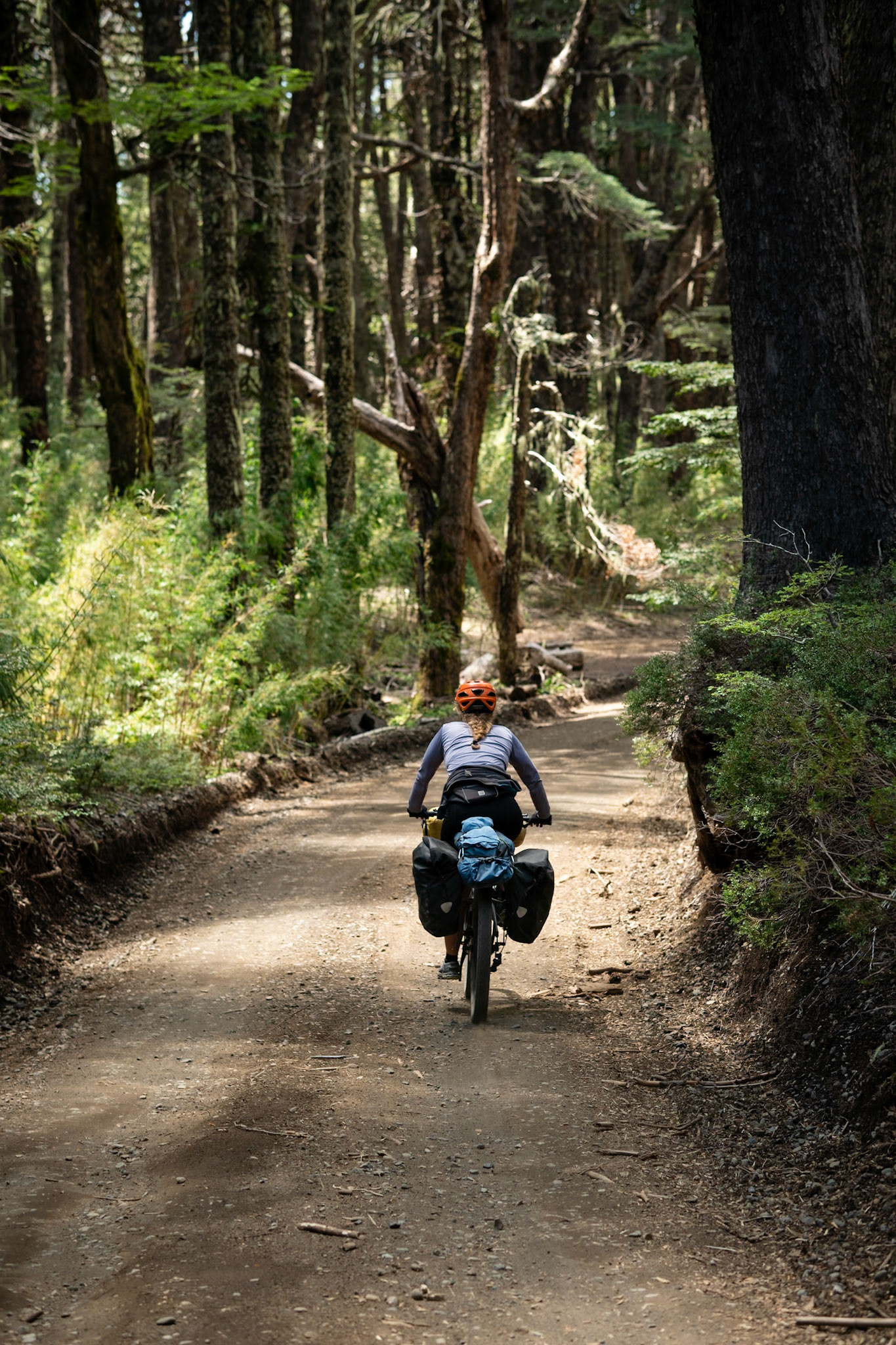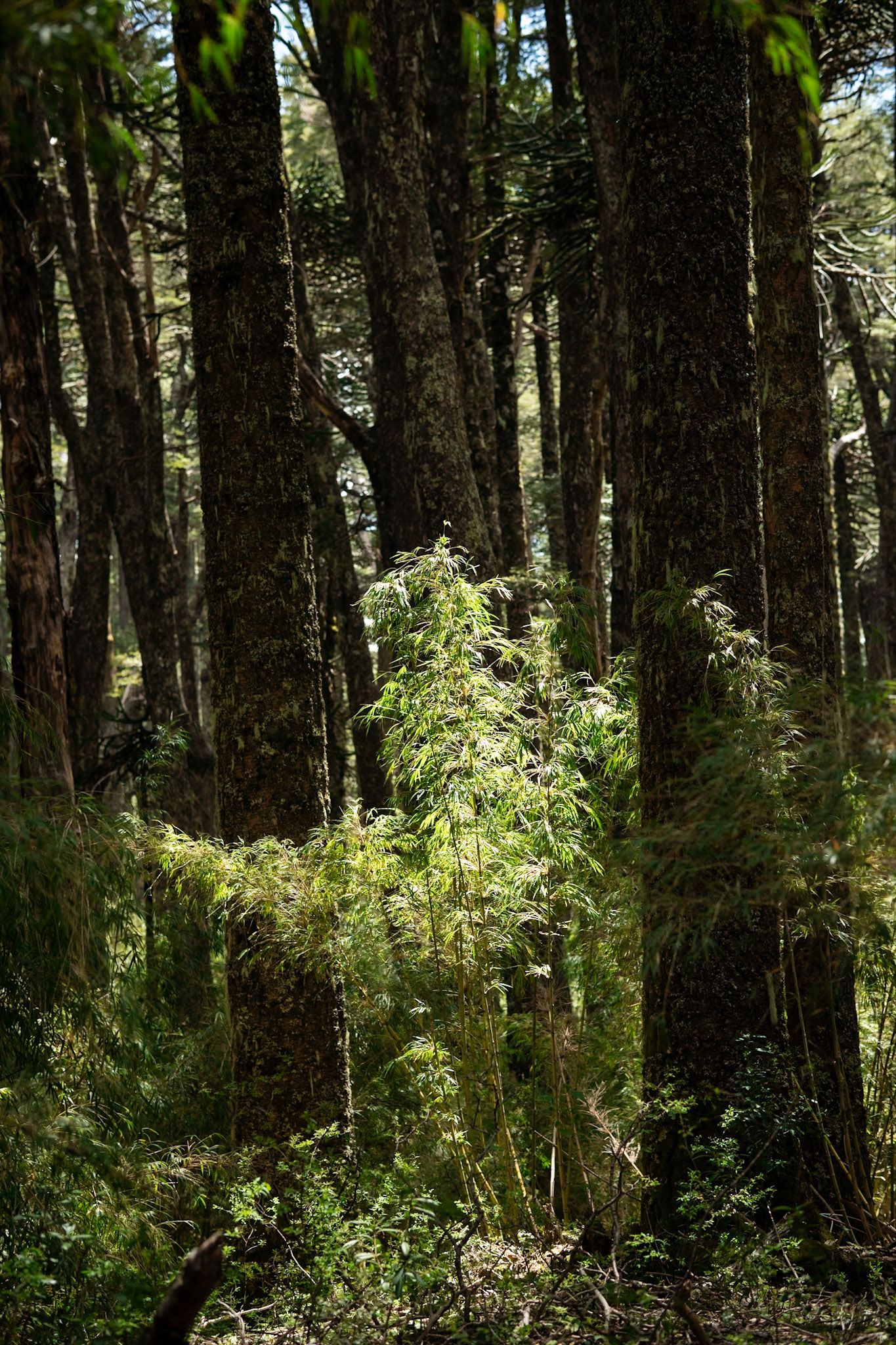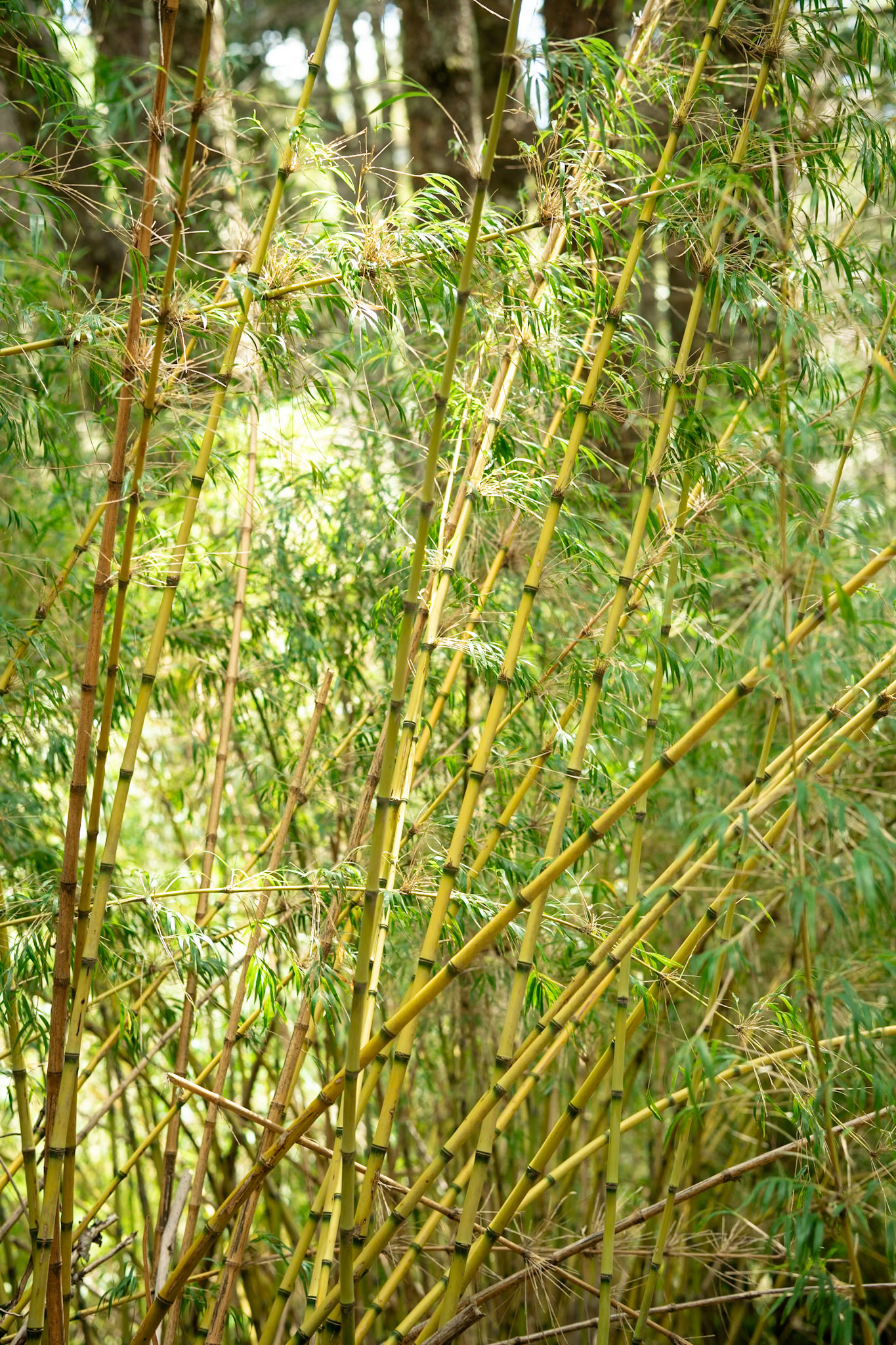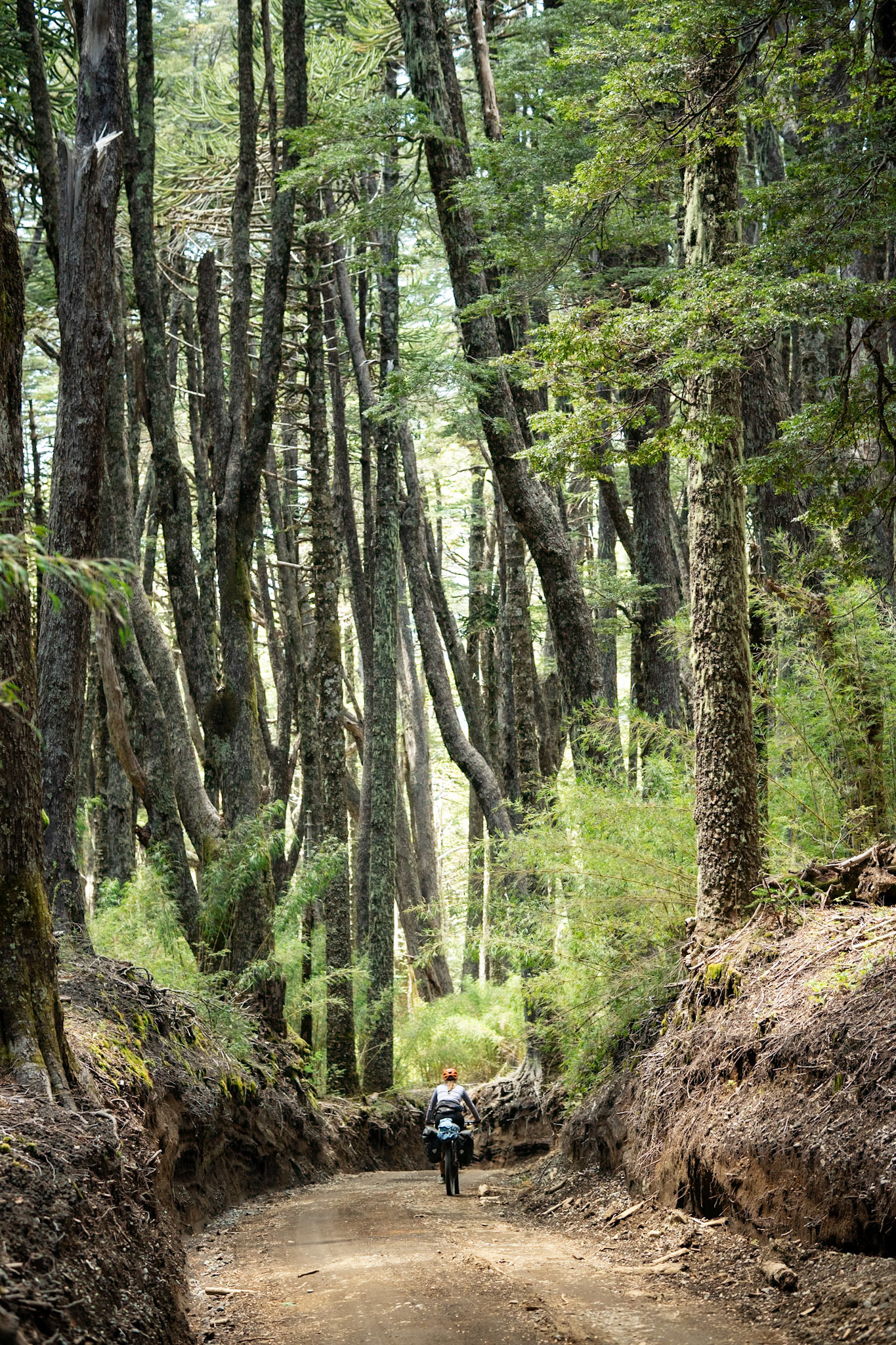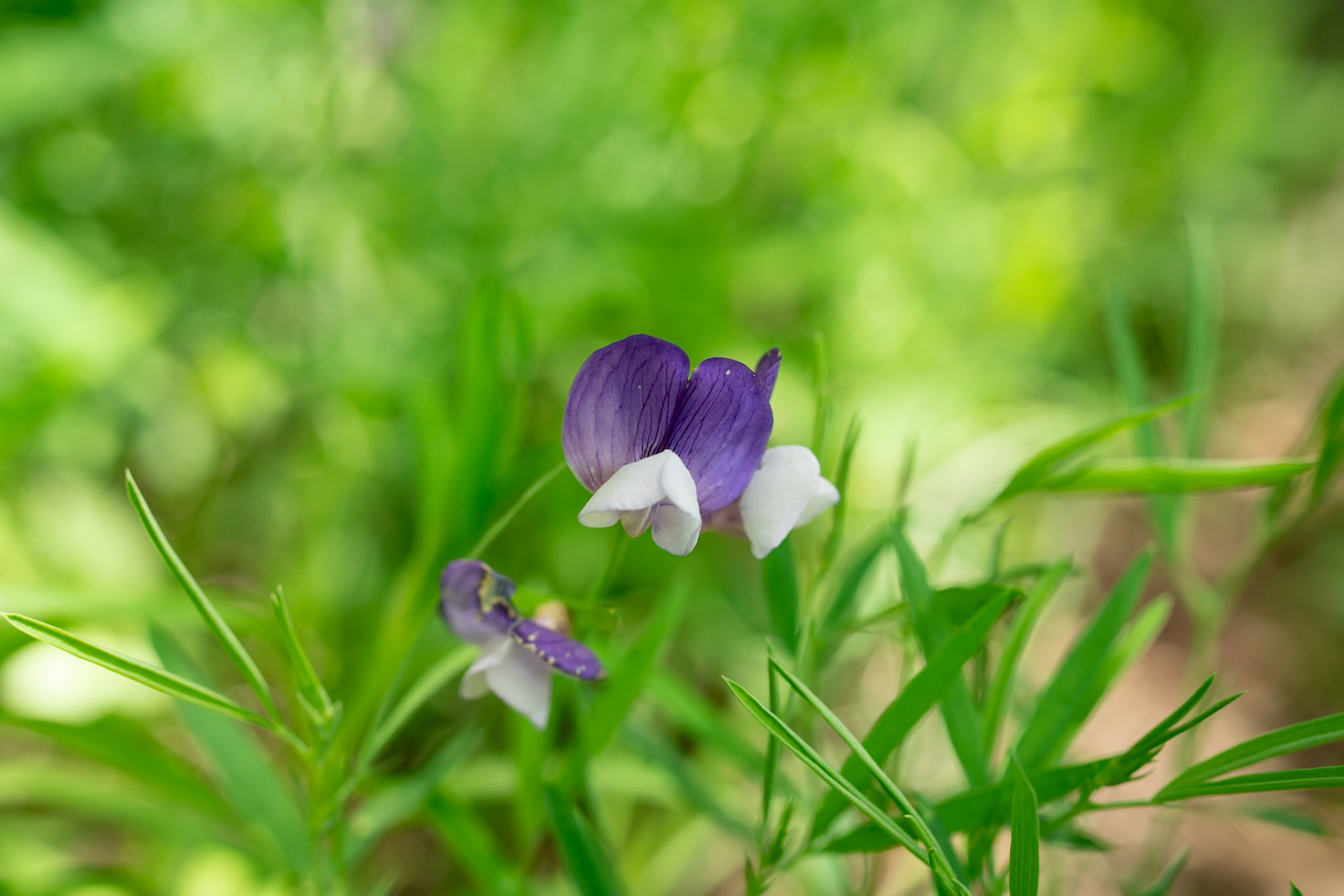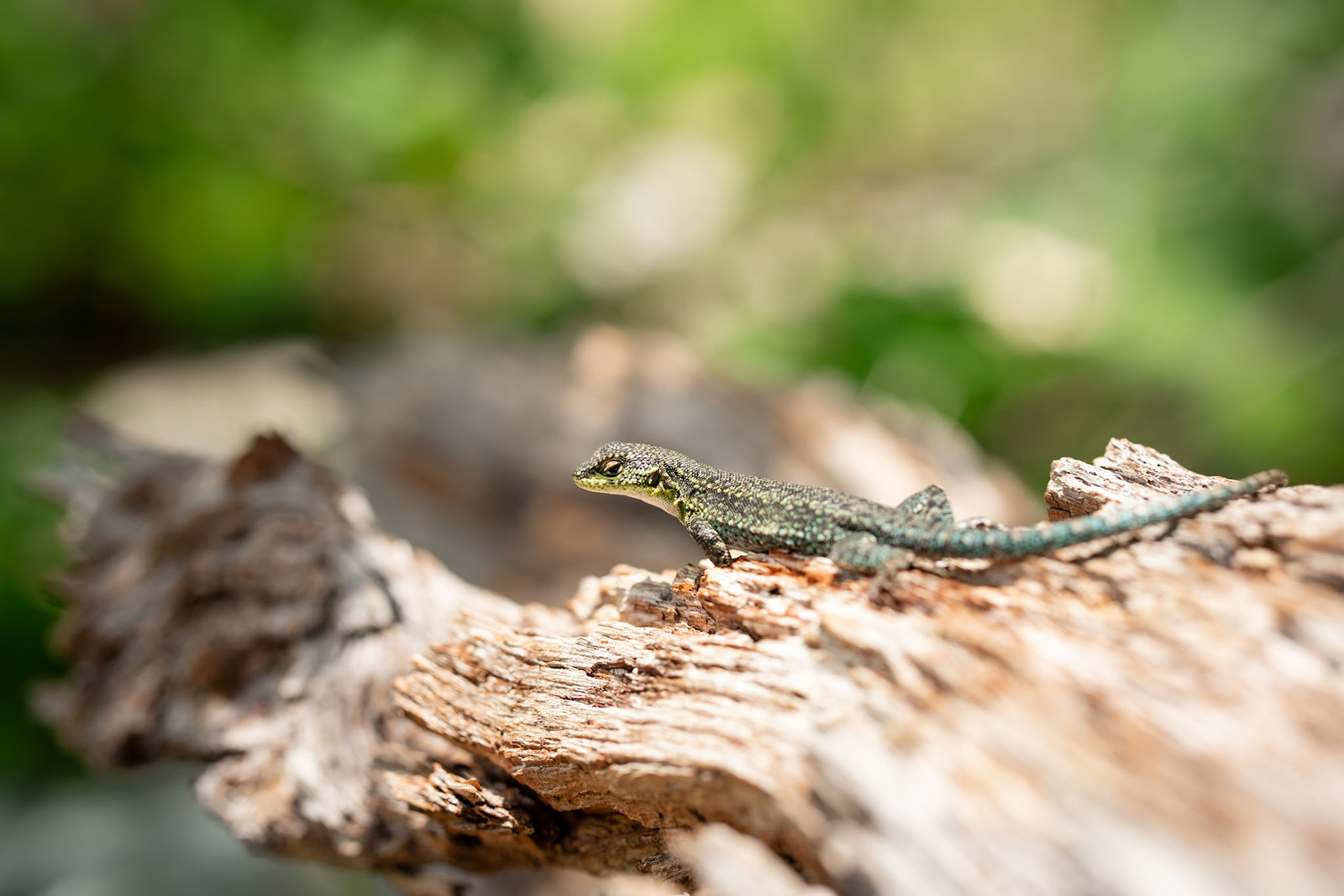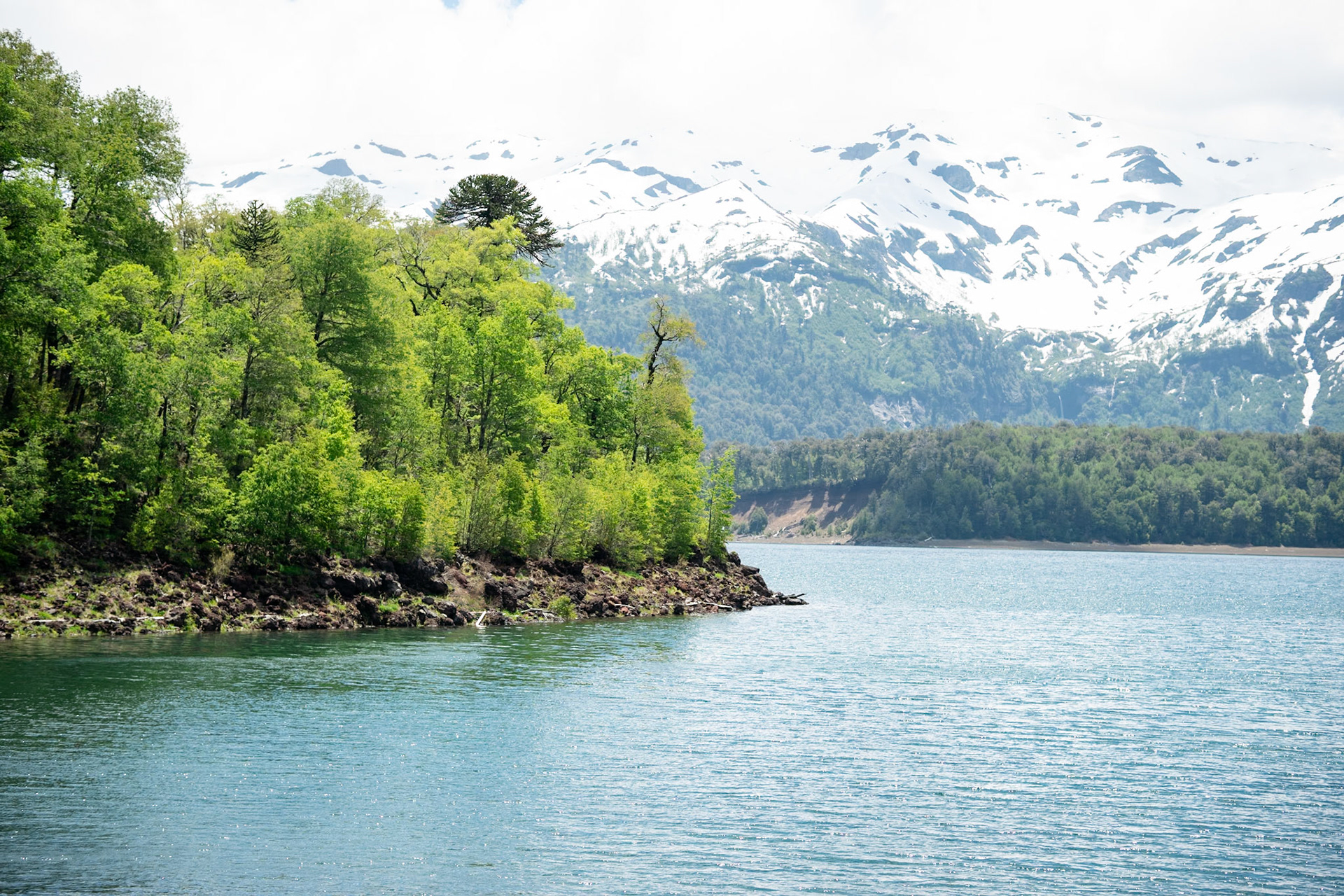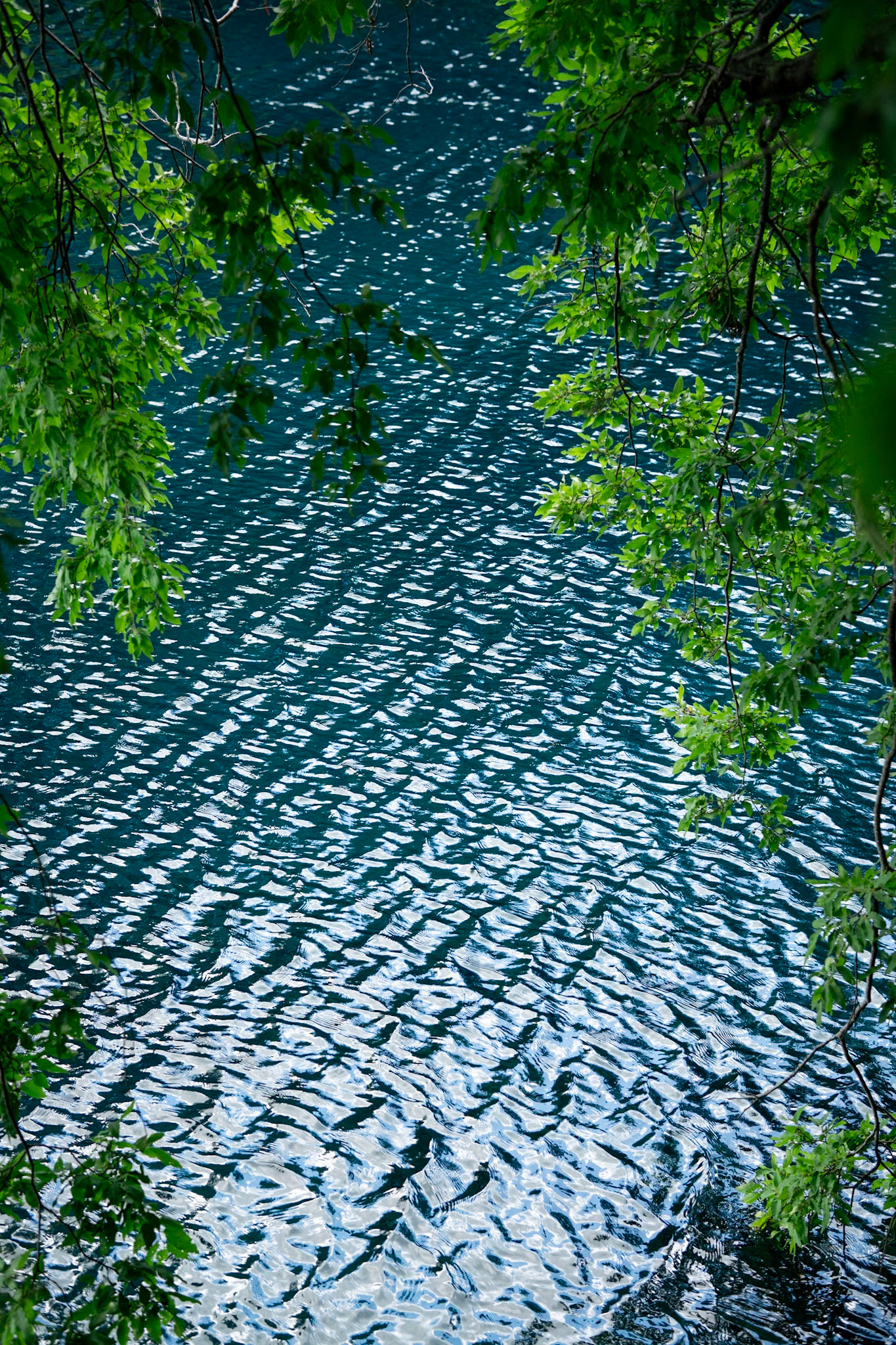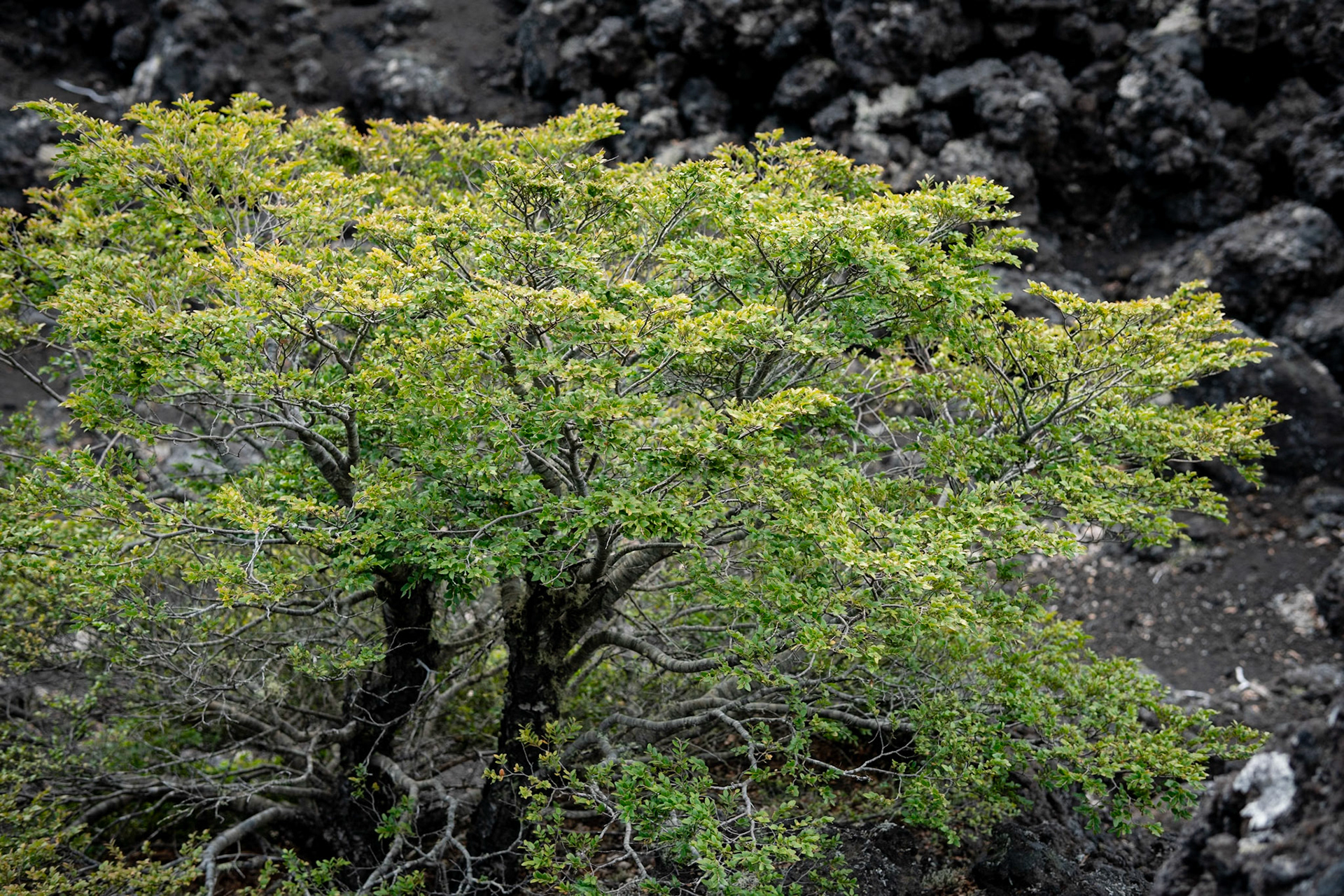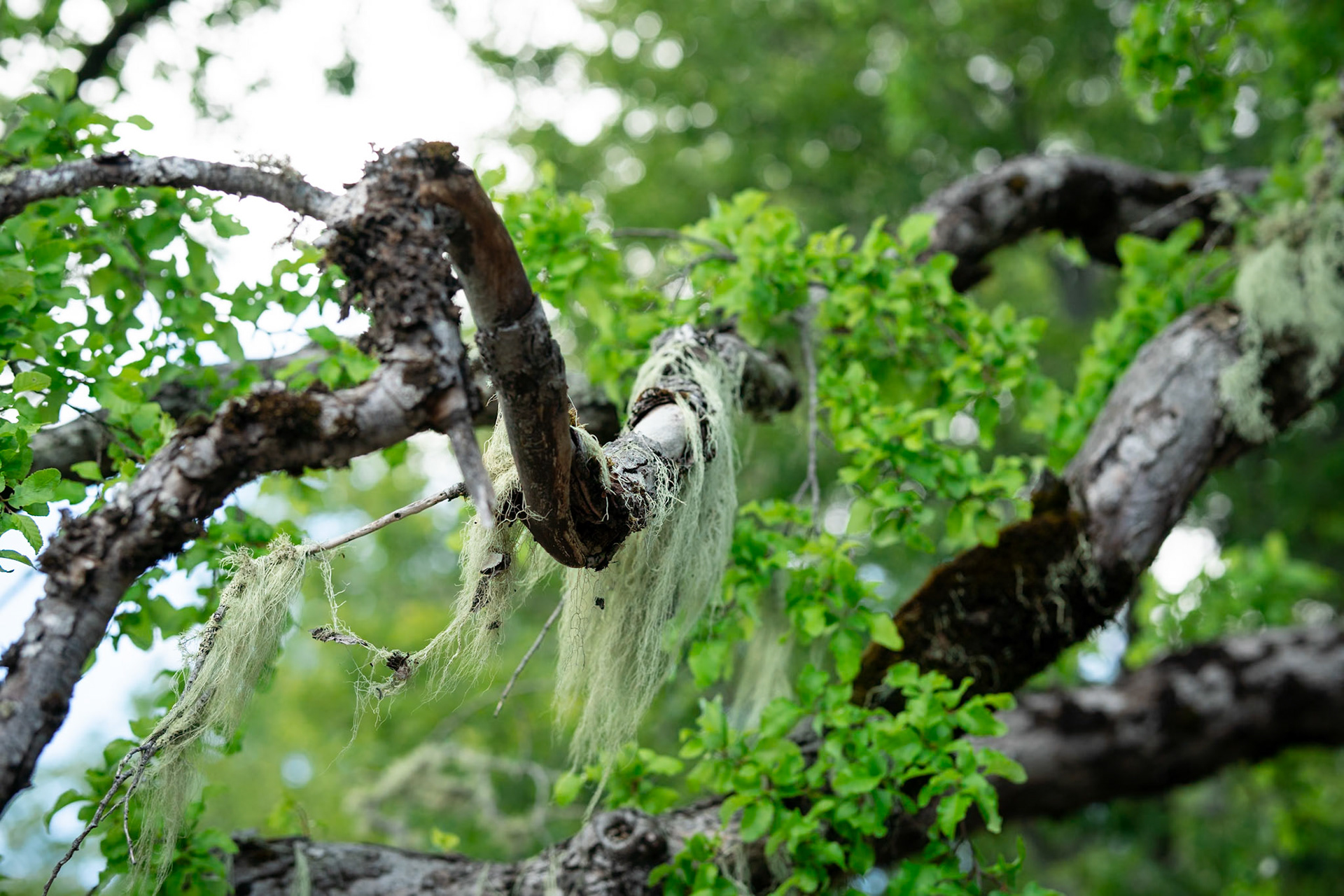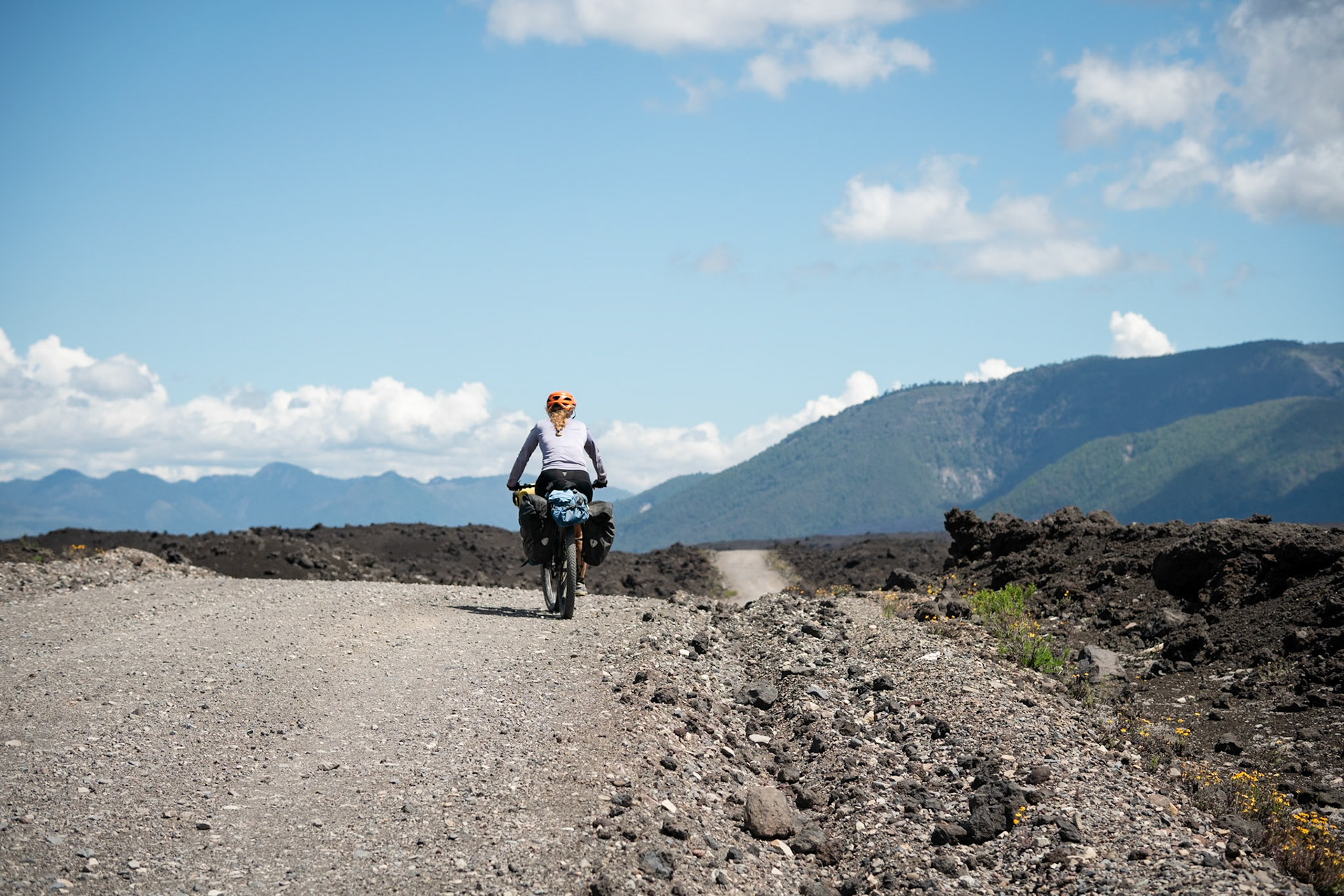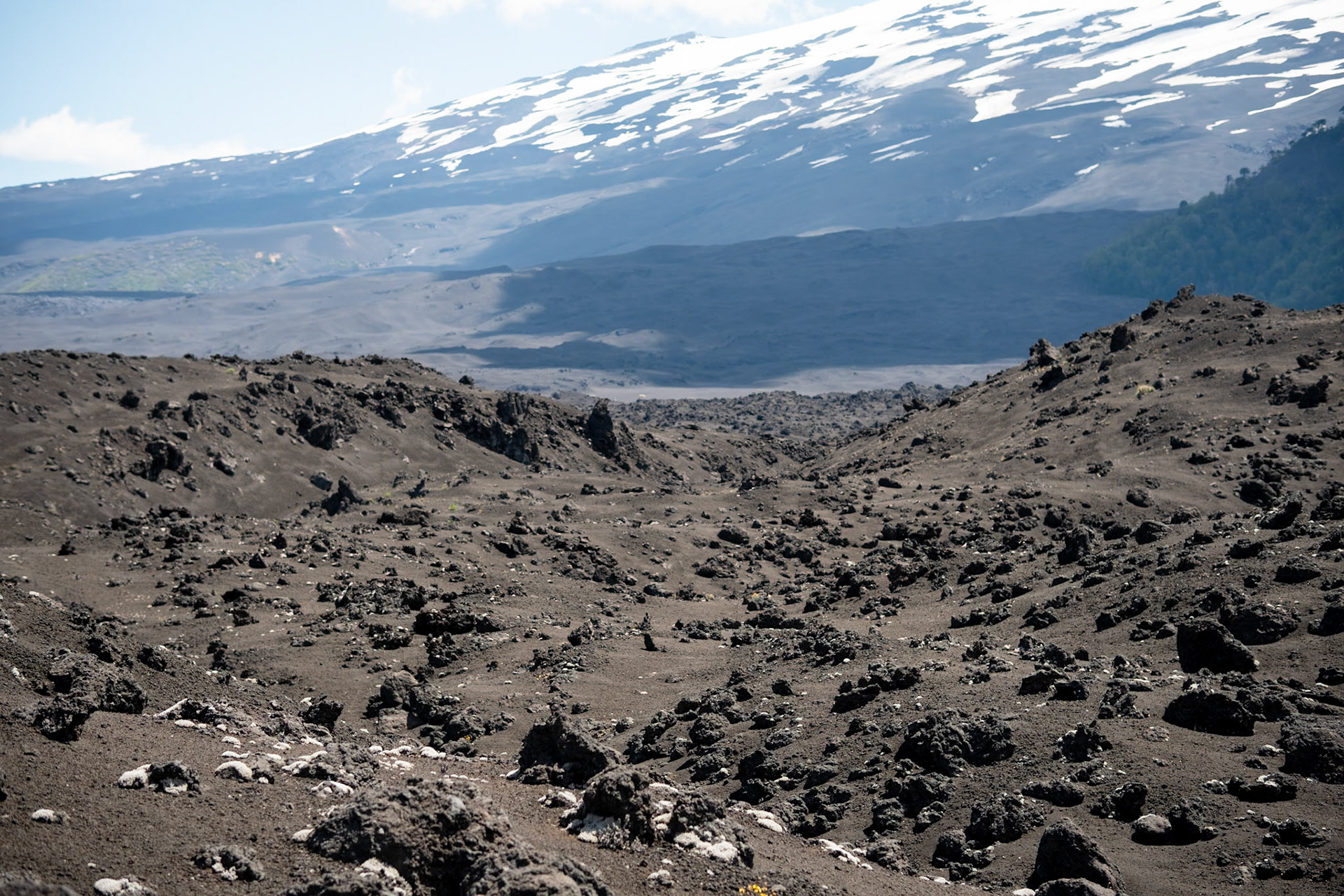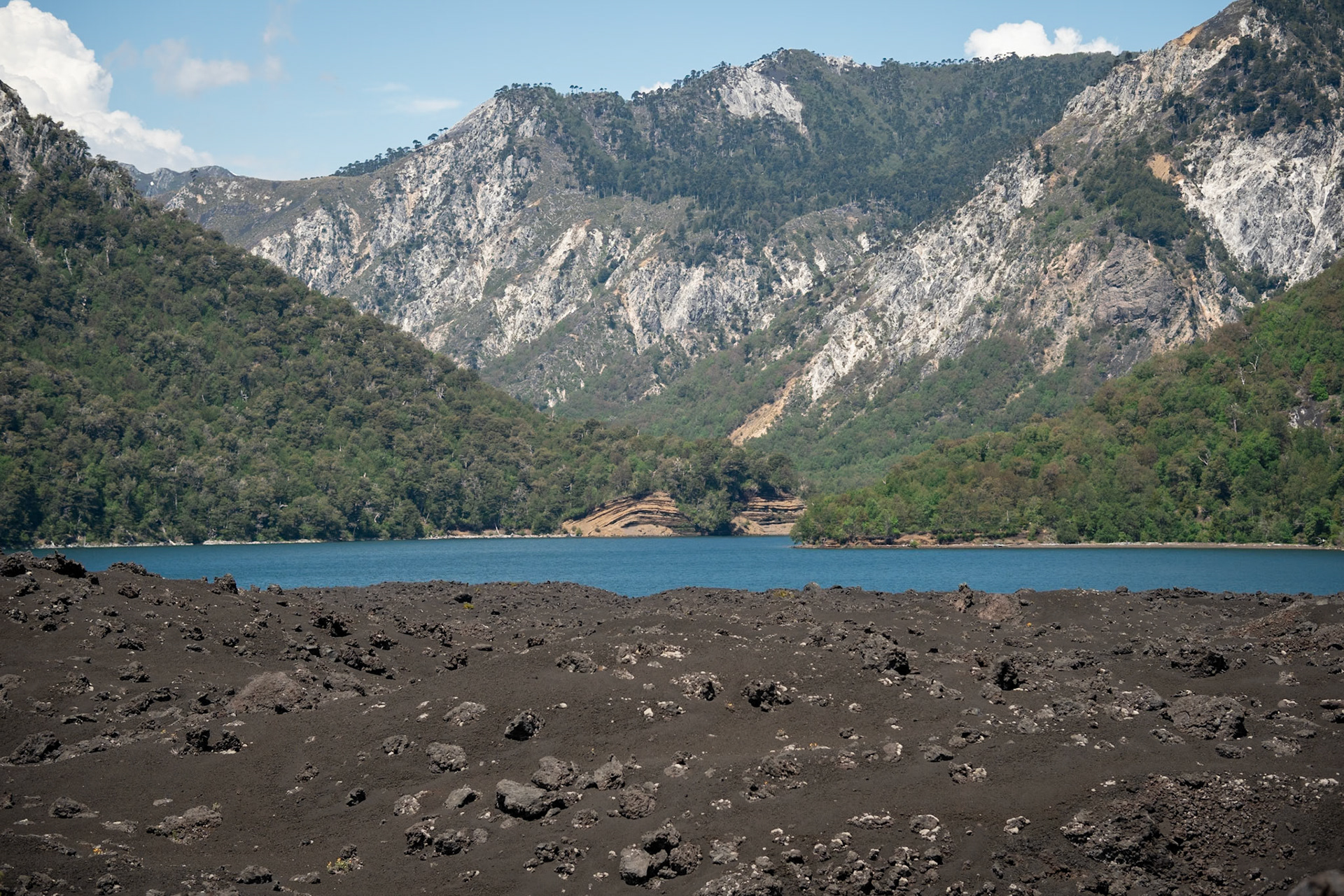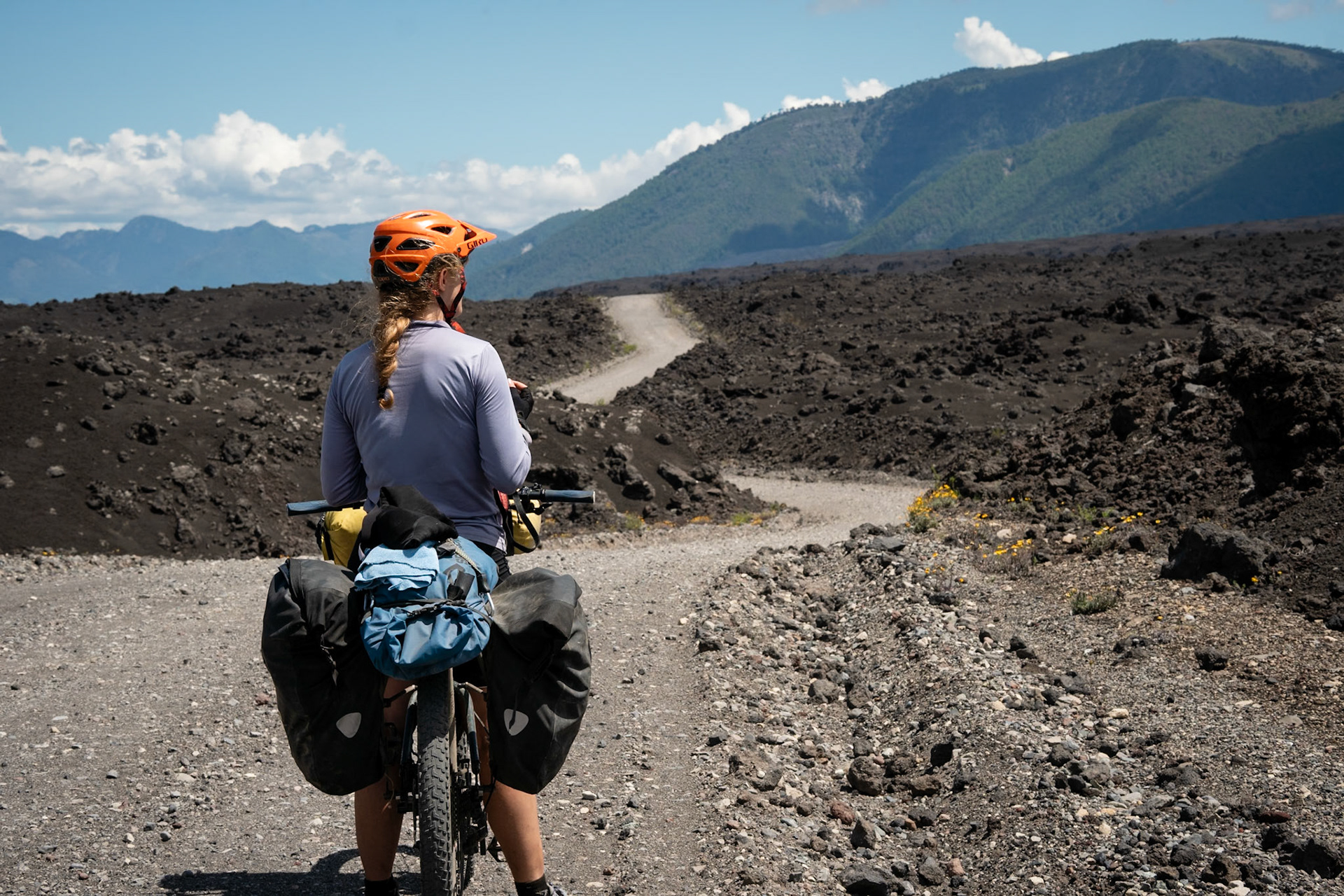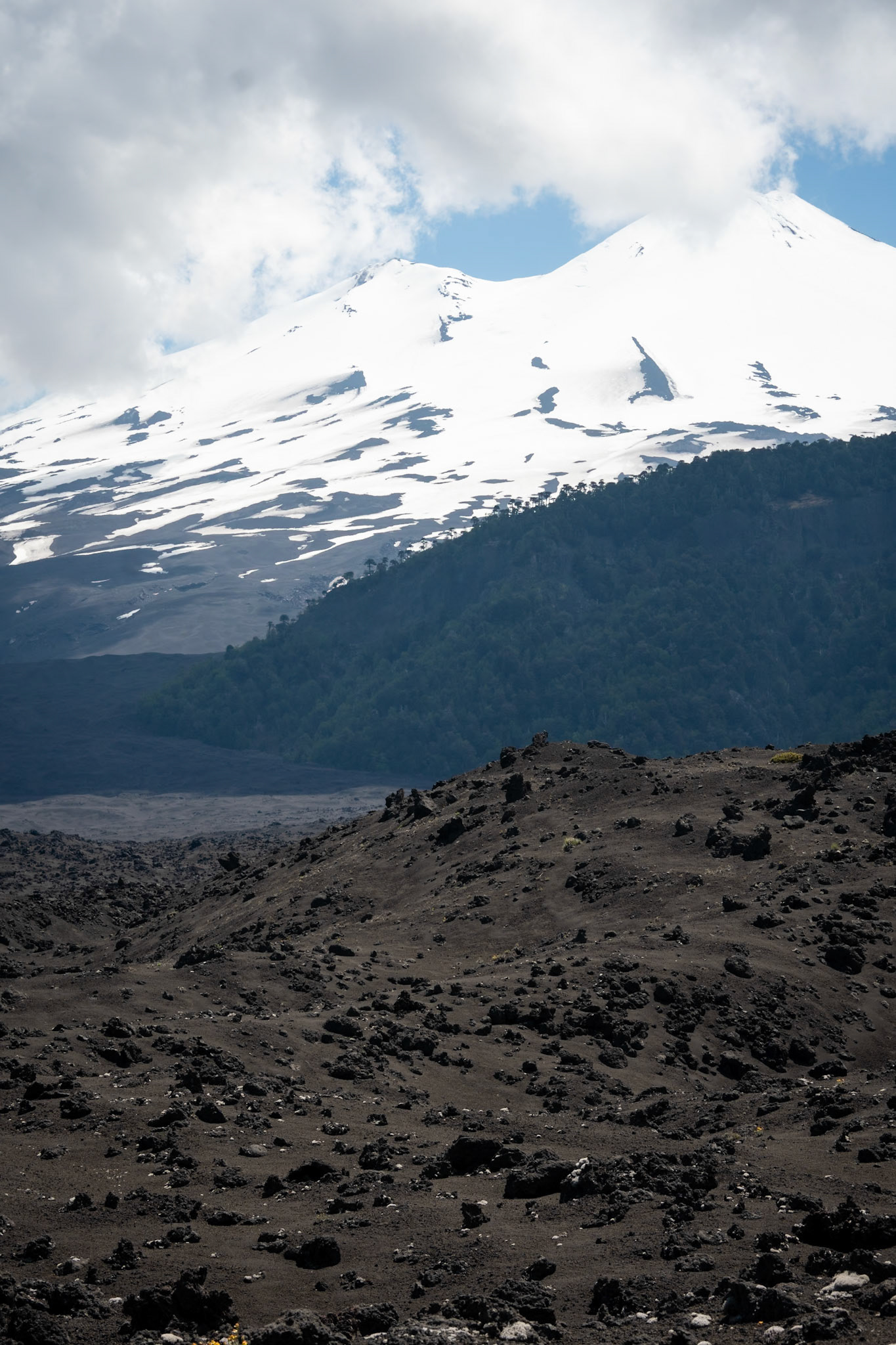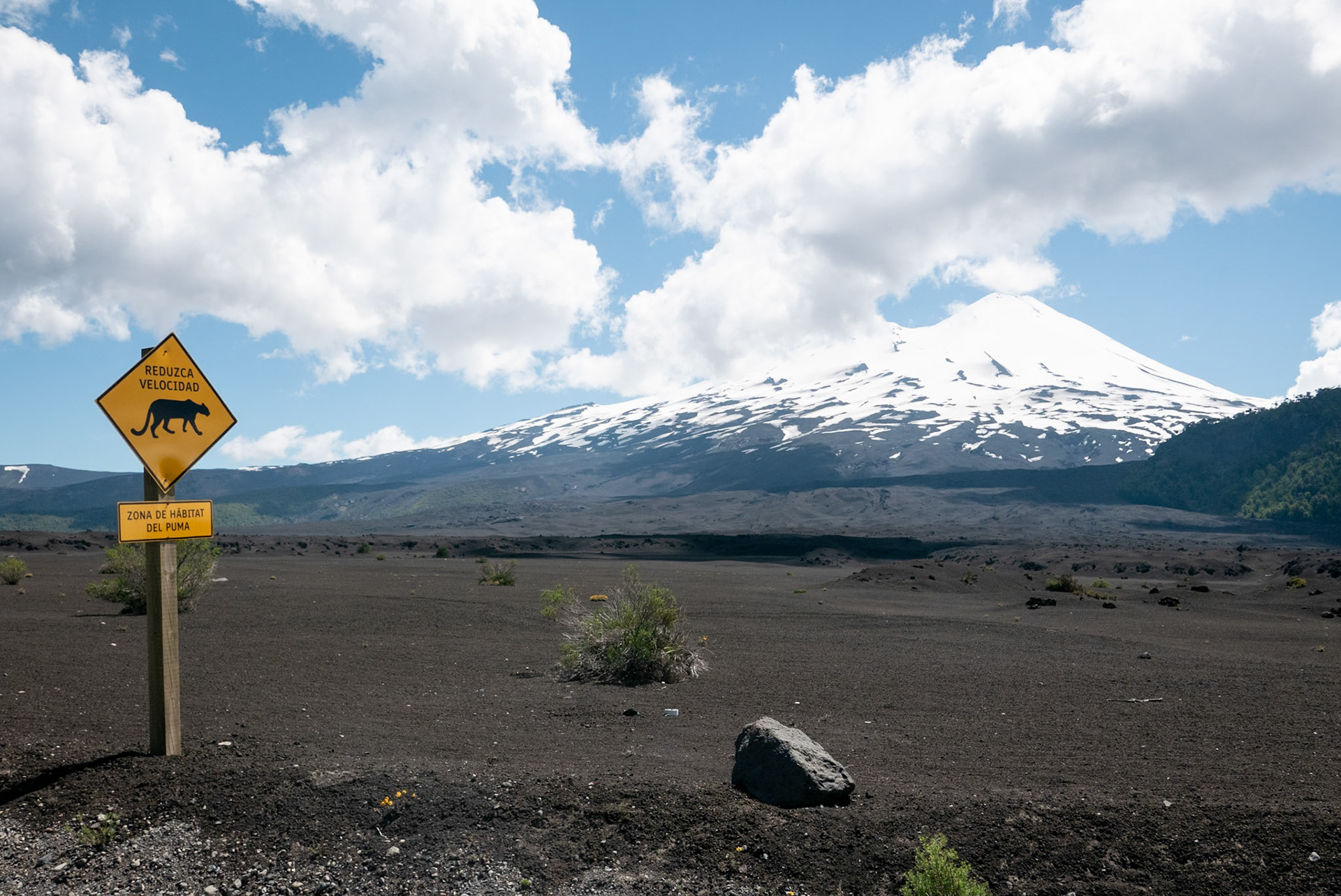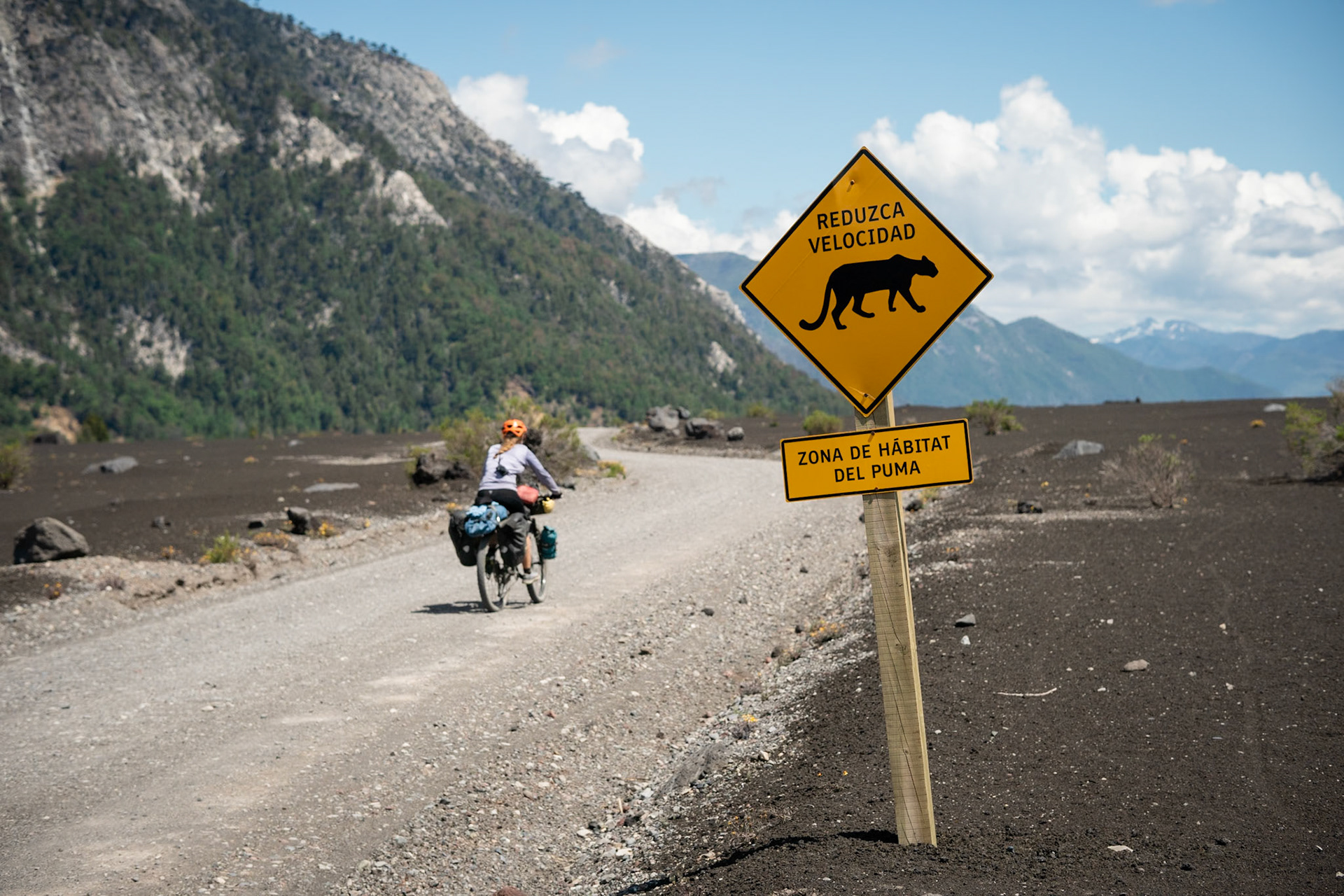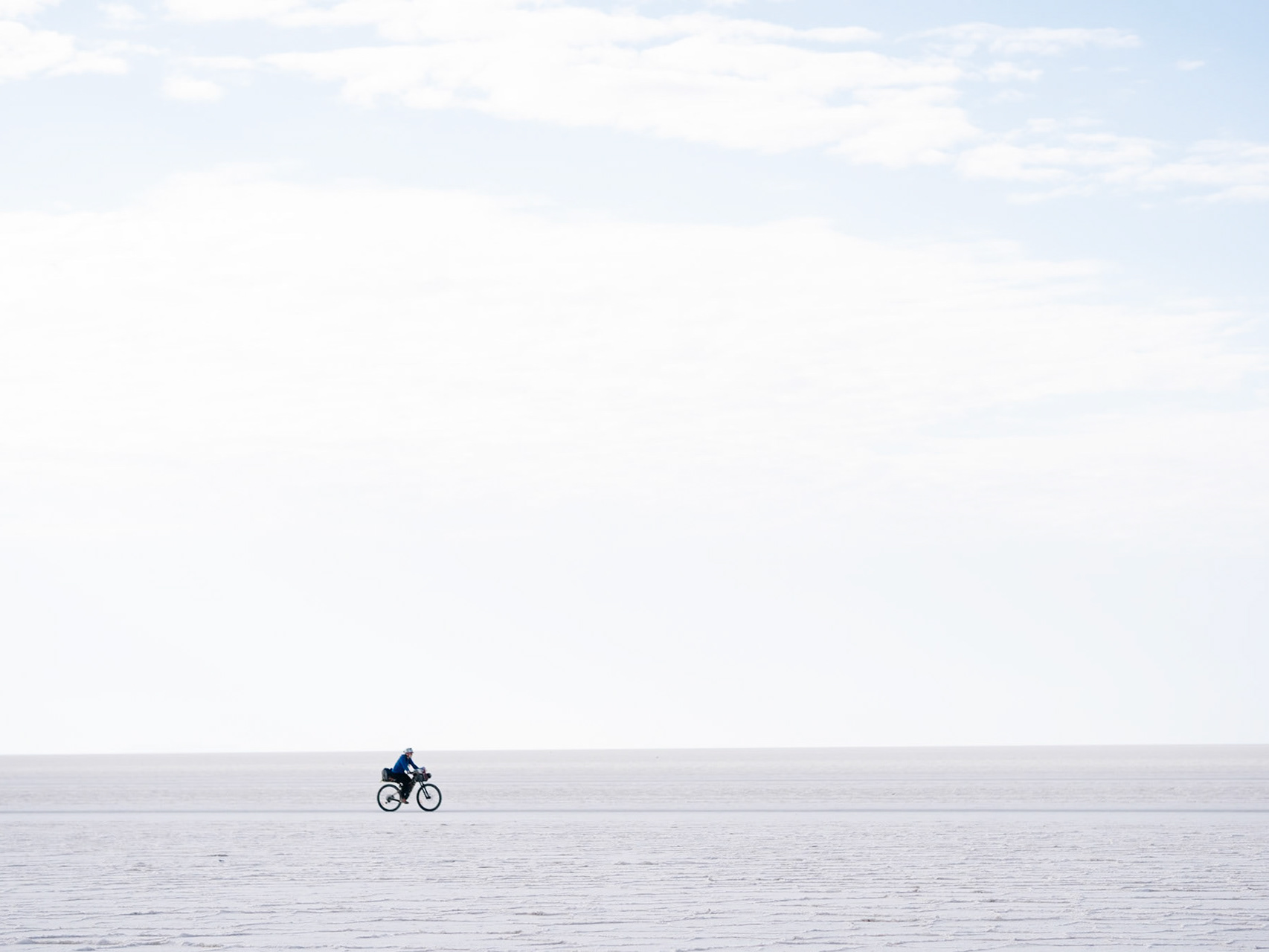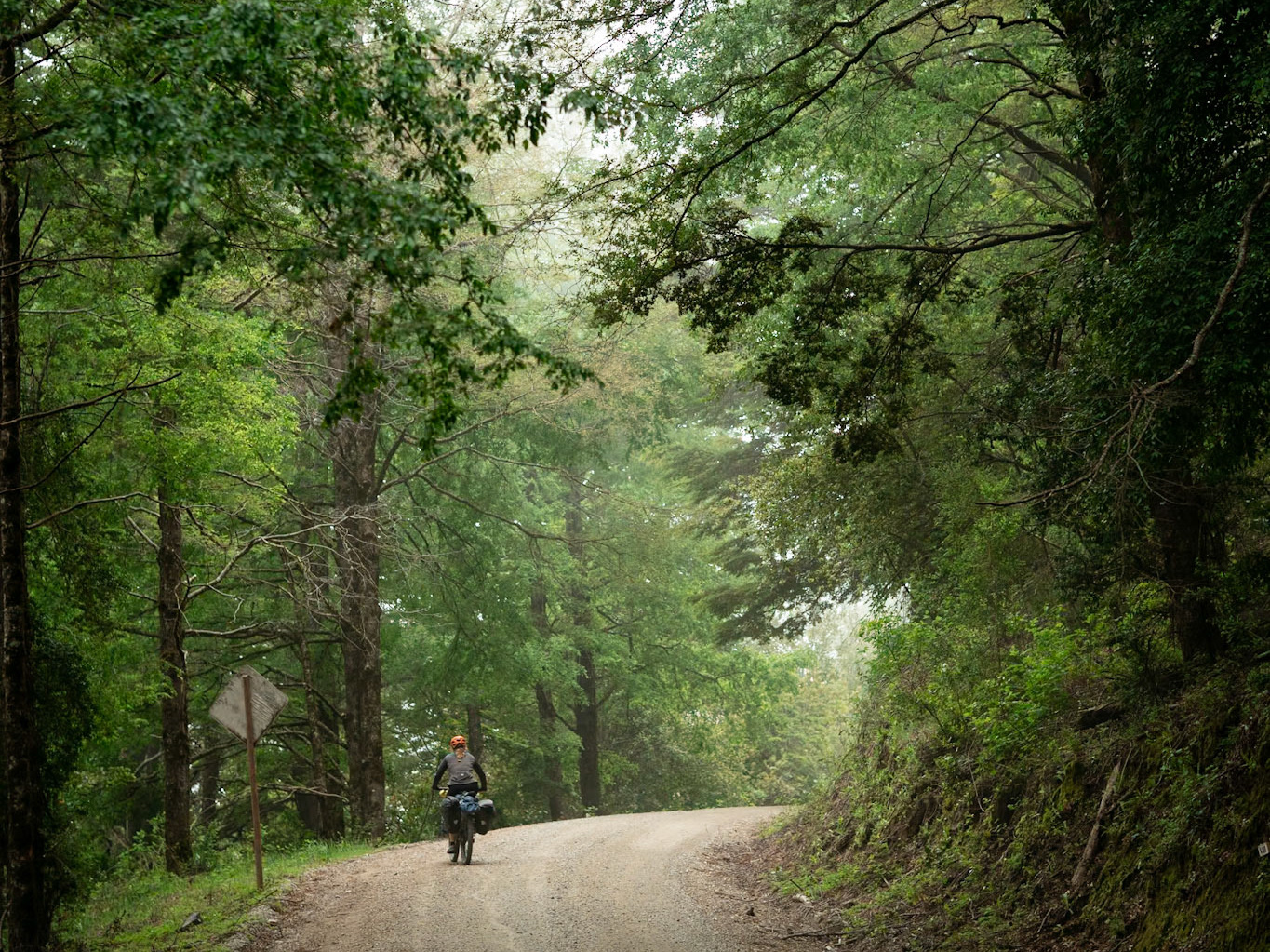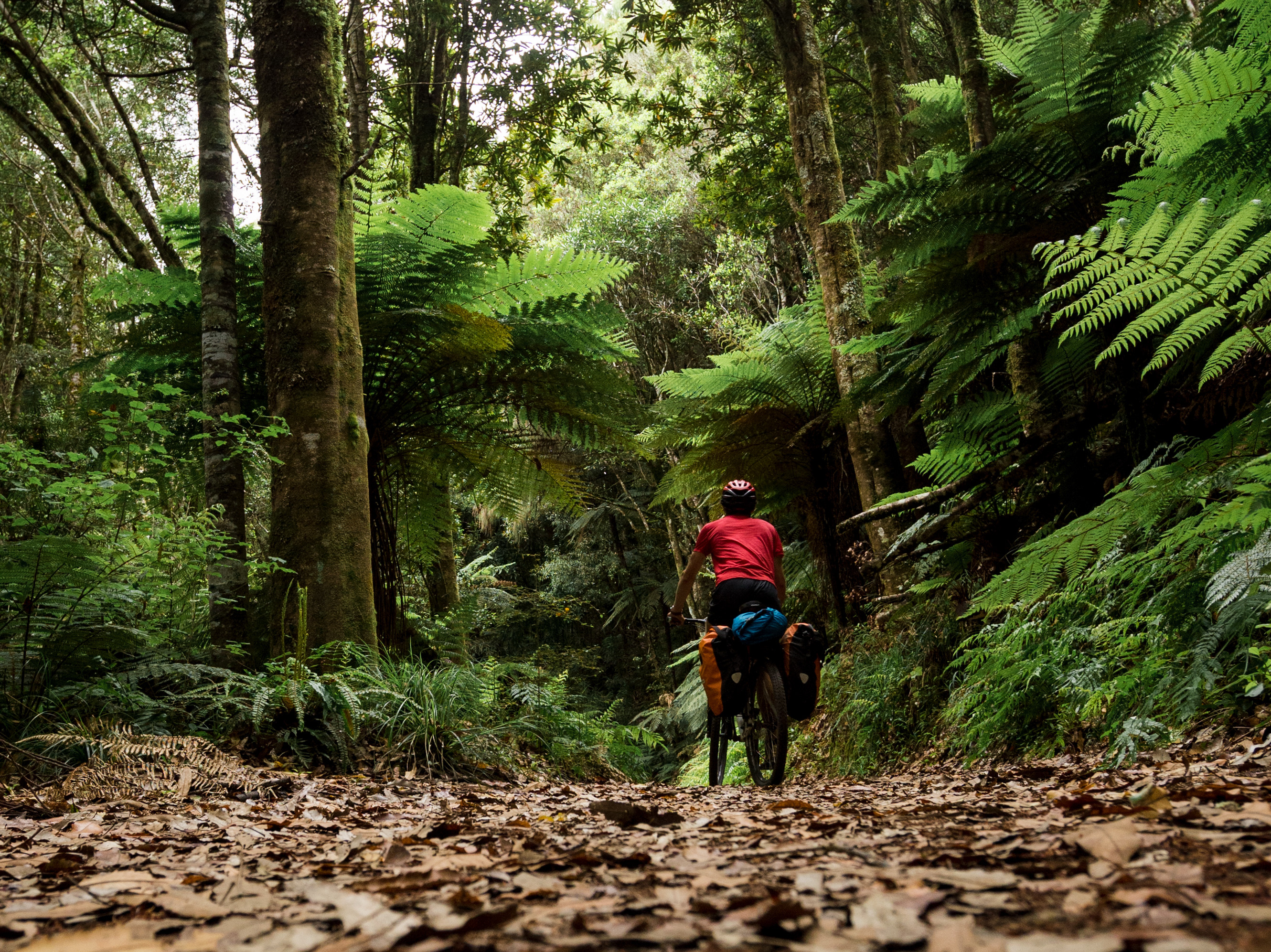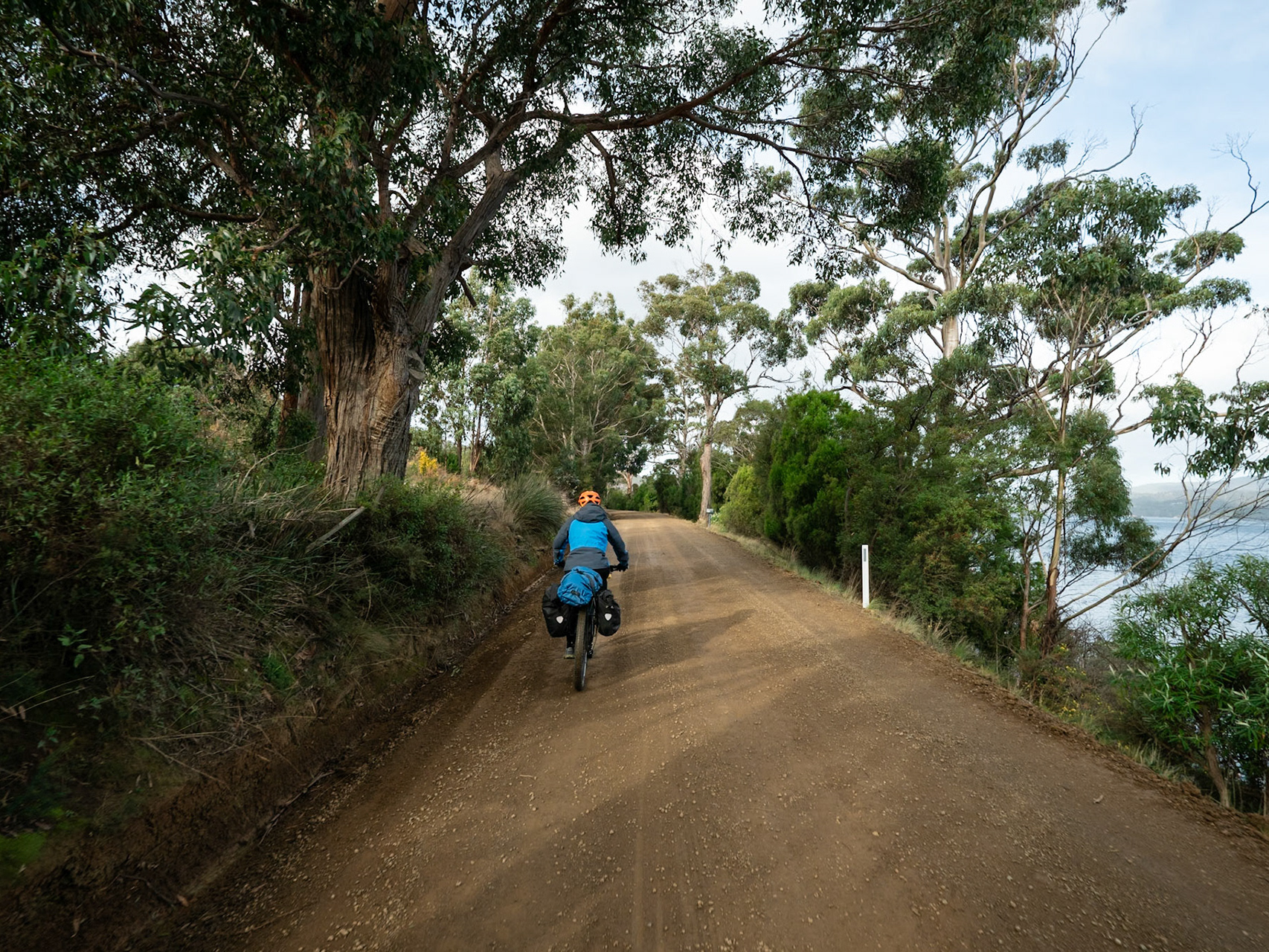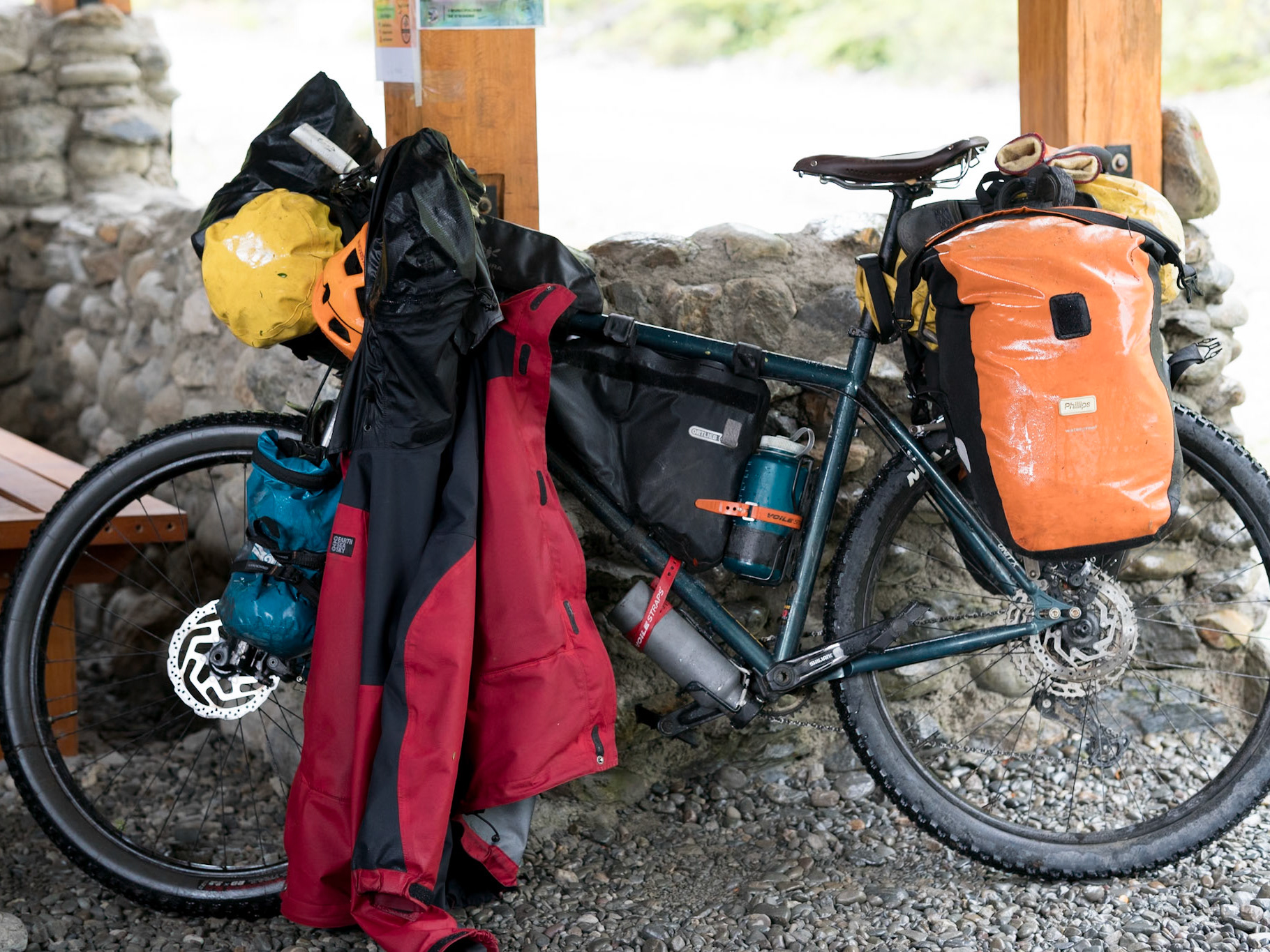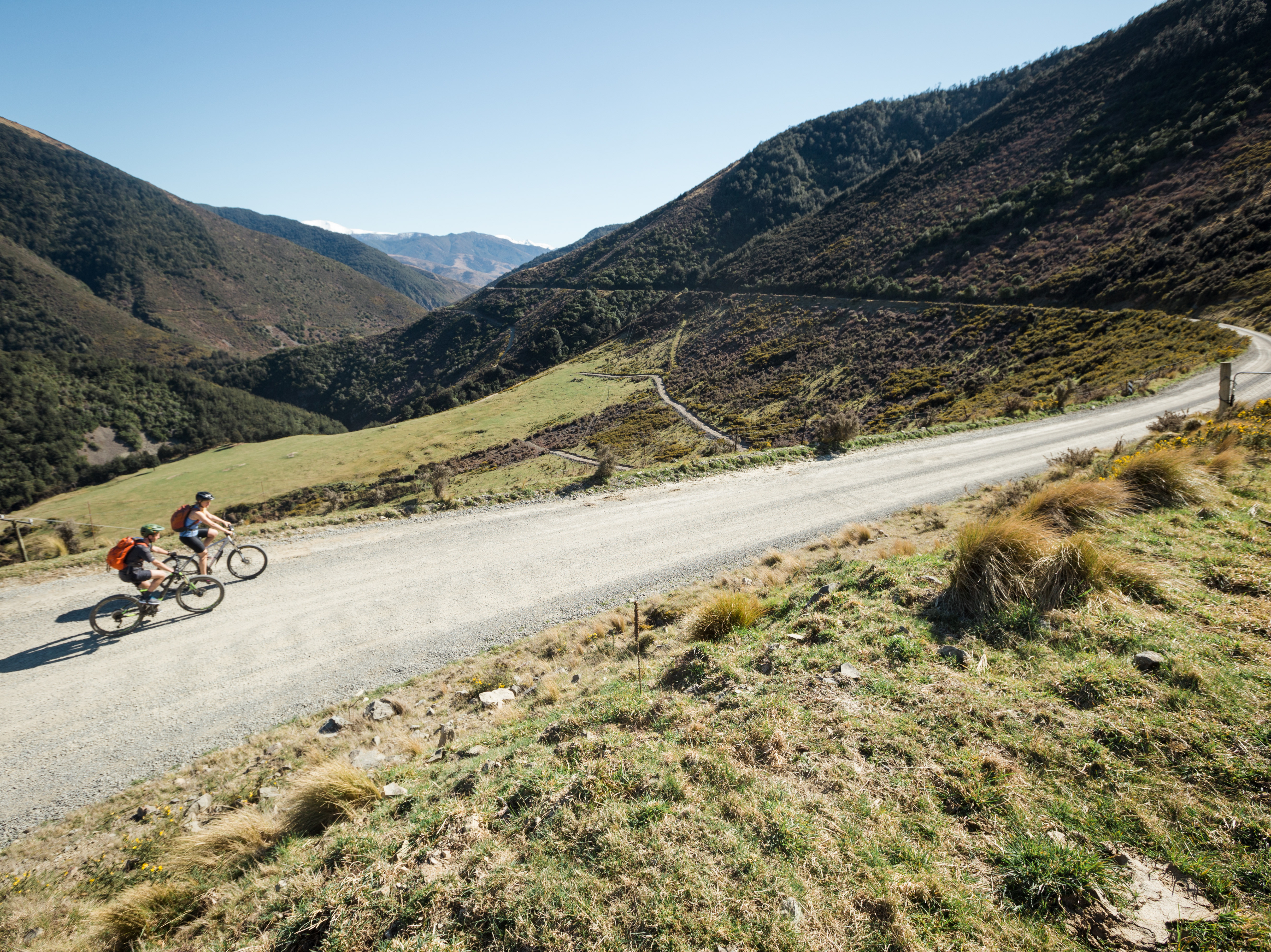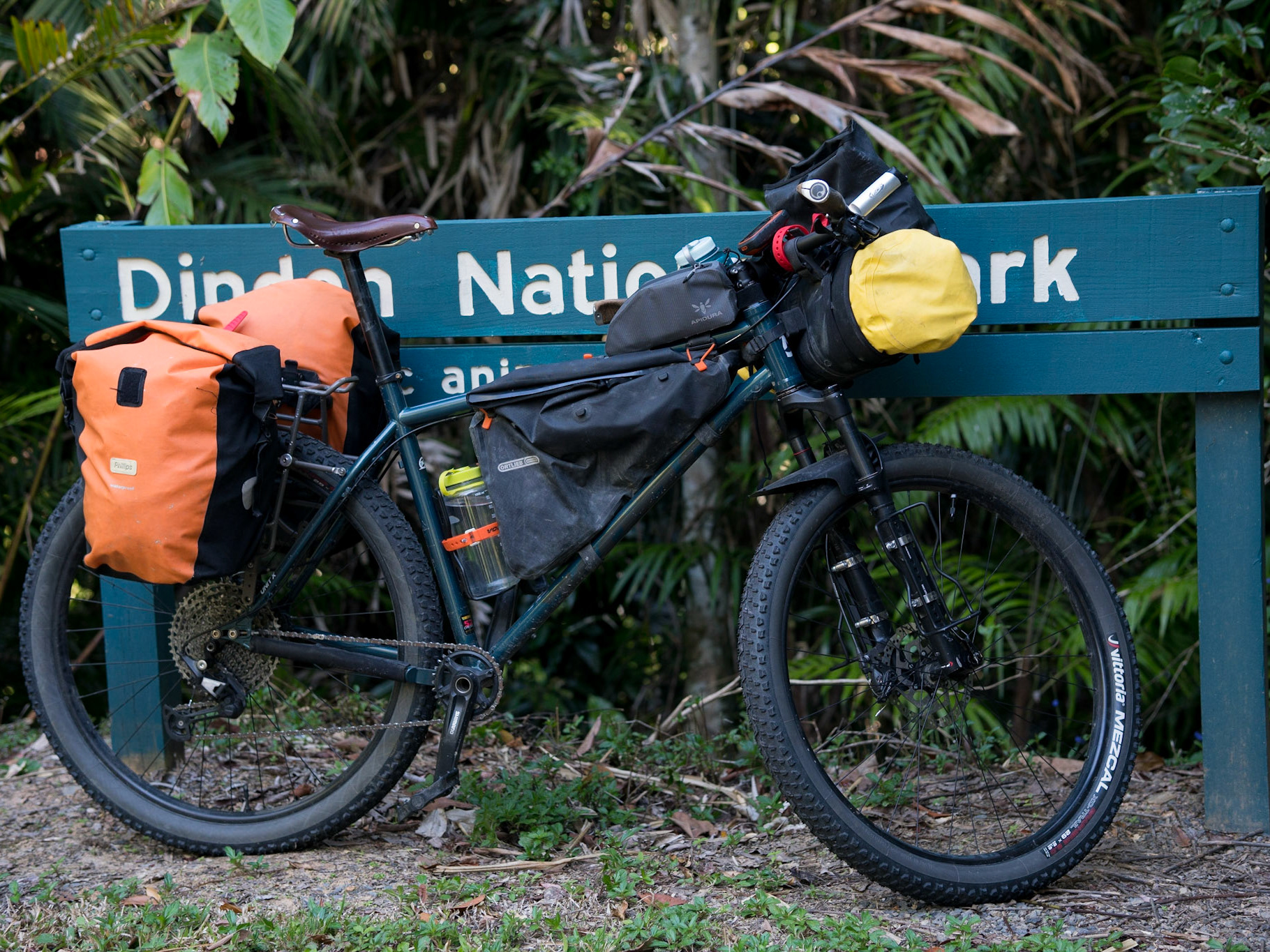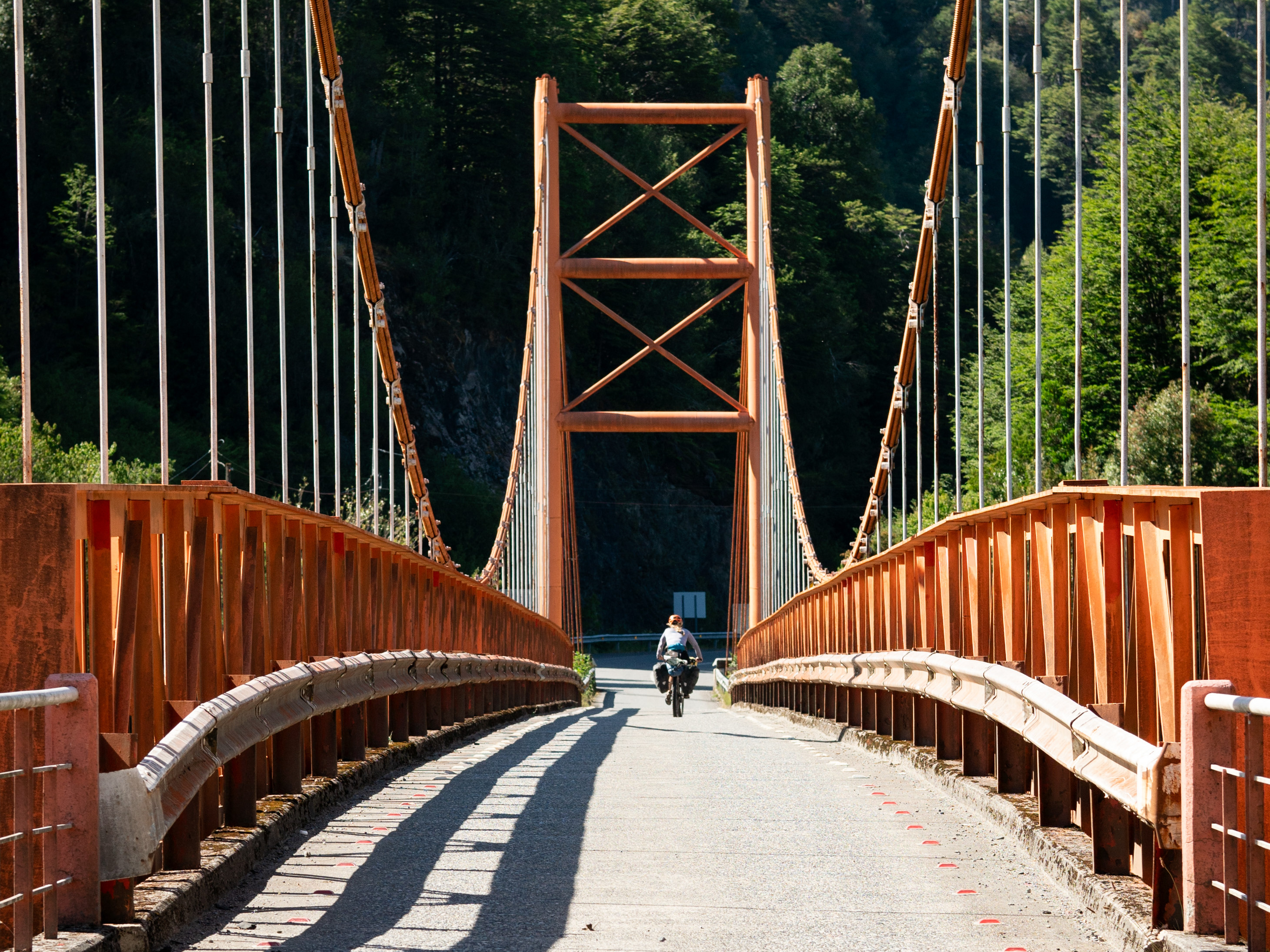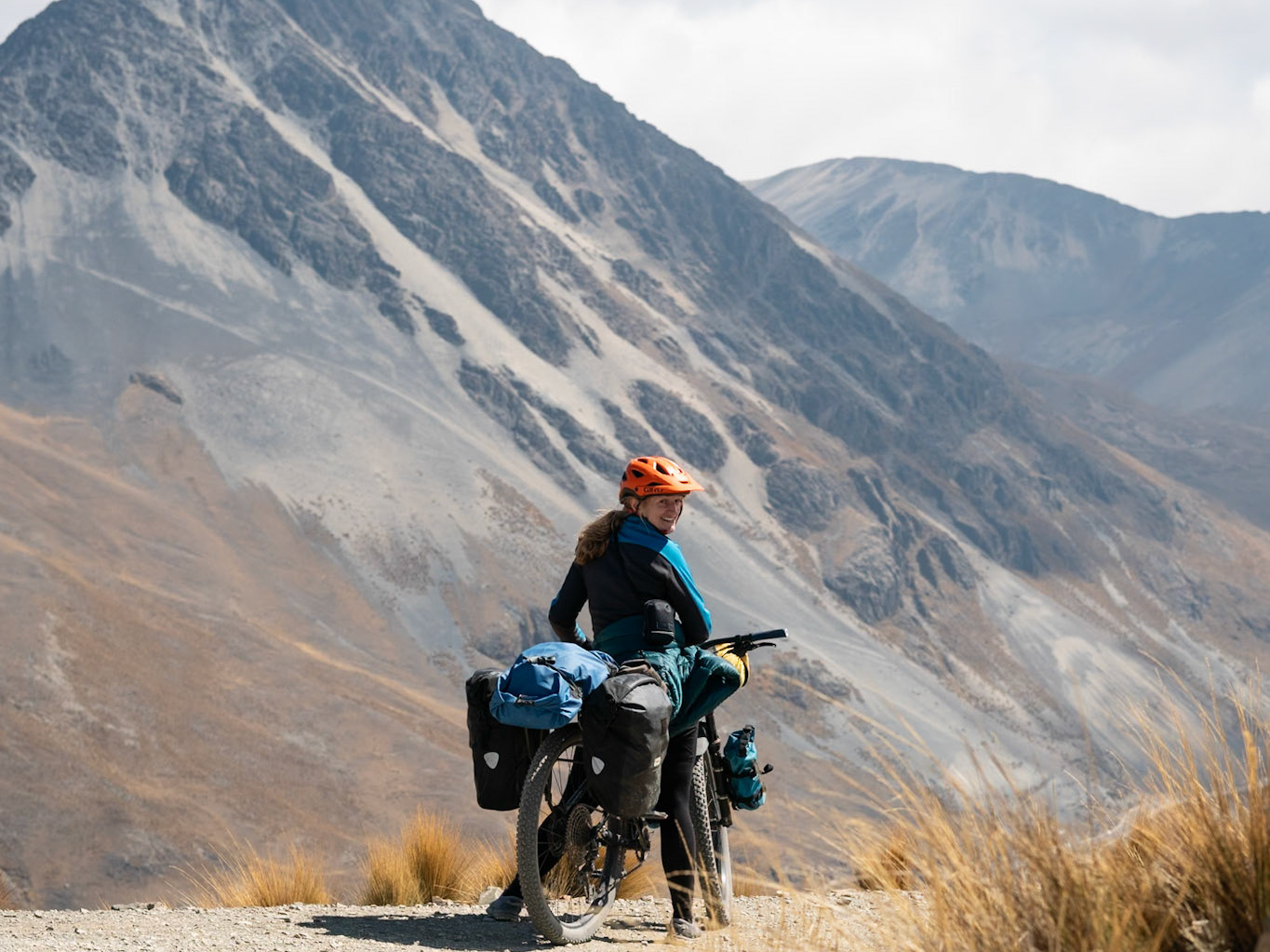Prologue:
I.e. Waiting for bikes in Neuquen for so long that we fled to Bariloche
Our great jump south by bus did not go off as smoothly as we would have liked. It doesn't pay to dwell on such complications but the details may be helpful to know for future cycle tourers doing the same. Unfortunately the freight company had only delivered one bicycle to Neuquen after 8 days (4 days late from the timeframe promised and 6 days after we had arrived), and 'forgotten’ the other enormous bicycle box in the tiny office in Cafayate. Given they had only now requested it be sent, this would take four days. So we decided between staying a further four days in -the thoroughly explored quaint and pretty at times but generally dull- Neuquen, or escaping to Bariloche. Albeit one of the most expensive places in Argentina. Bariloche was indeed stunning. The bus trip passed through yet more dry pampas at first before following a pleasant route along the hydroelectric reservoir lakes and the world's largest heavy water production facility. After 4 hours it suddenly dropped into far more interesting terrain as rocky aretes appeared punctuating skylines and conifers began to dot down from the hillsides. We followed a stunningly fresh and clean river reminiscent of the Clutha River to Bariloche where the vista opens up as a magnificent sight for eyes dessicated and deprived of colour by the deserts of the north. Coniferous forest spreads down to the shore and through the charming quasi-euroalpine town. It's main street was as touristy as Queenstown but at least the peripheries were a bit more real. The tourist cafes, shops, bars and activities are all staffed by locals which means there is extensive housing and a livable community for local workers spreading behind the town, something Queenstown has sorely lacking.
With a mixed forecast and challenges finding a SUBE card for the bus we first wandered up Cerro Otto from town. The track started nicely winding up in the forest but then you are forced onto the gravel road. Several black MTB trails looked beautifully constructed and could be worth a day trip. ¾ of the way up was the odd Piedra Blanca and Euca adventure activities park. At the summit was and even more bizarre cafeteria, gondola (from lakeside) and cable car (from the top carpark) which was very much deserted with danger tape across much of the facilities. It's unclear why that was the case as it seemed to have been open only a month prior on Google.
We went in search of food but unfortunately Bariloche is very, very expensive. Despite many failures and extensive internet and iOverlander research we found nowhere even remotely affordable for cycletourers. So the budget was blown out. We stayed at Astrolabio Hostel which was a great base, located immediately up the hill from the bus terminal (which is 20 minutes walk from town) and with a nice lake view. The place was modern and clean and one of the cheapest on Barilcohe yet still the painful 40,000 pesos for two people for two nights in shared dorm. The breakfast was delicious fresh hot croissants with cream, jam and coffee. We managed to catch the 55 bus from the terminal at 8, now that we had a SUBE card and managed to recharge it. The fare was 510 pesos per person one way so be sure to top up plenty as other routes were much less and this was a surprise.
We got to Cerro Catedral by 9 and were away onto an easy track up Frey. It starts off sidling high above a lake in open low wildflowers, scrub and scattered trees before turning into the main valley and entering stunning Nothofagus forest. The track steepens and has a few rocky steps and some small boulders higher up but is easy and fast travel.
At Frey there is a large lake that was frozen over, with snow down the basin making crampons and ice axe a necessity for further exploring. We had lunch up the spur dotted with tentsites before a speedy trip back and bus to Bariloche.
We took the convenient night bus to Neuquen and had a 4 hour wait there for Buspack to open. Thankfully the second bike had arrived, 12 days later, the box battered and crushed. After asking four companies Rincon were the only ones happy to take the bikes, in boxes, any further. Miraculously they could fit our bikes on board a bus with us to Las Lajas for hardly anything. We felt a huge sense of relief getting off at Las Lajas bikes in tow, finally back to the simplicity of a self-propelled journey to Ushuaia.
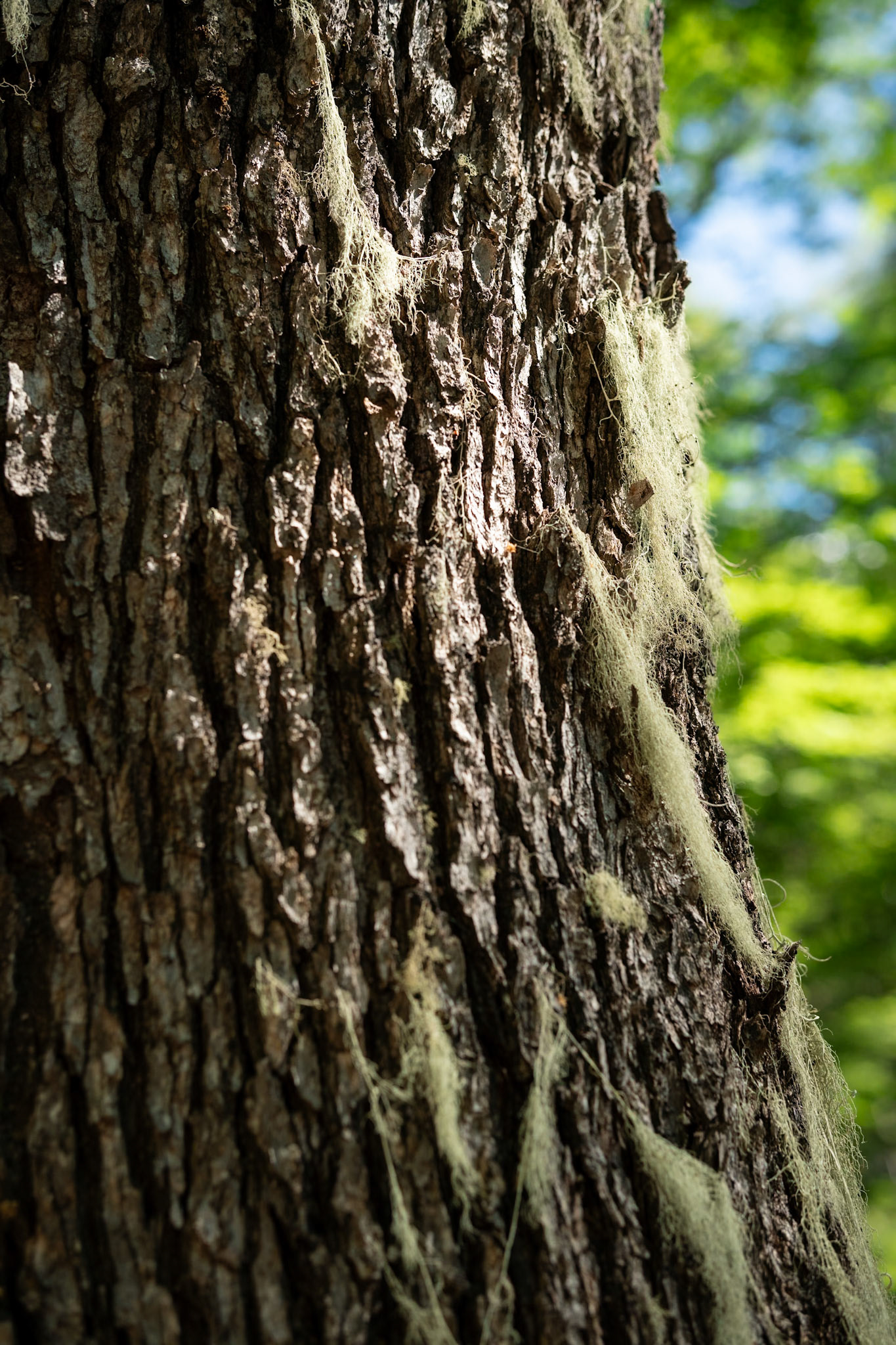
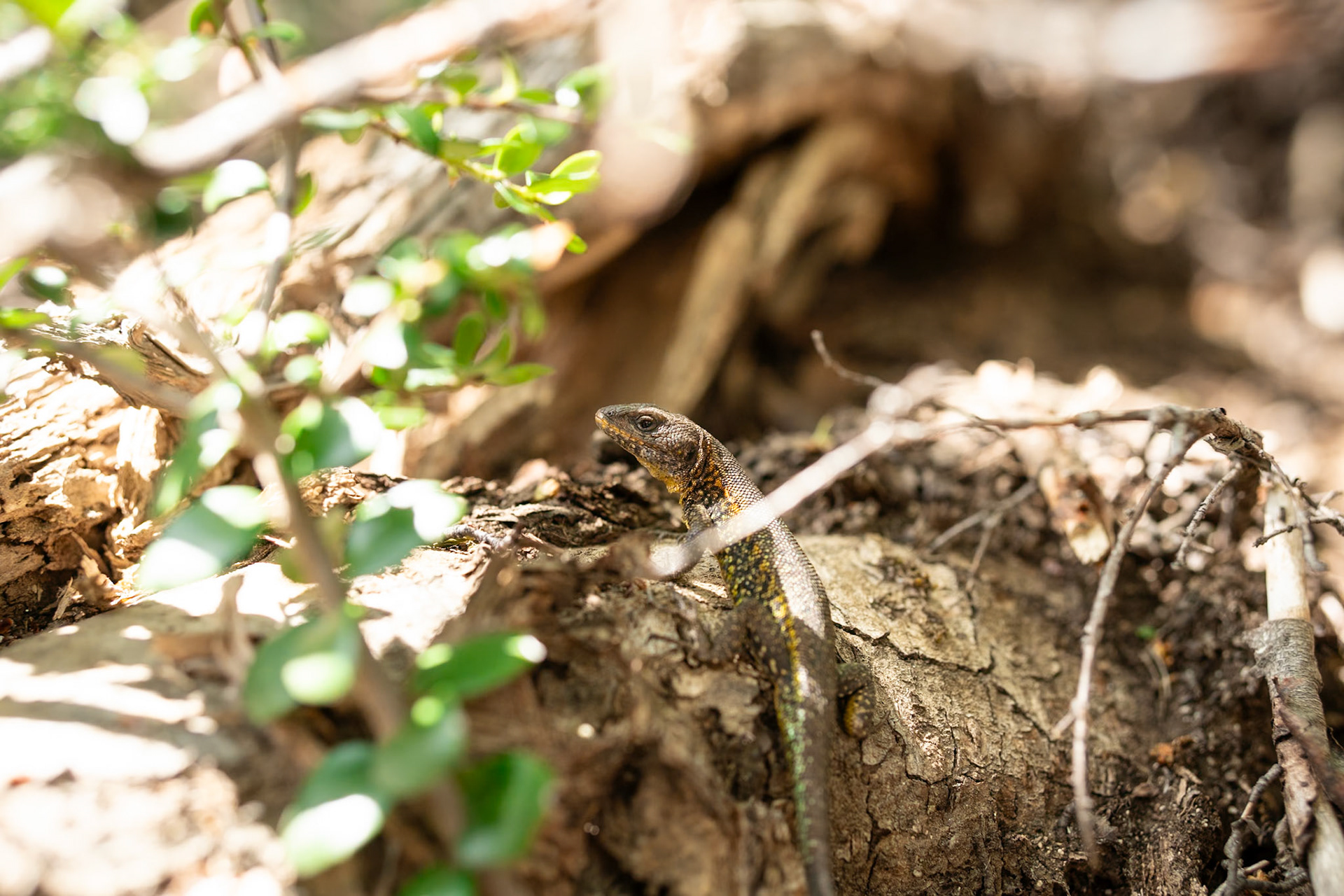

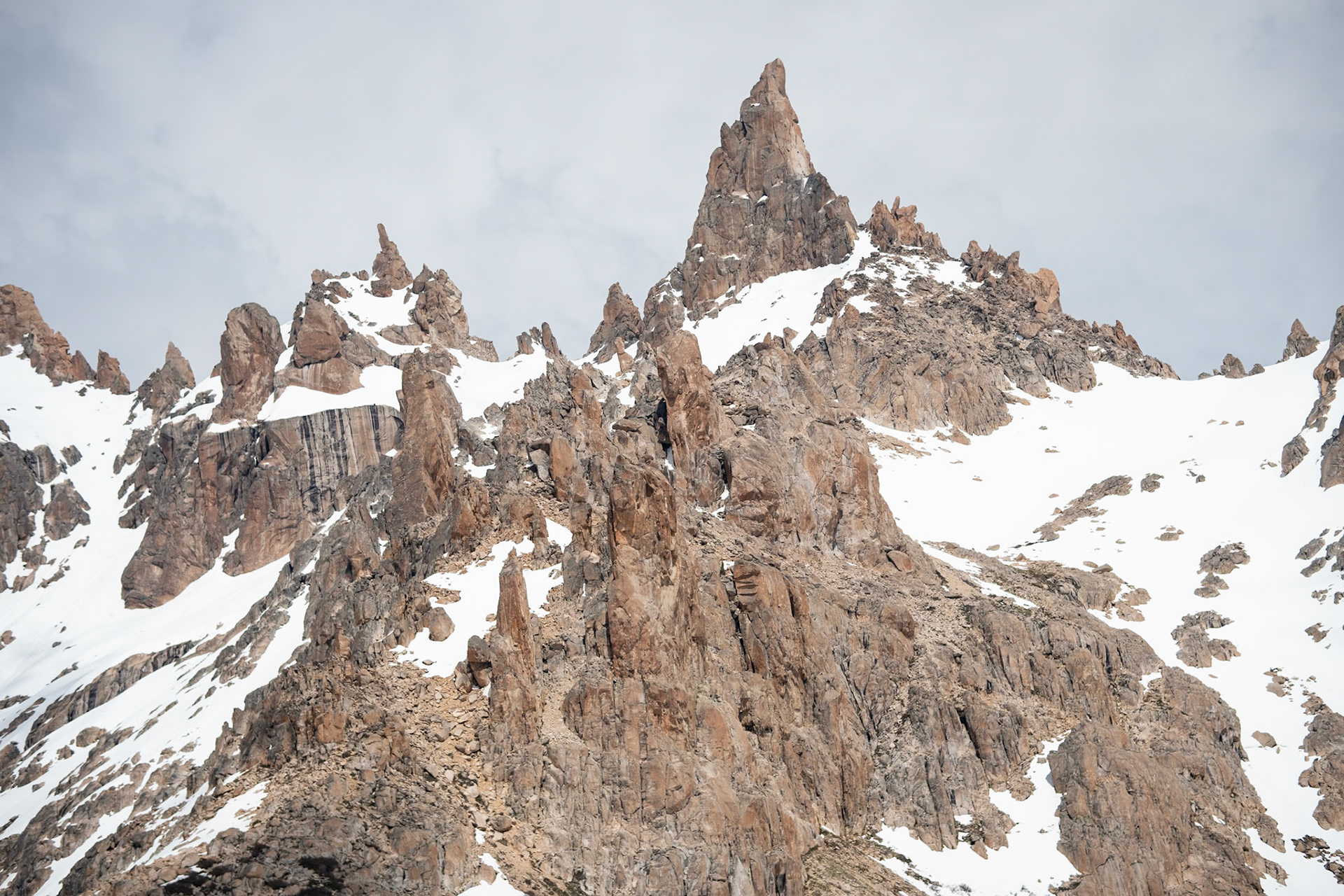
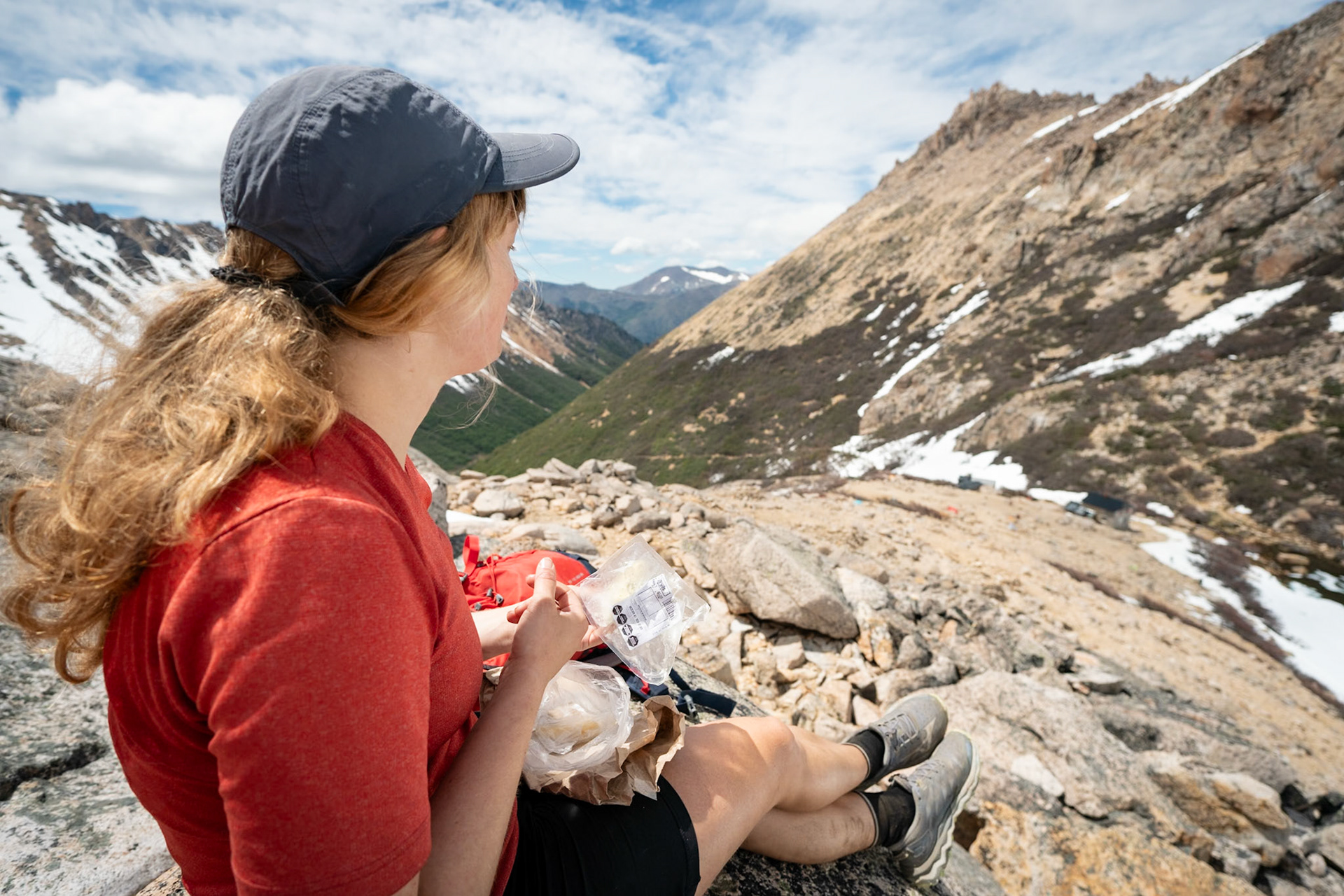
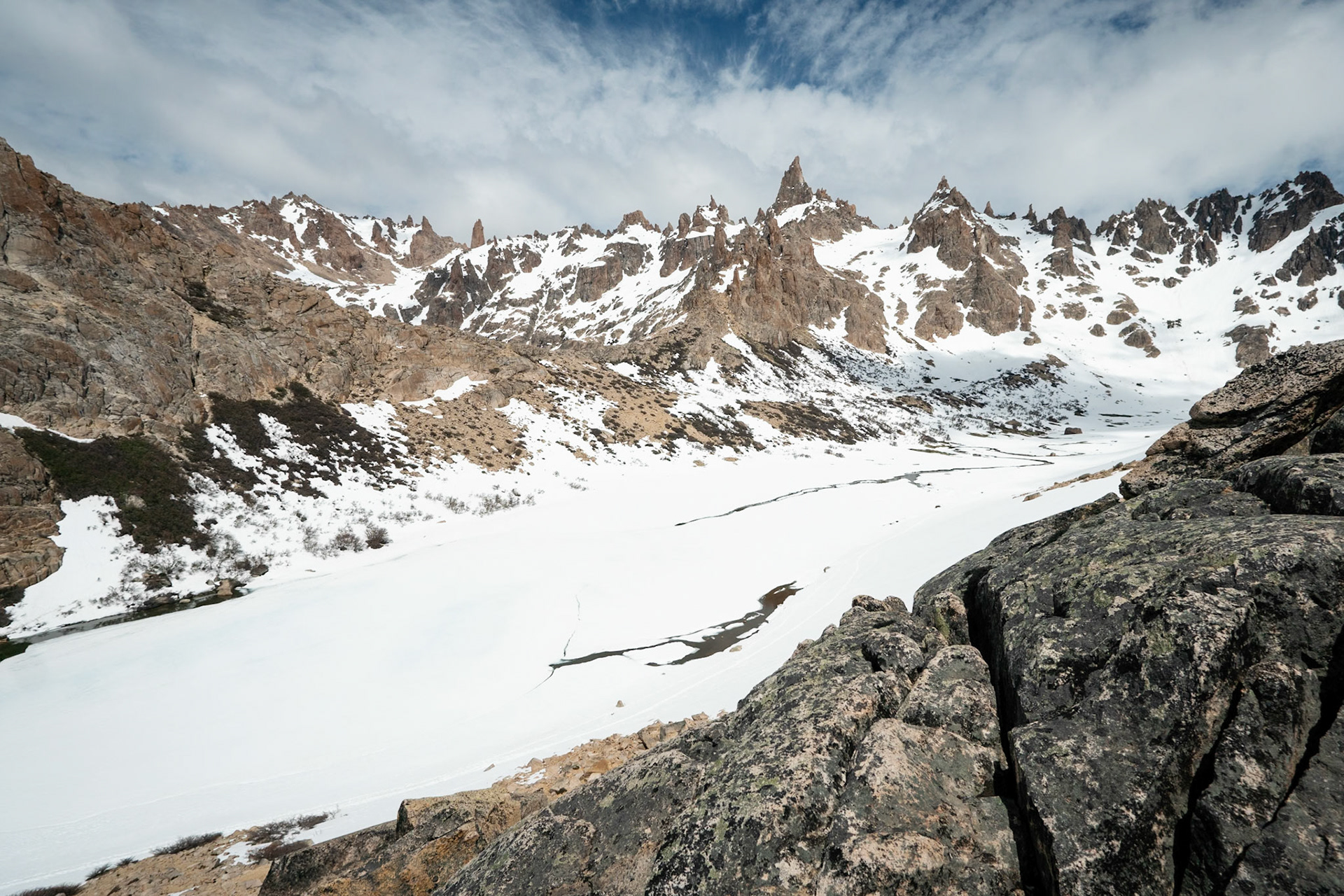
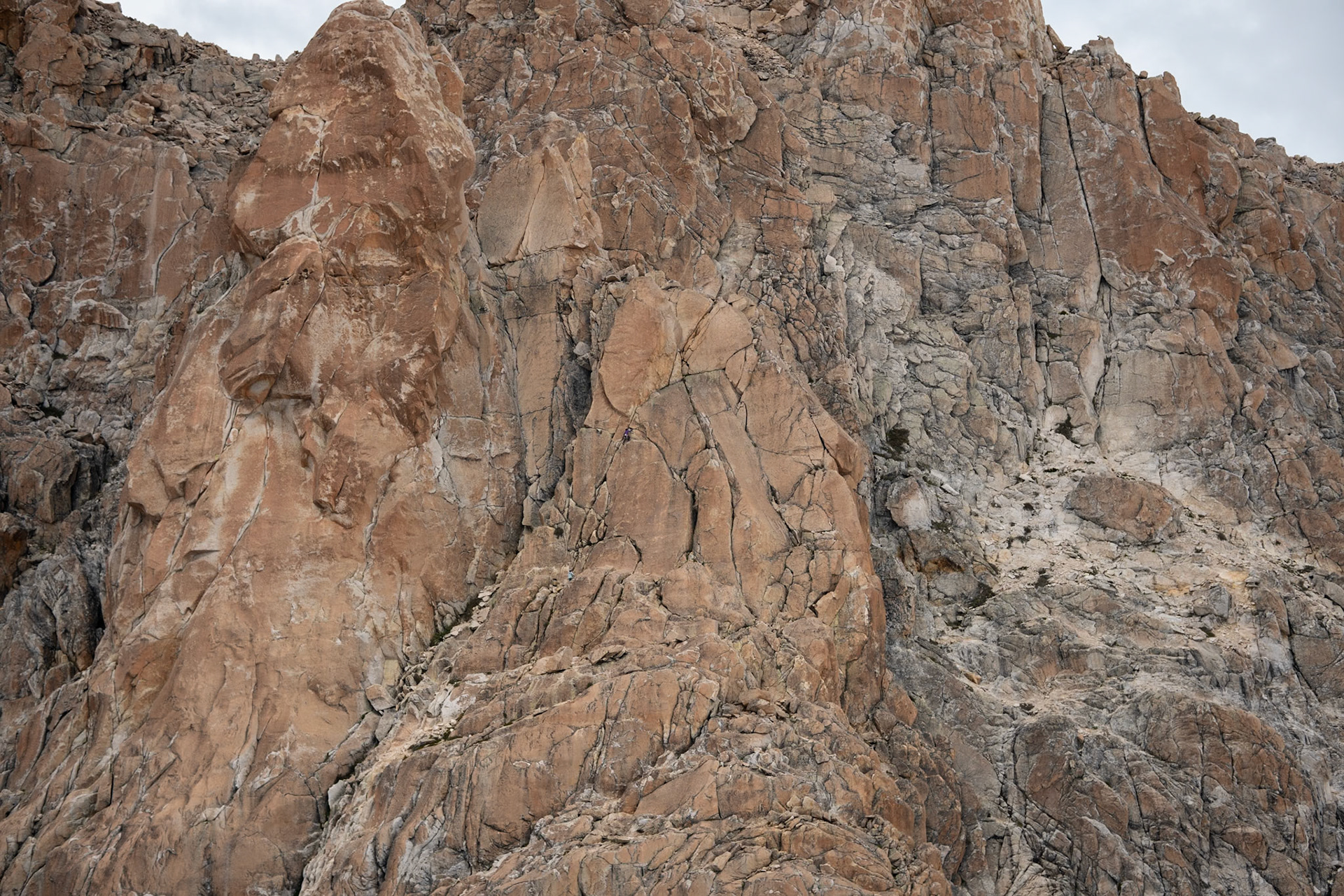
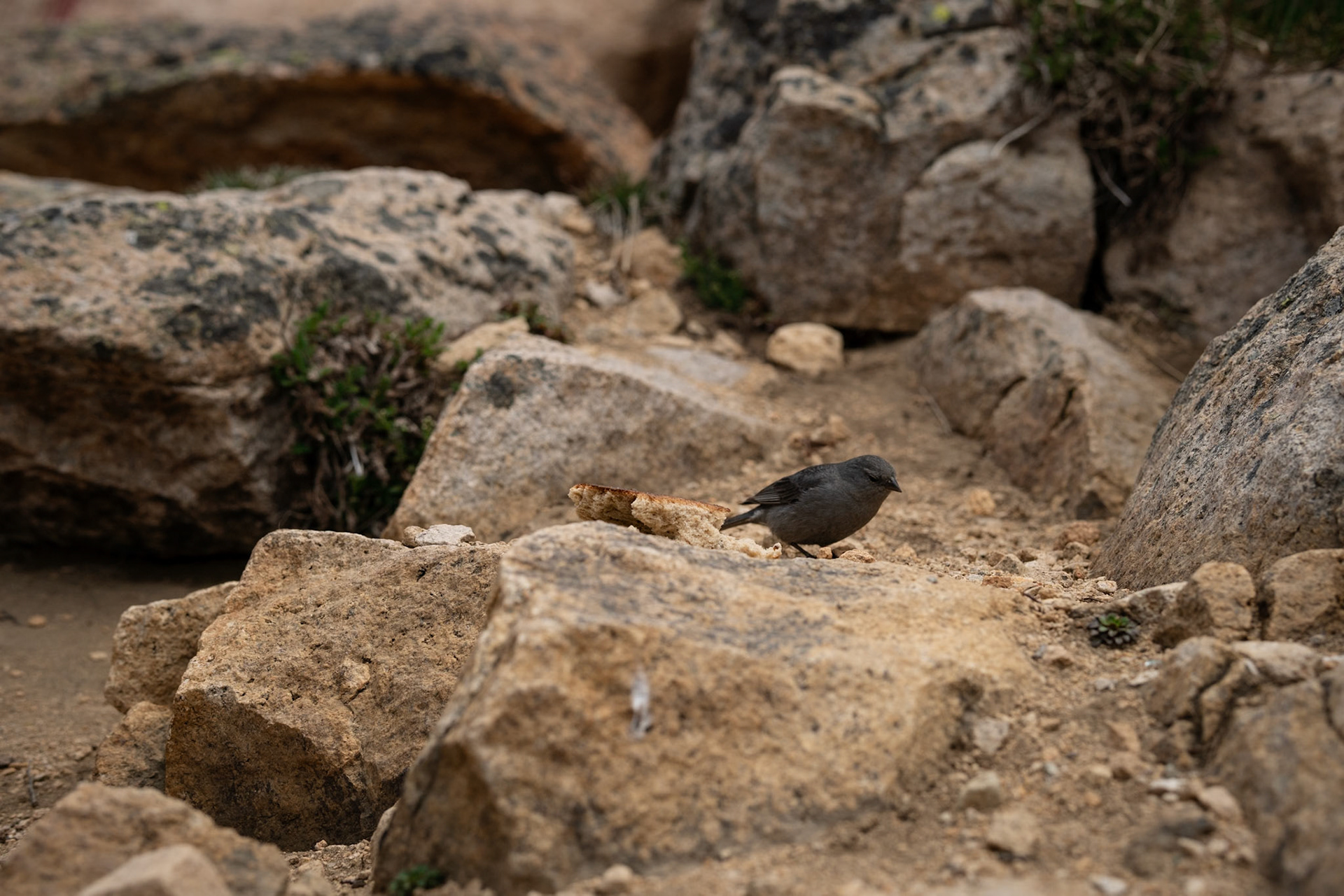
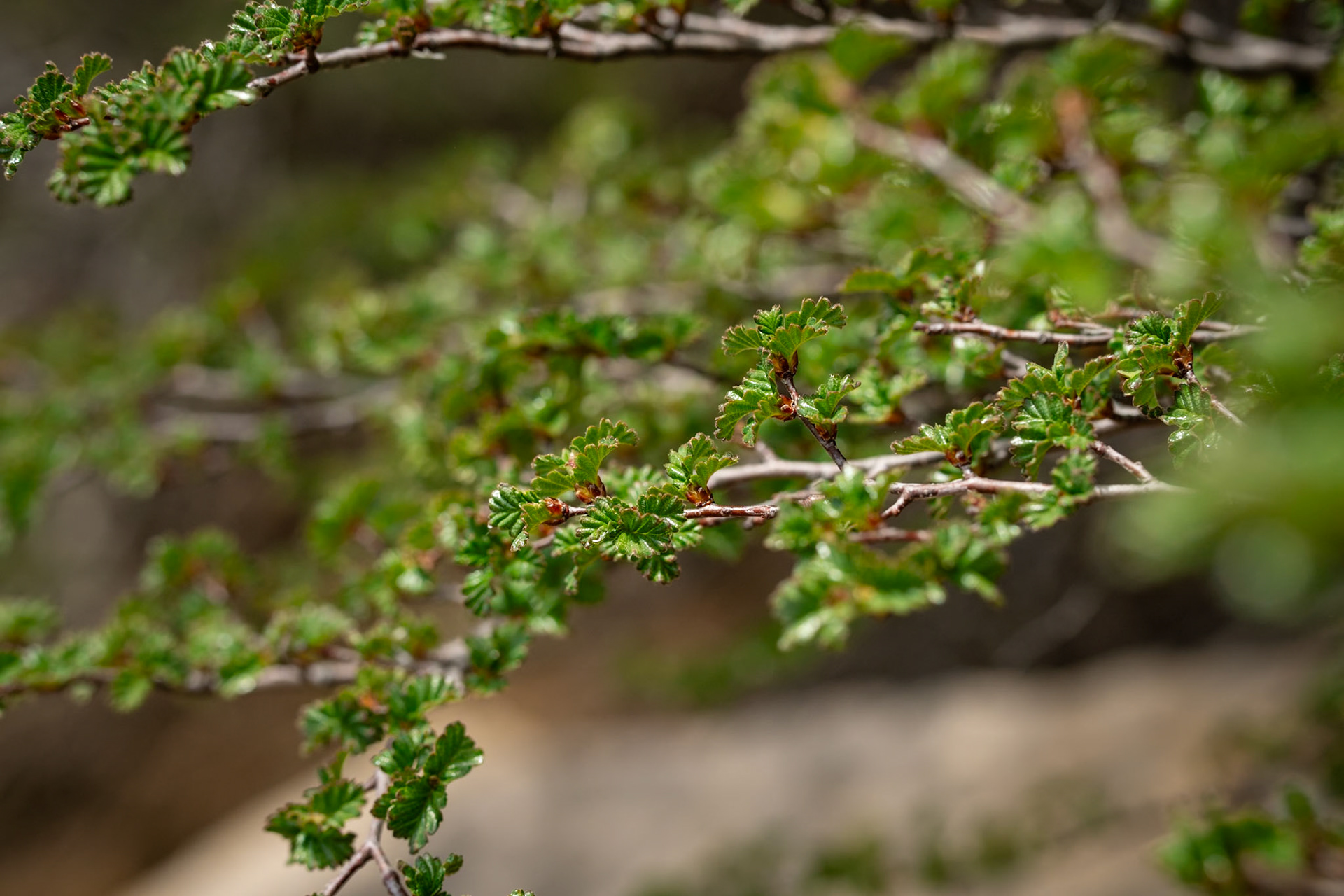
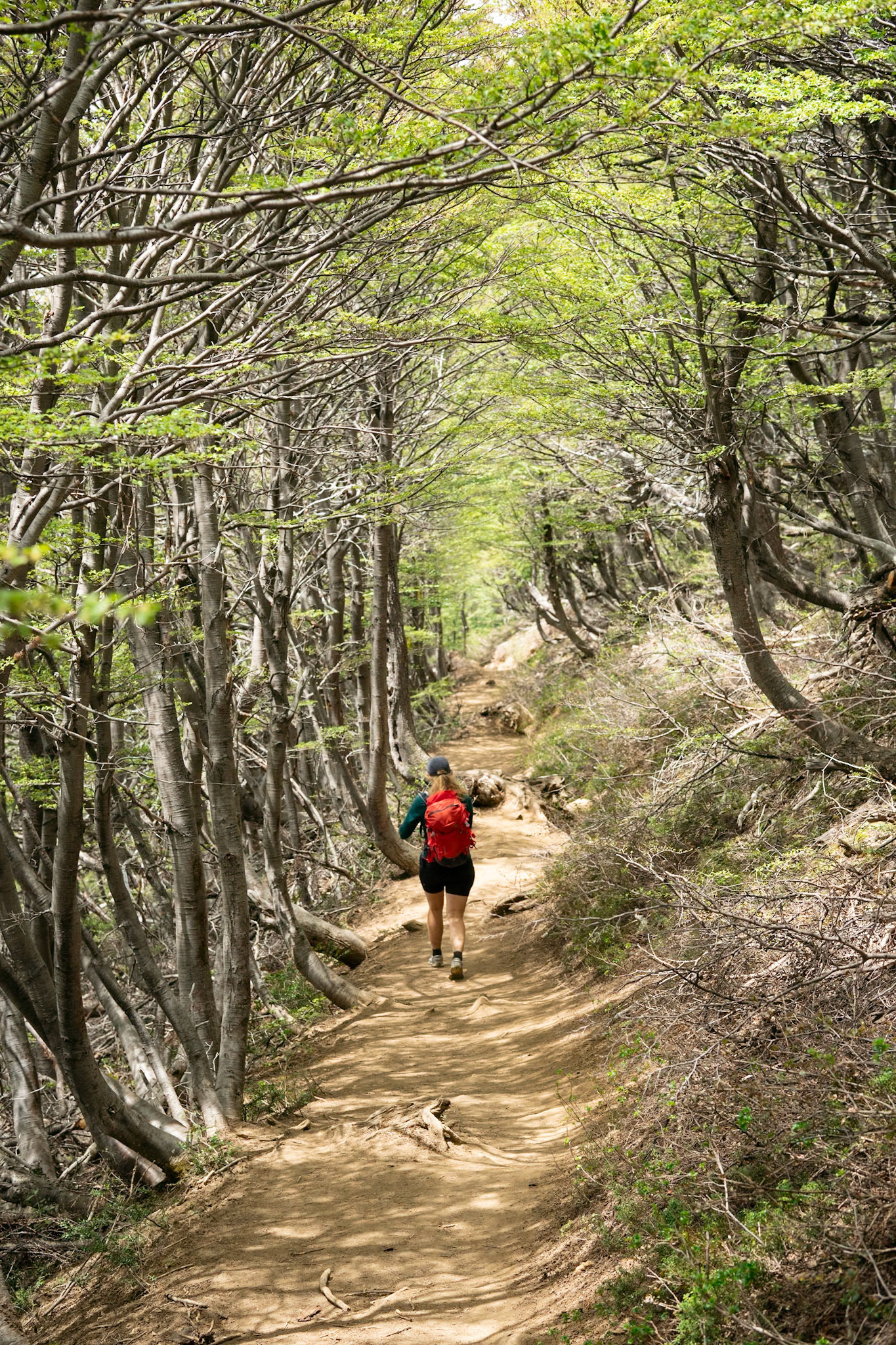

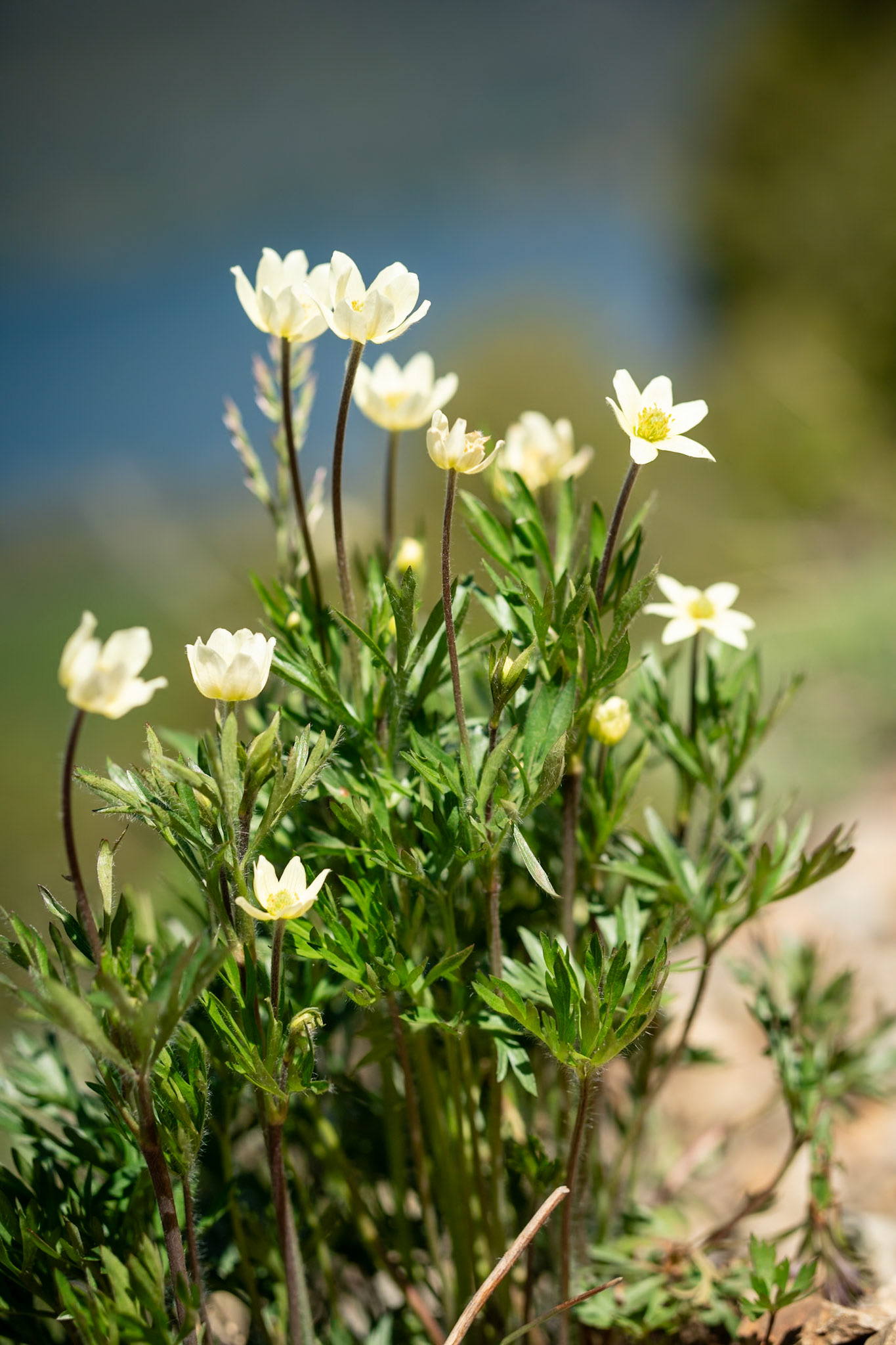
Day 0, Bike setup in Las Lajas and Day 1 Las Lajas to Pino Hachado
On the way the bus had strained in gale westerlies and on arrival at Las Lajas the winds were tearing through town. Our bike boxes were torn from our hands several times. Setting up the bikes we found little samage although I was suspicious of a subtle new wobble in the bottom bracket, more on this later. We got kerosene from the ferreteria (no benzina blanca) but this burned terribly so I suspect it was an odd dodgy mixture. The supermarket is well stocked although not much use given the border crossing into Chile just ahead where they'd confiscate all of the nuts, cheese and fruit. We stayed at the beautiful and peaceful municipal campground, which was 3000 pesos for 2 but had amazing clean modern hot showers, WIFI and a lovely campground. The trees provided excellent shelter from the howling gales above.
We woke at 5am with the goal of beating the forecast increasing westerly winds.
Unfortunately even at 5am the trees in the campground were still very much howling and thrashing about in the relentless westerly winds, despite the forecast. Unfortunately due to our kerosene experiment we needed to get moving without breakfast. We picked up a decent cheap coffee and medialunas at the petrol station but then discovered the pass was closed. It had snowed overnight and there were mixed messages about the snow melting immediately versus being closed for days. We headed off regardless but now it was almost 8 after all the faffing about.
The road was quiet and pleasant and initially crossed more pampas before climbing up to stunning Araucaria clad slopes and winding gorges. Unfortunately the wind was diabolical and only grew. We pedalled hard to move downhill on the few sections of this. We moved at 5kph. It was grim. Our plans to reach Lonquimay were soon dashed and we called in to Horses and Huskies to see if we could camp. They had a wee cabin, 30,000 pesos was more than we were at all comfortable with spending but the absolutely stunning scenery, cosy cabin with a woodfire and worsening weather made it rather necessary. Our legs were sore perhaps from all the time in buses recently where our high altitude and high-pass fitness had evaporated.
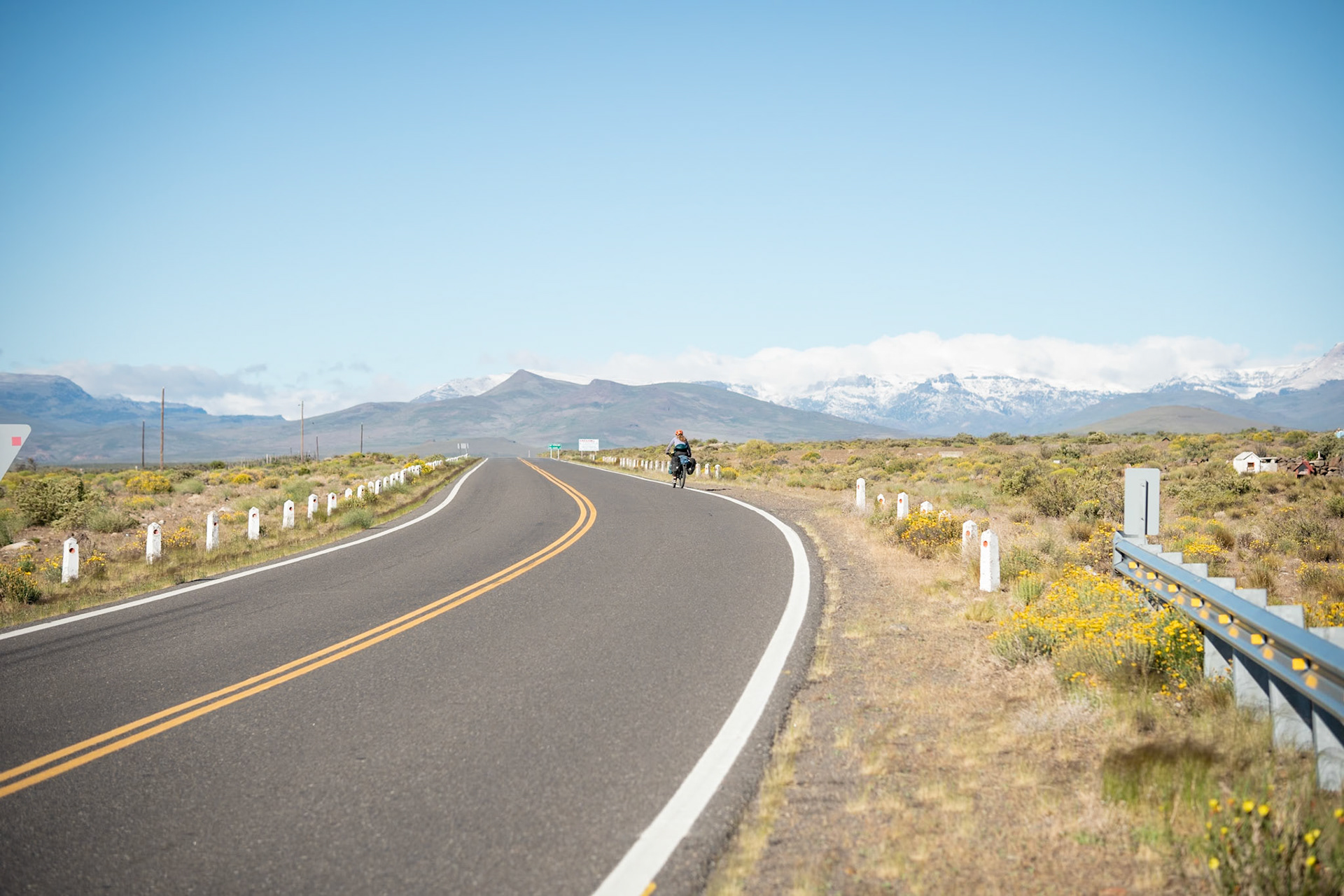
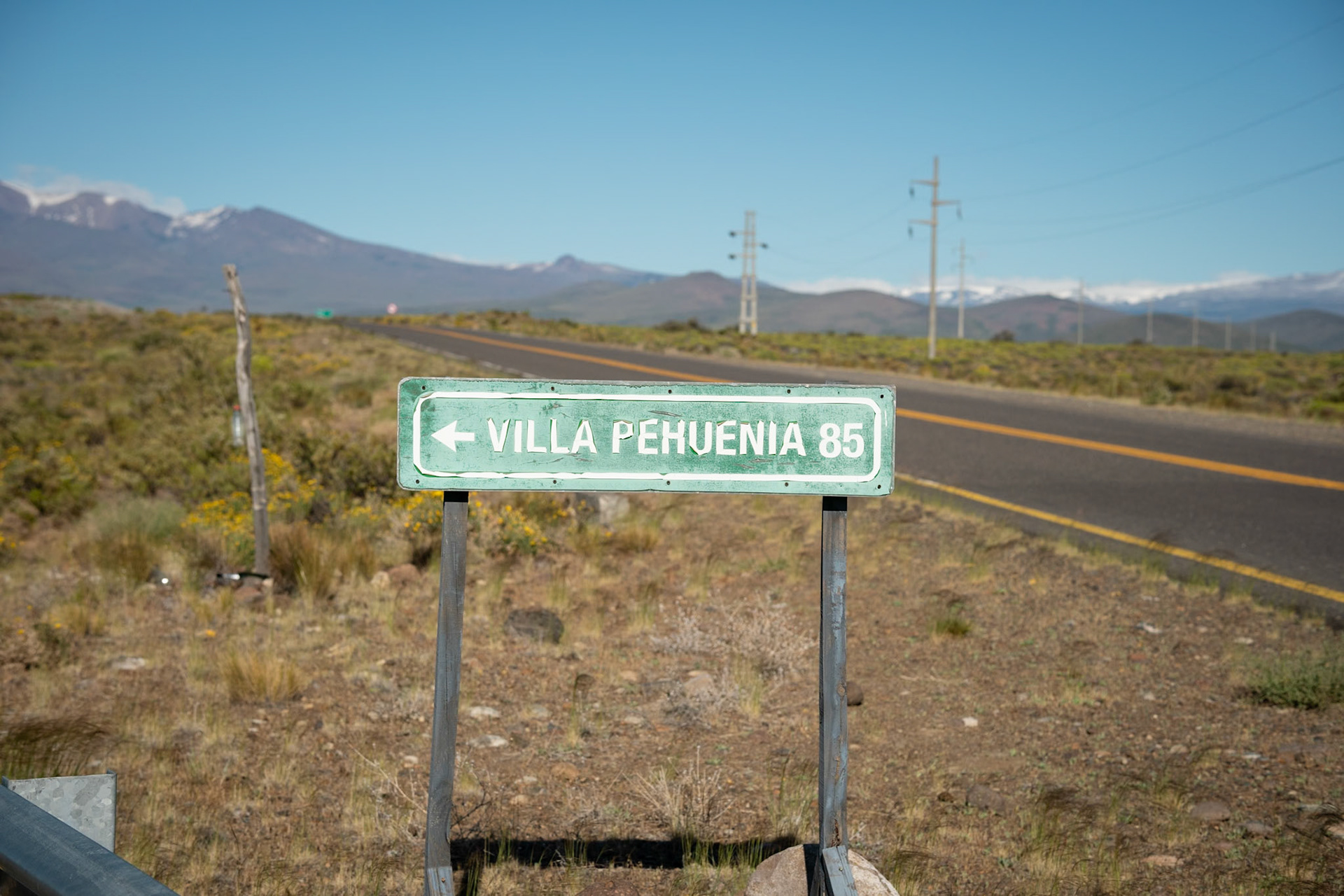
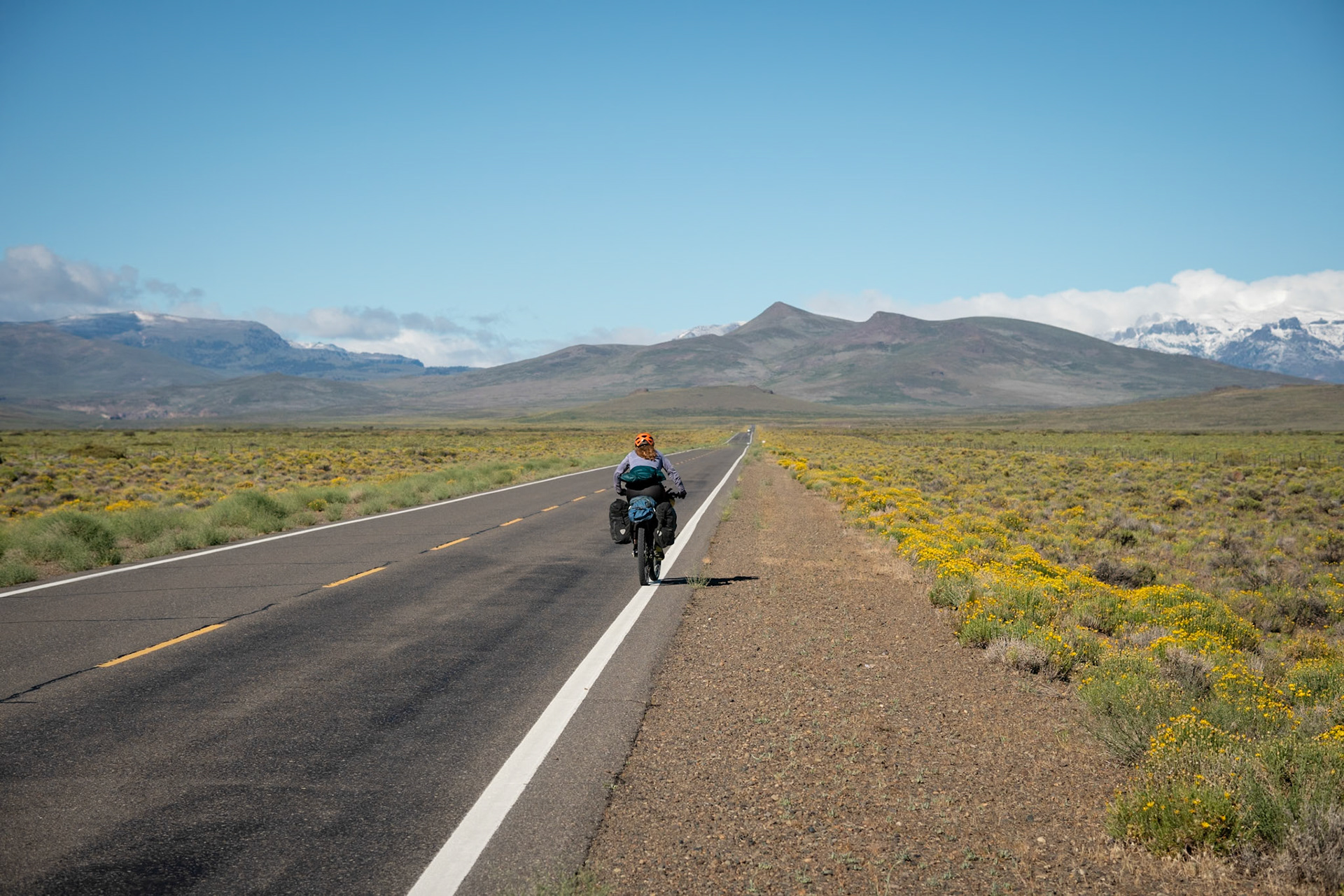
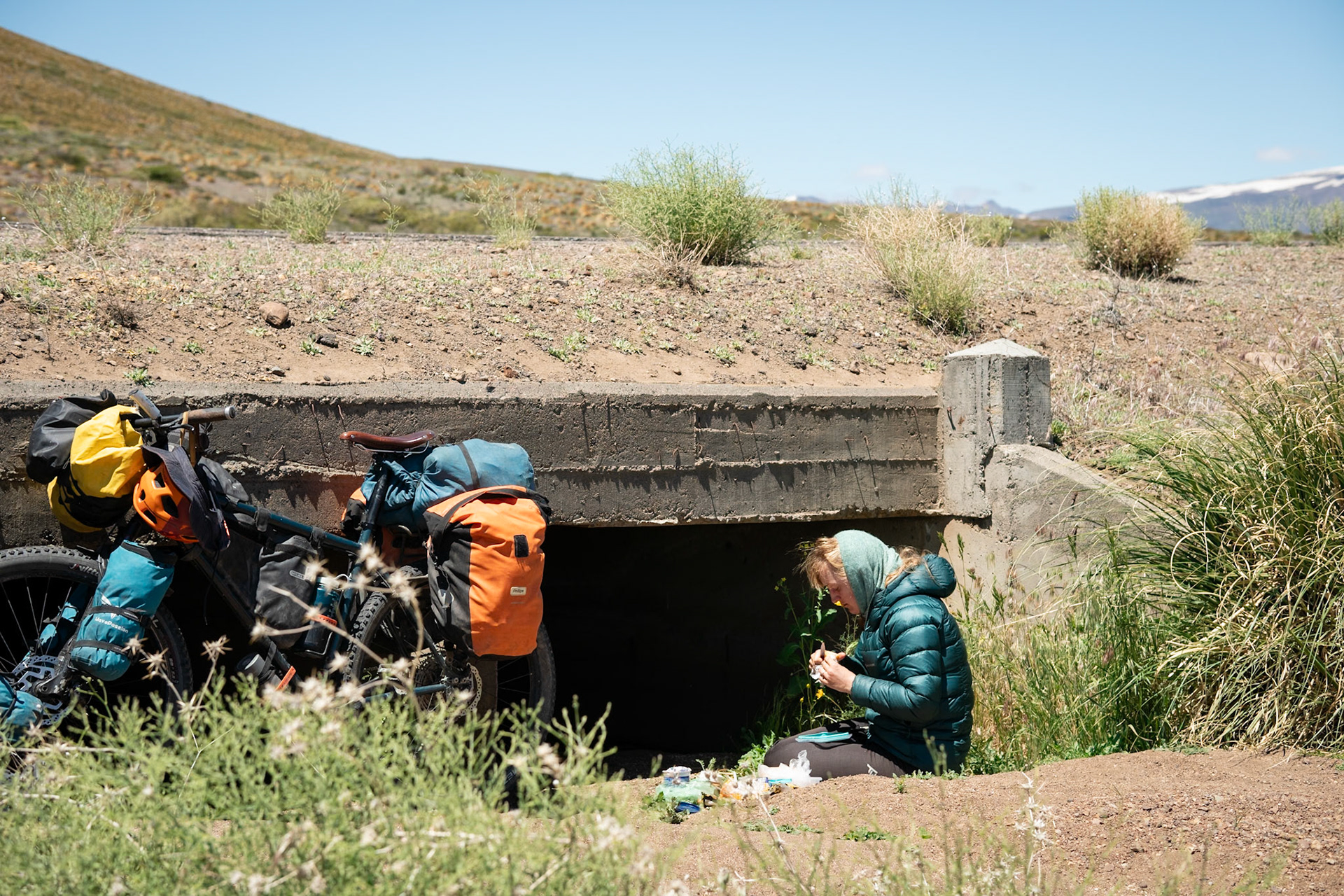

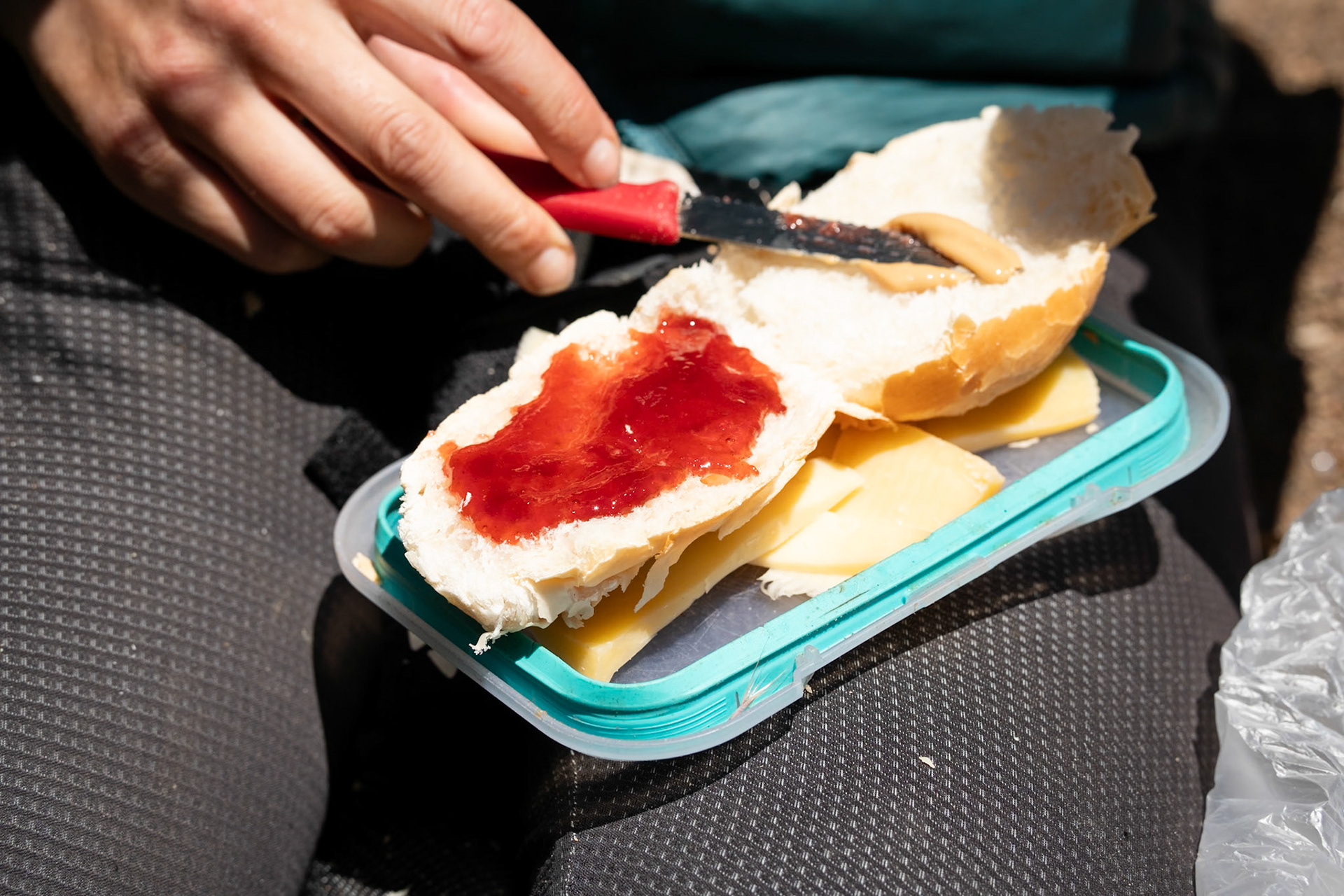
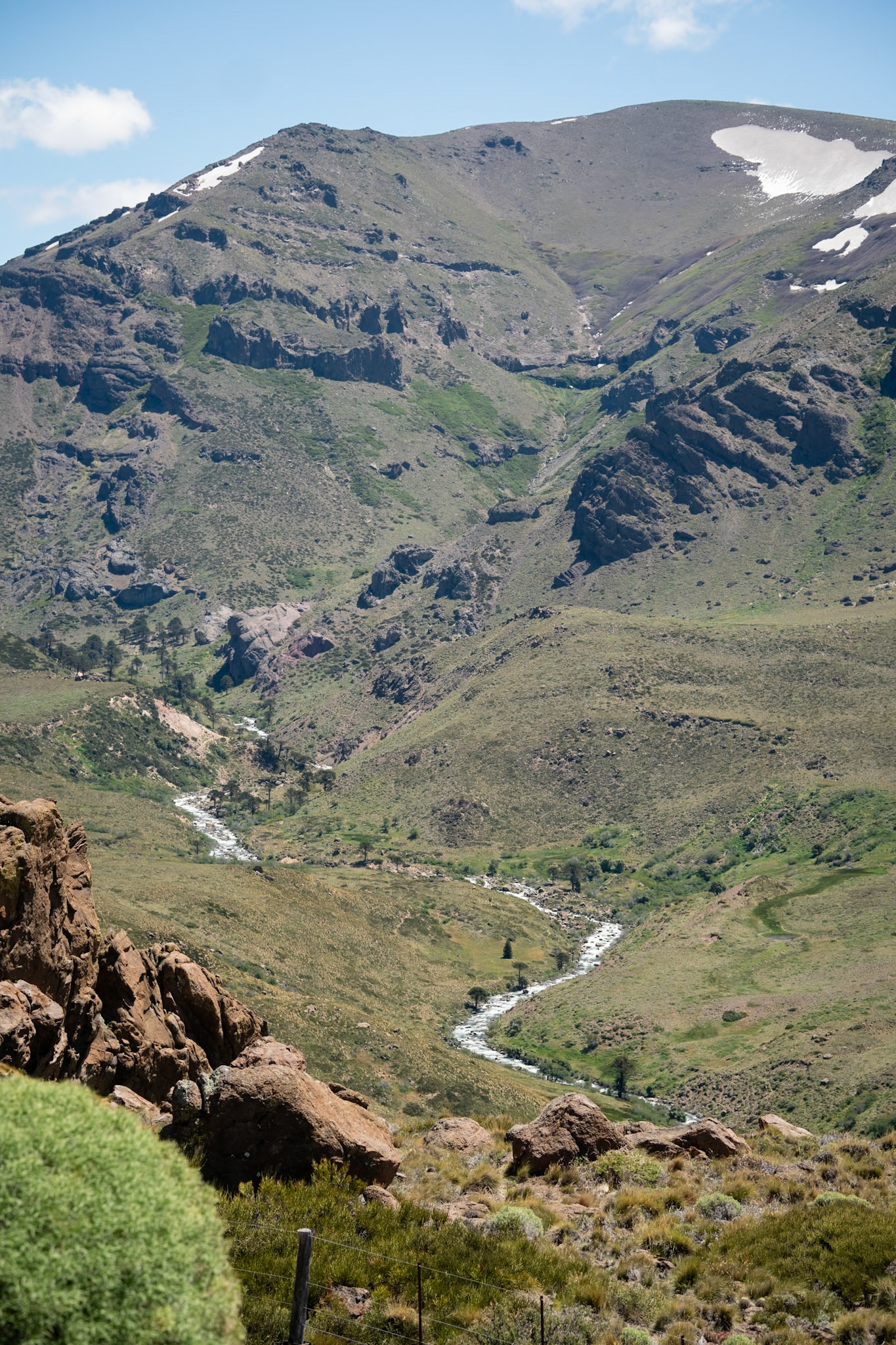

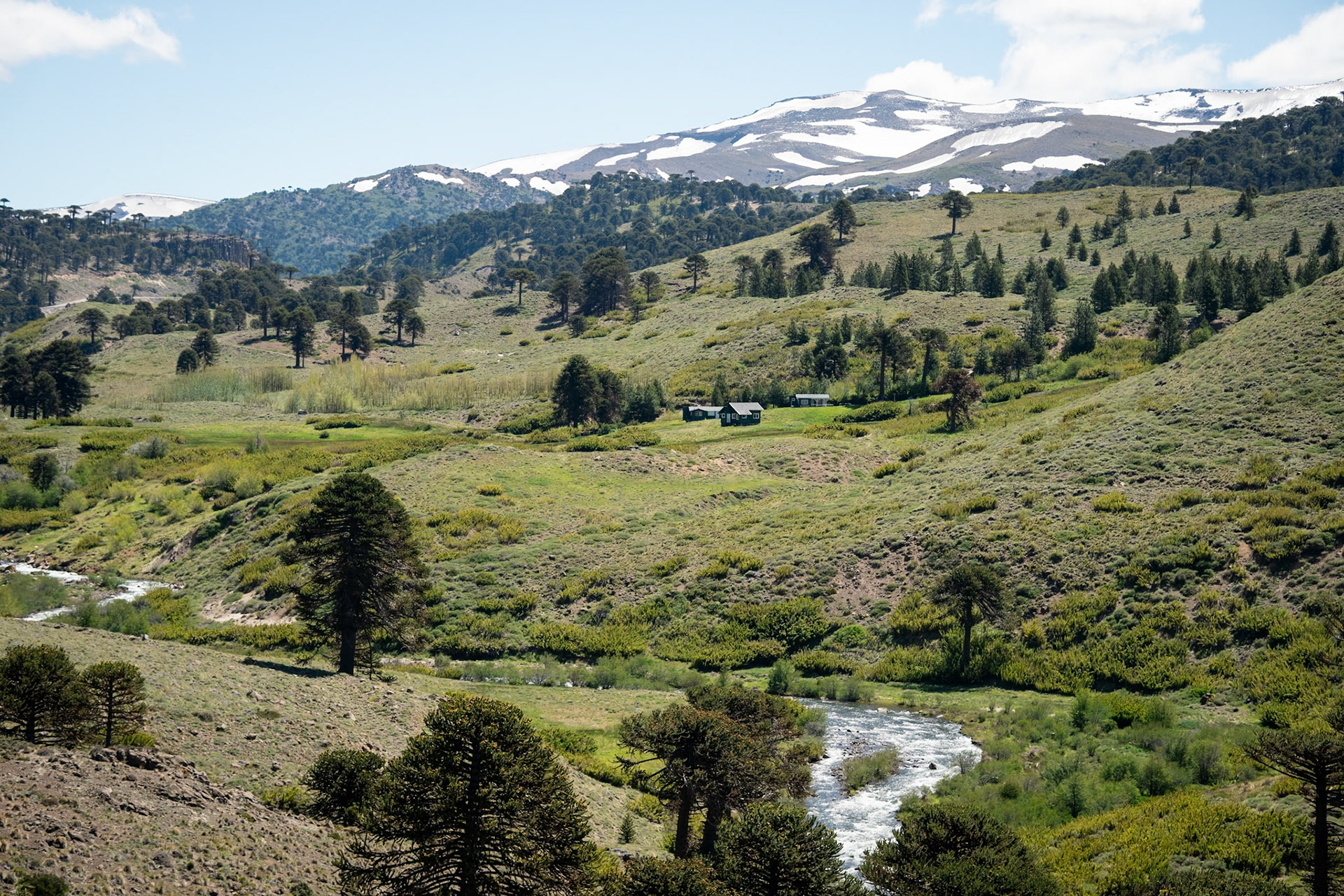
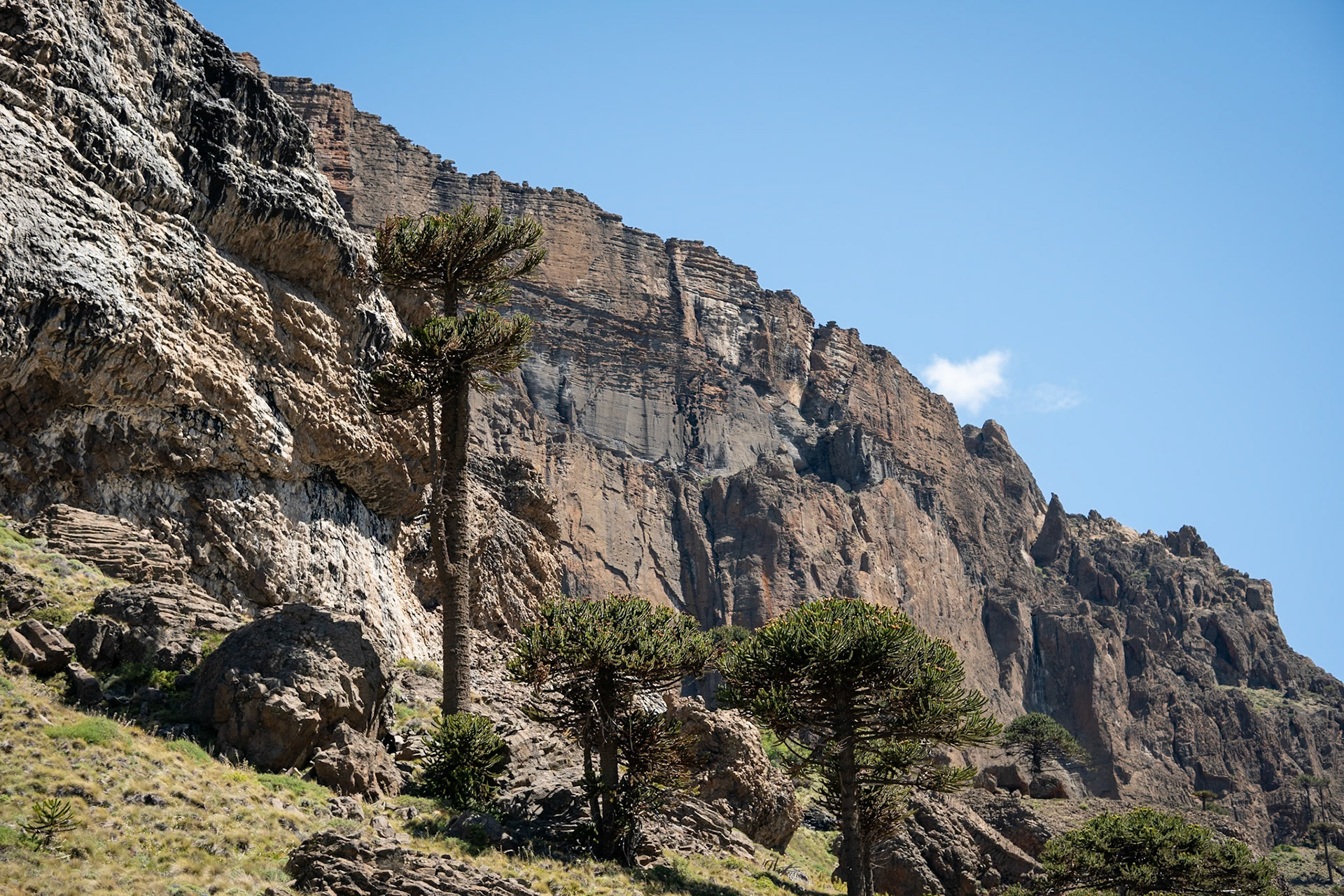

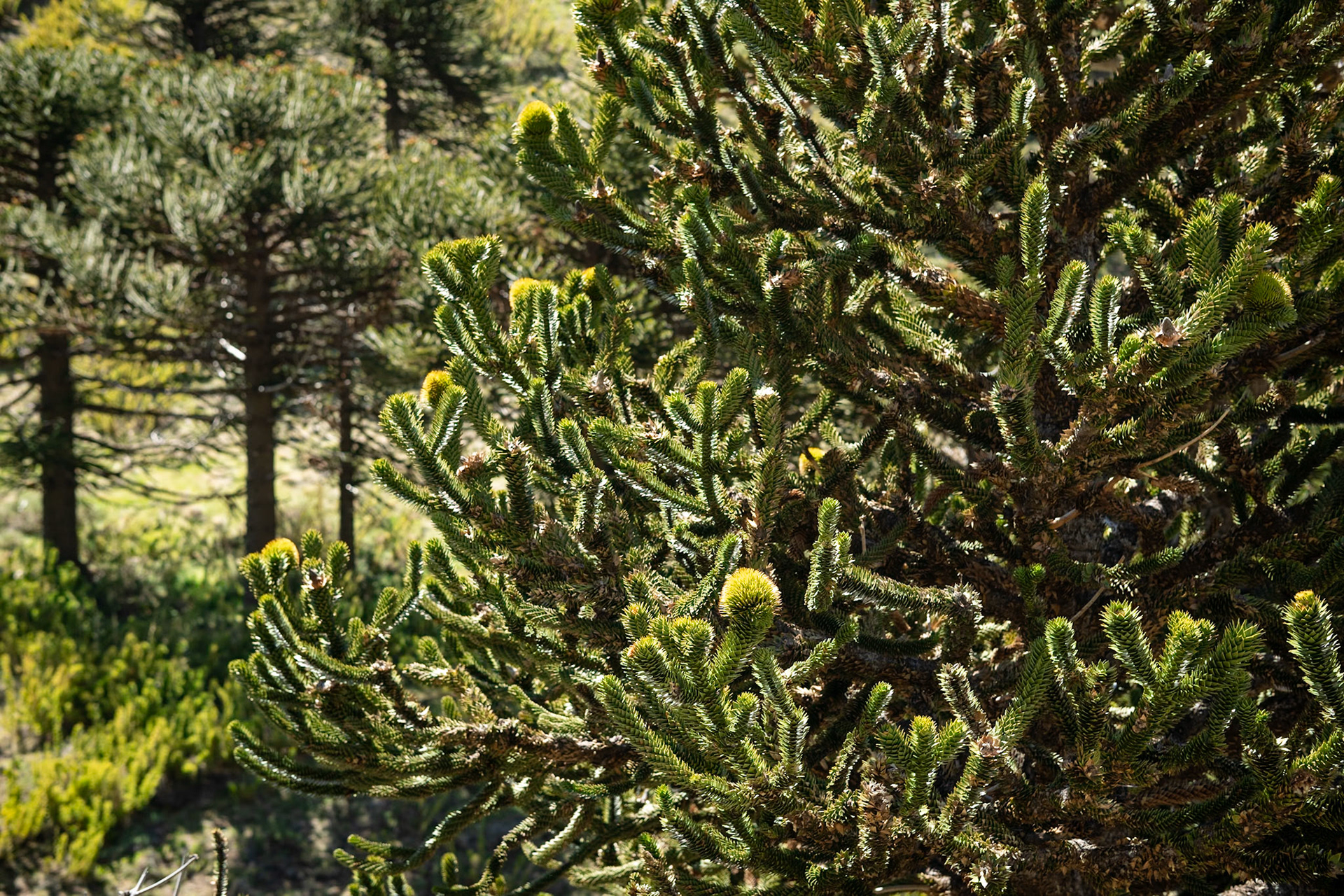
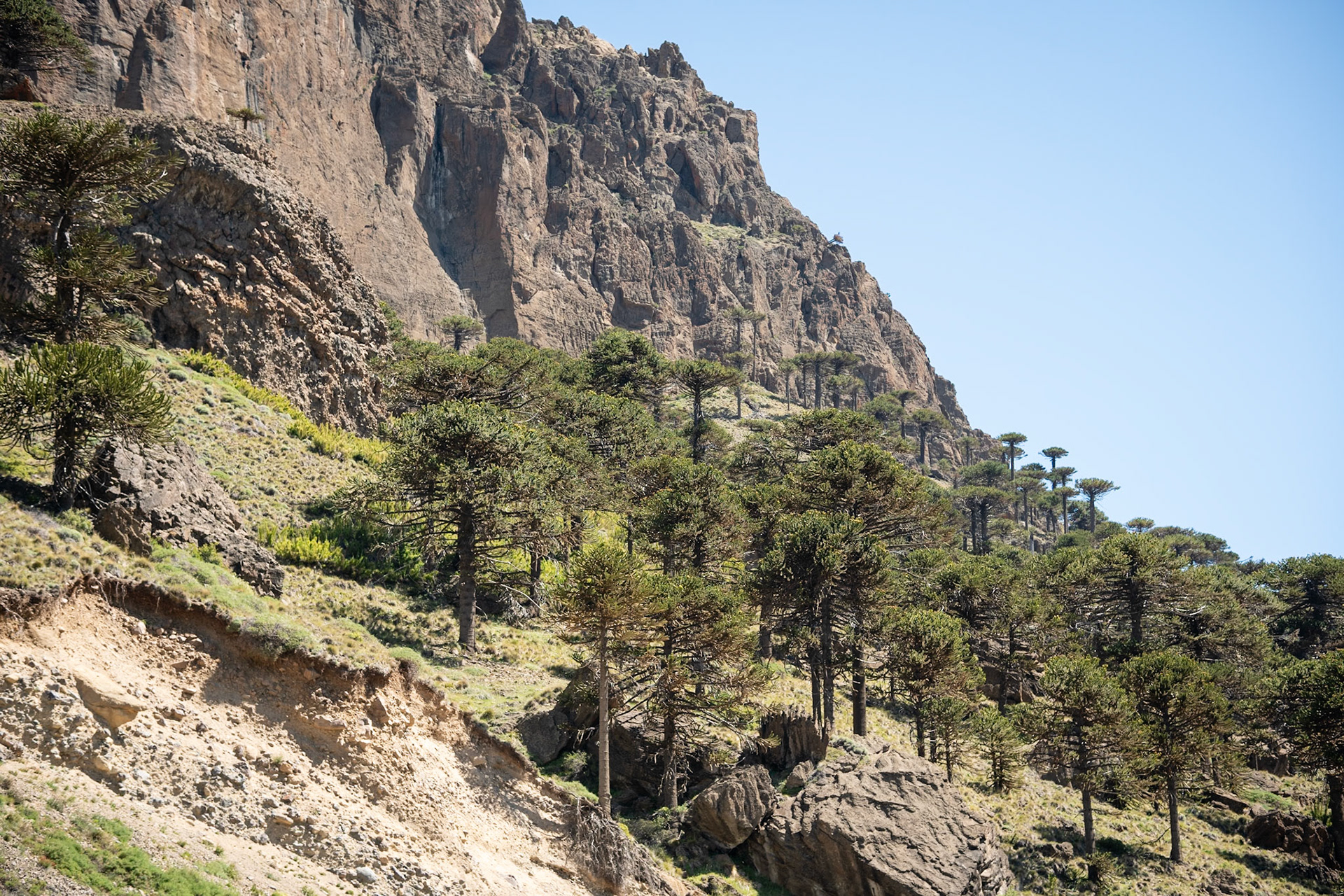
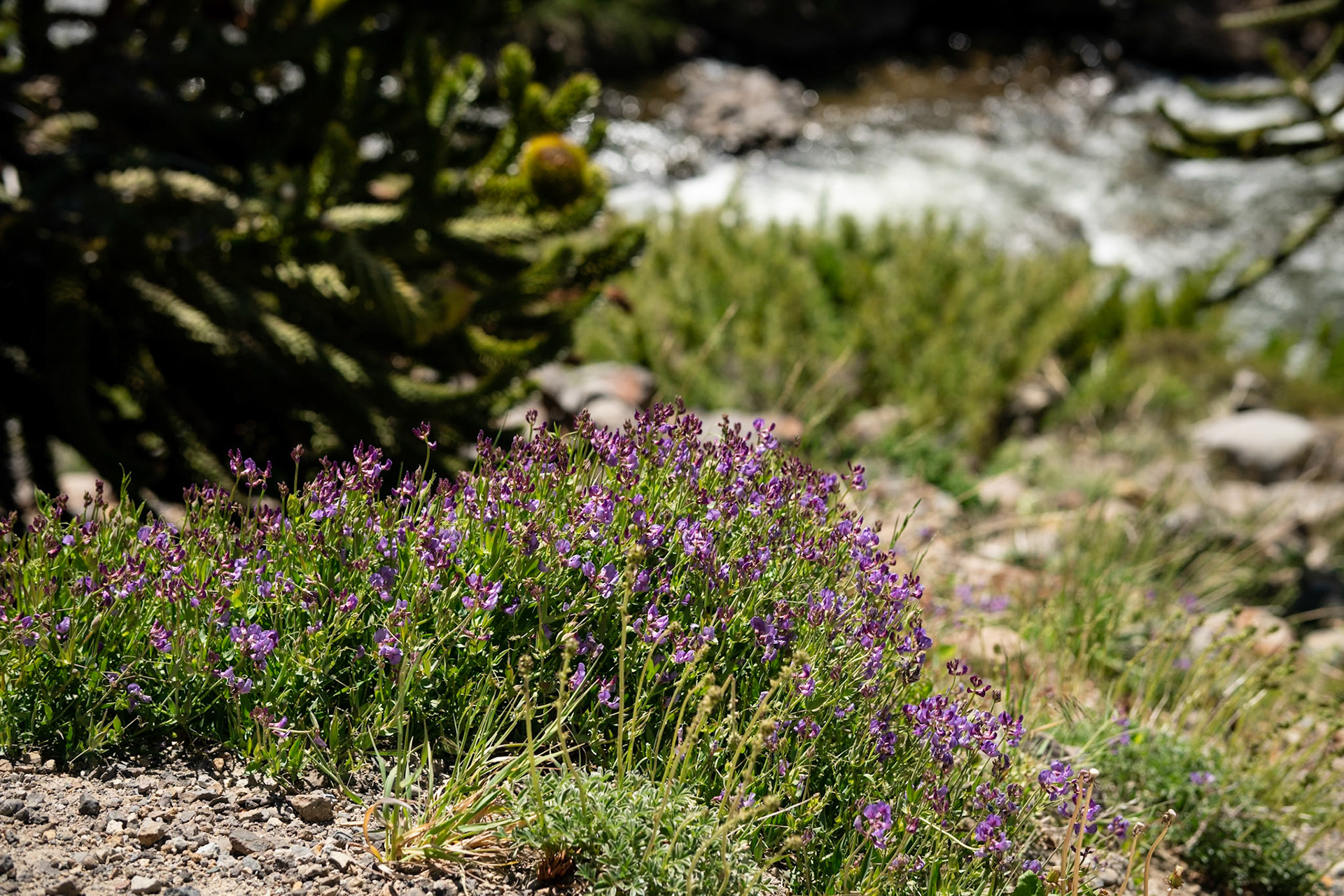
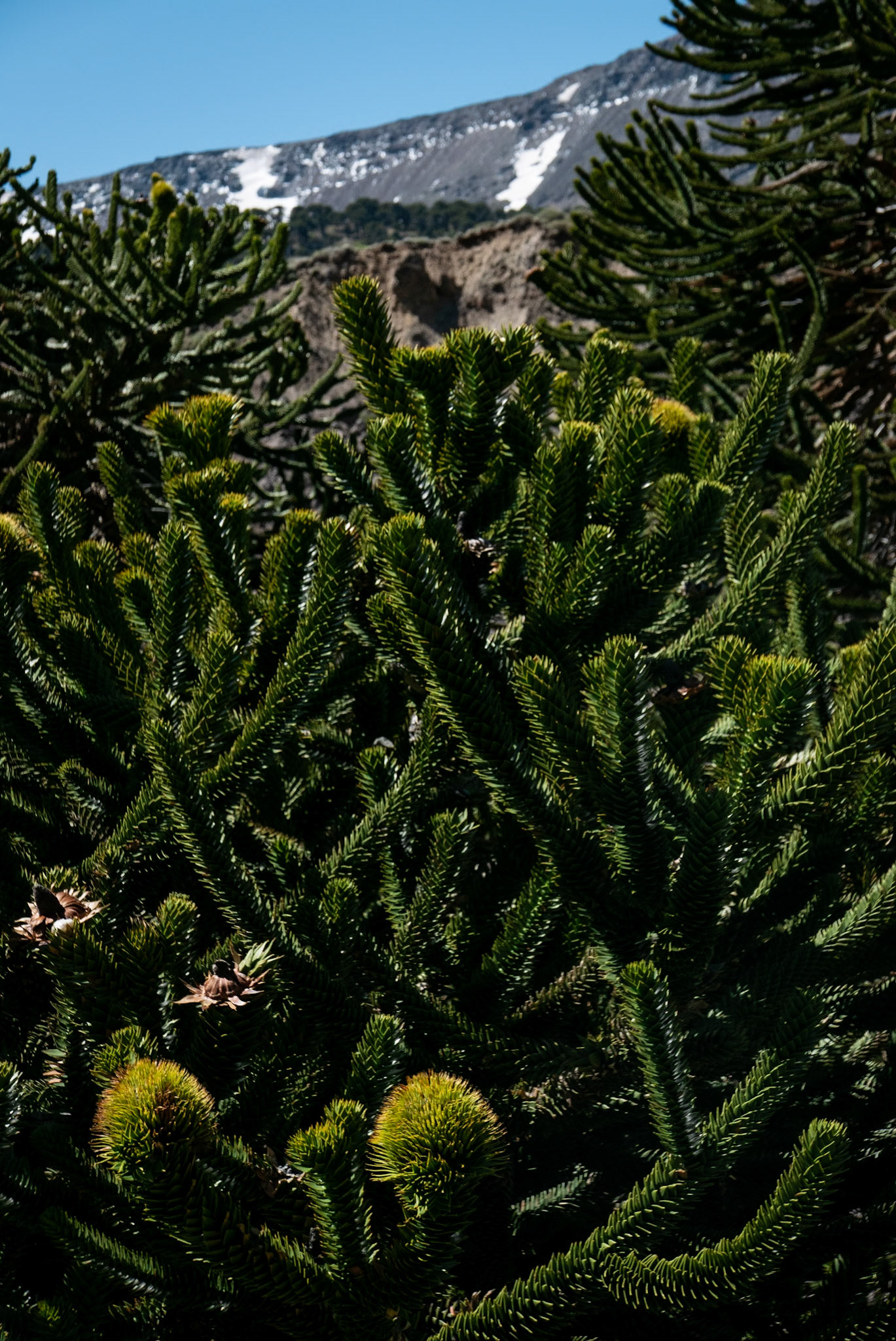
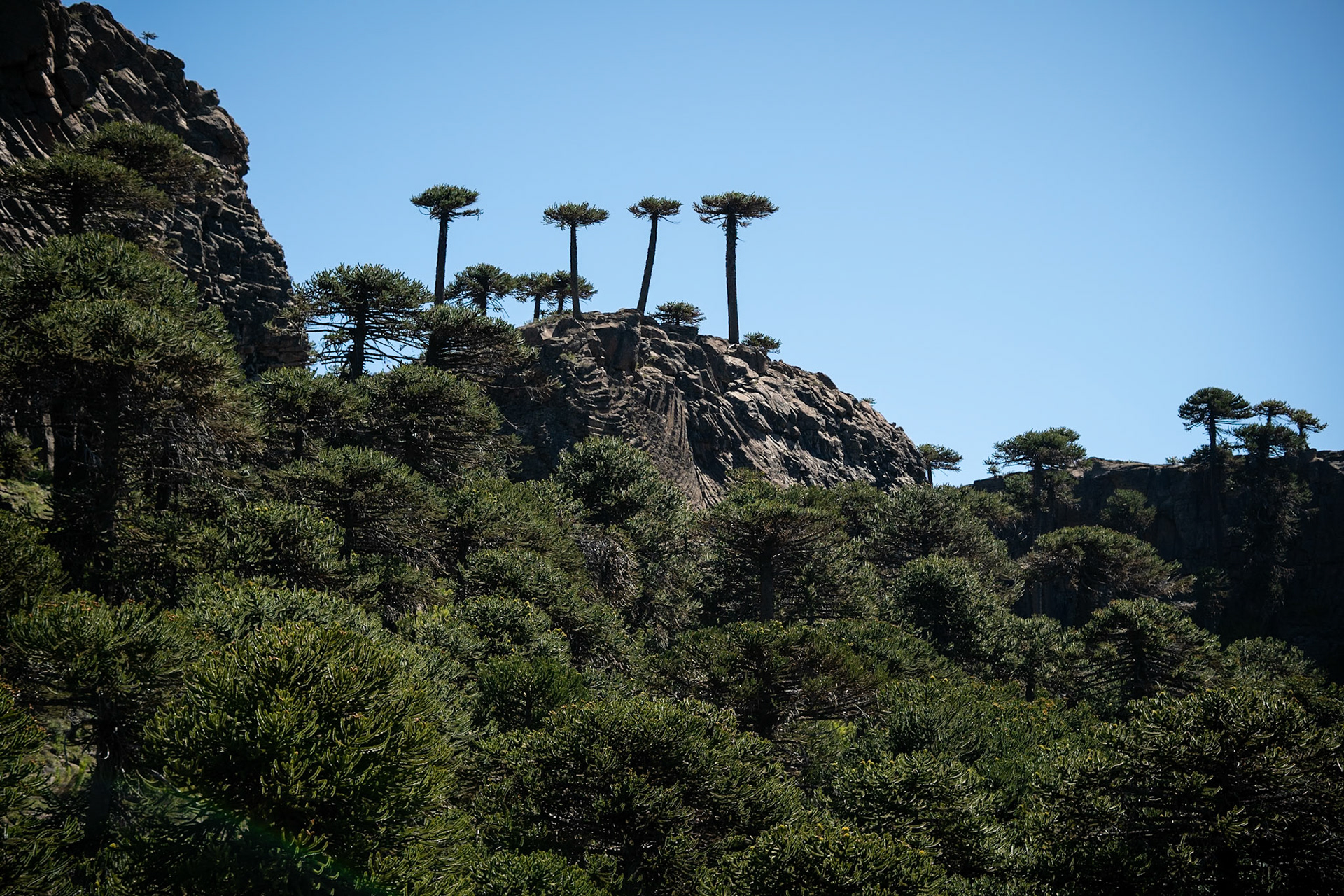
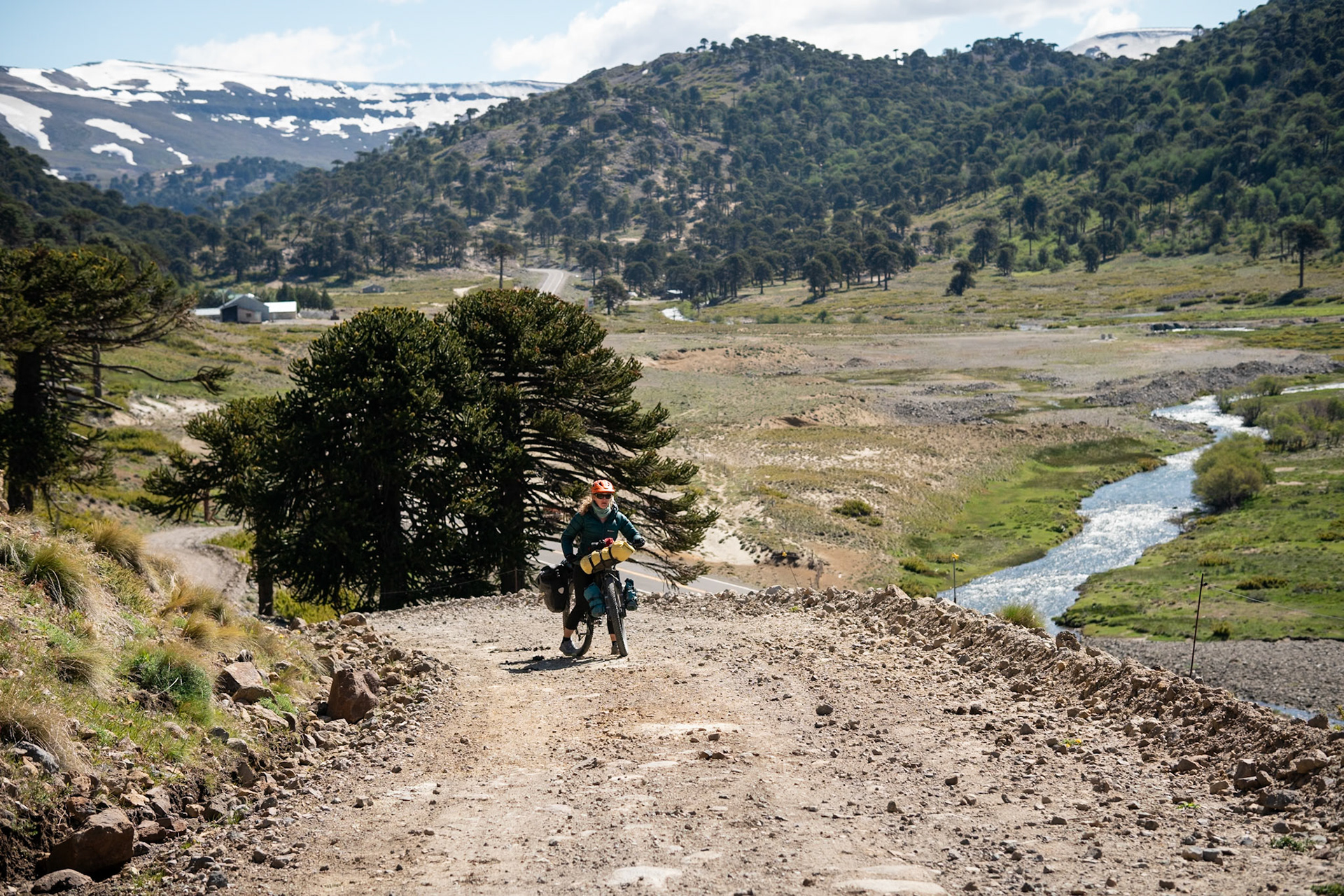
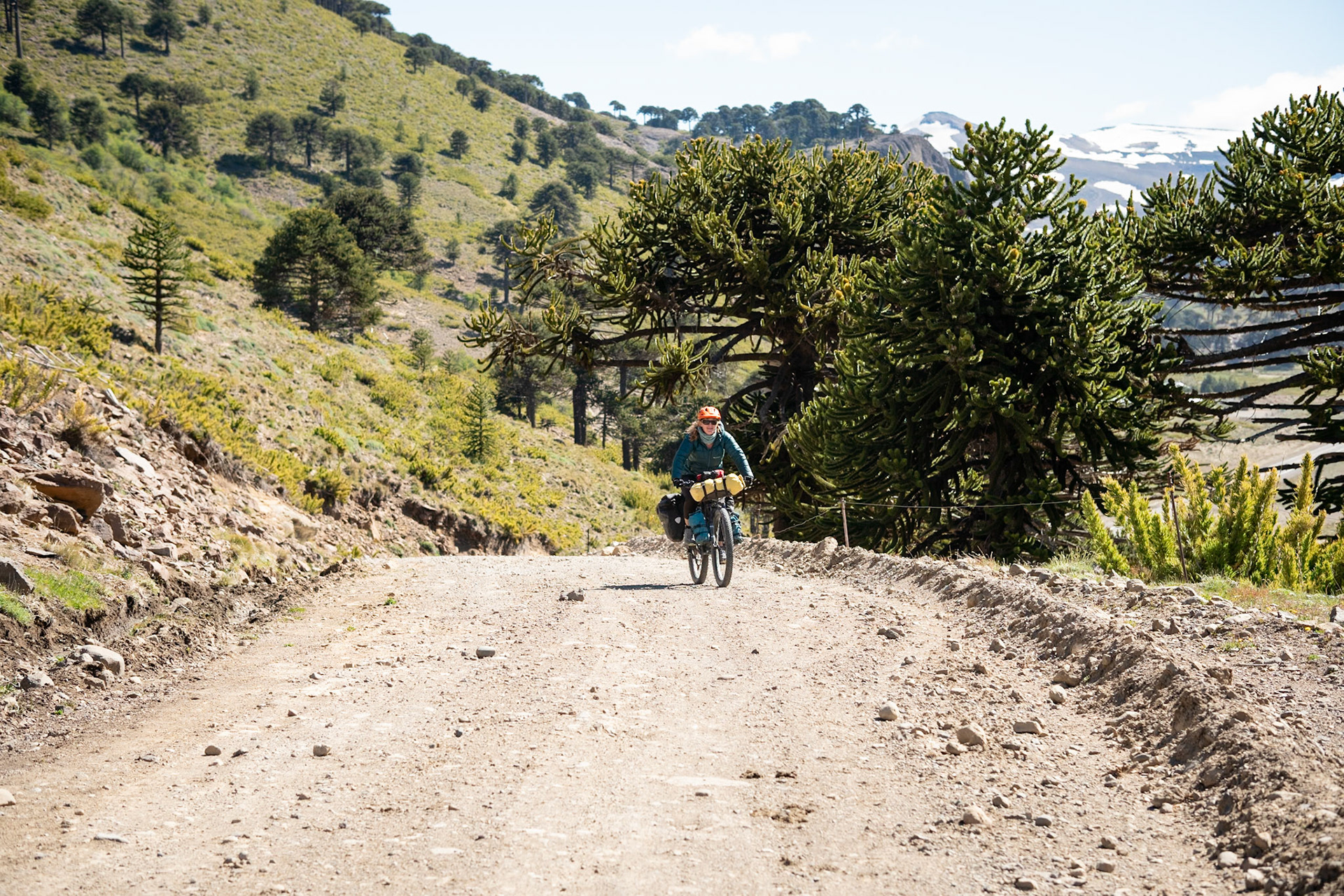
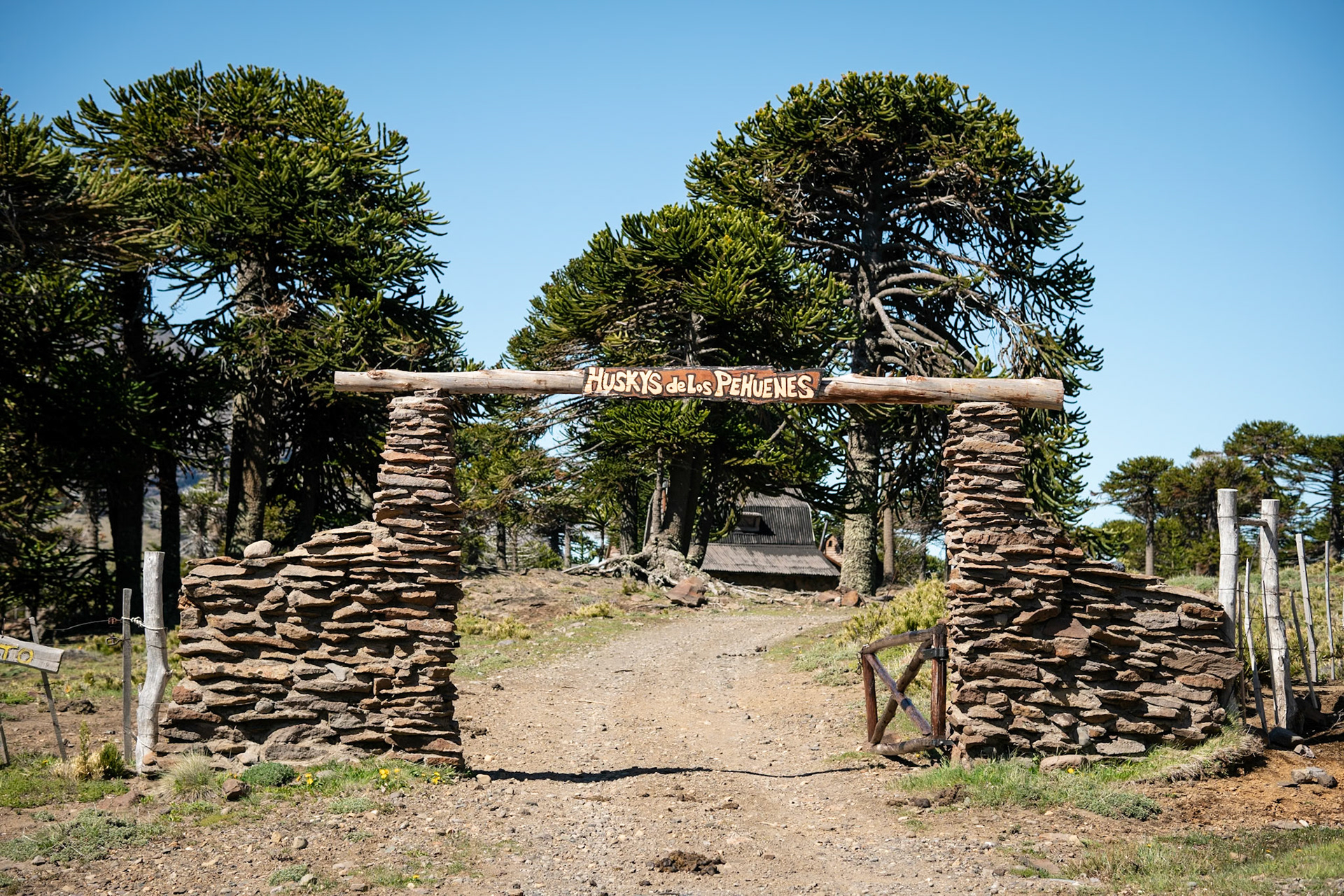
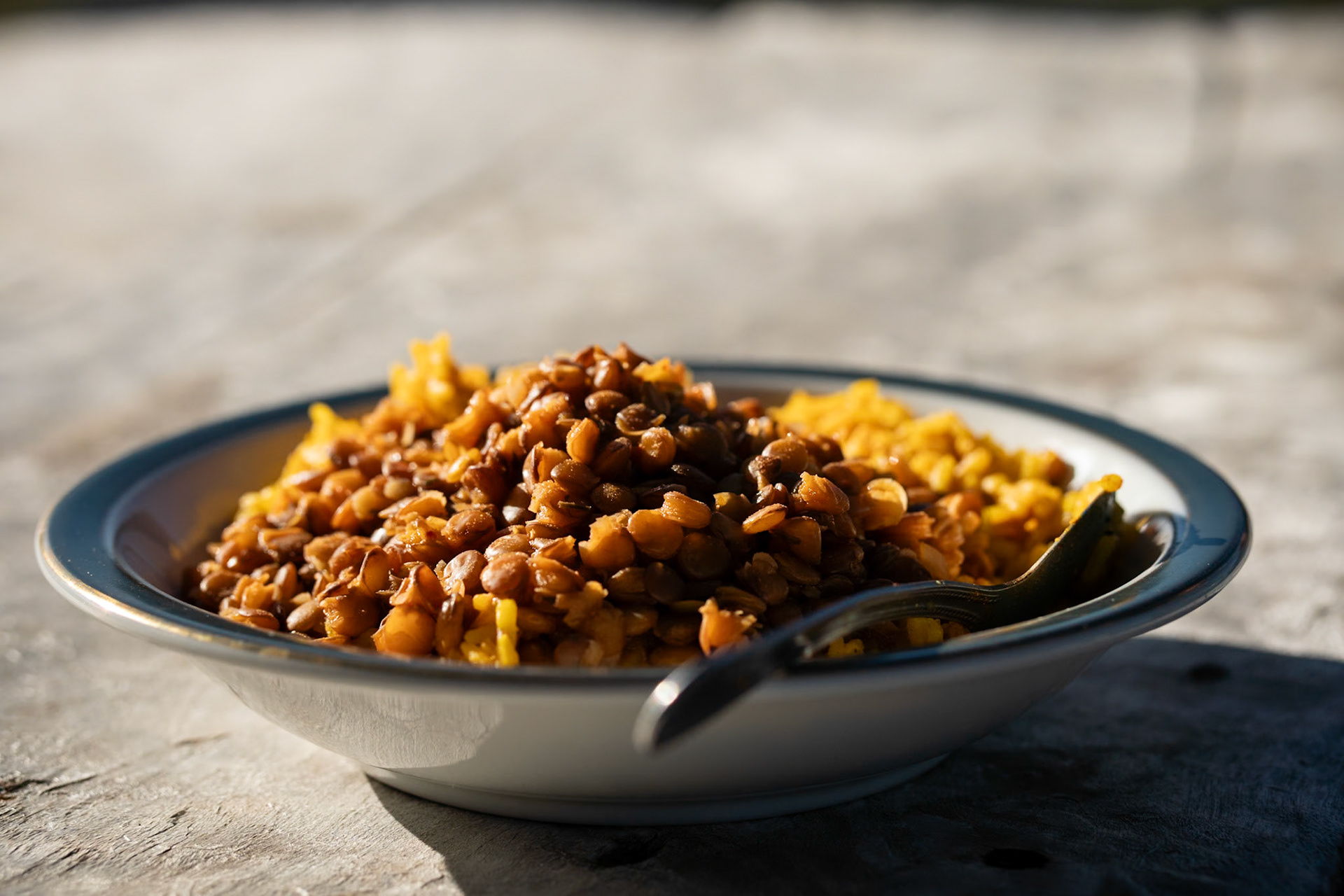

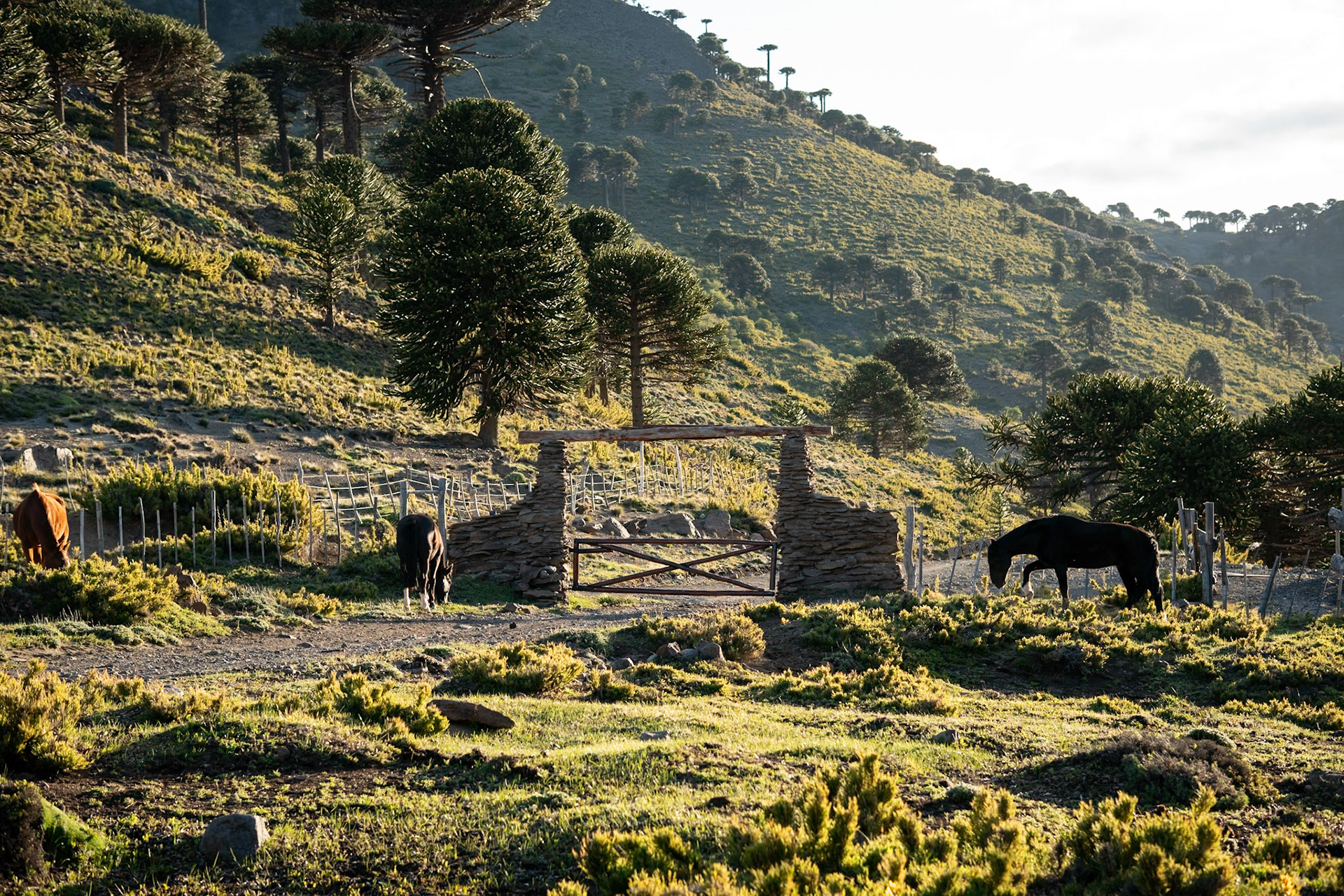
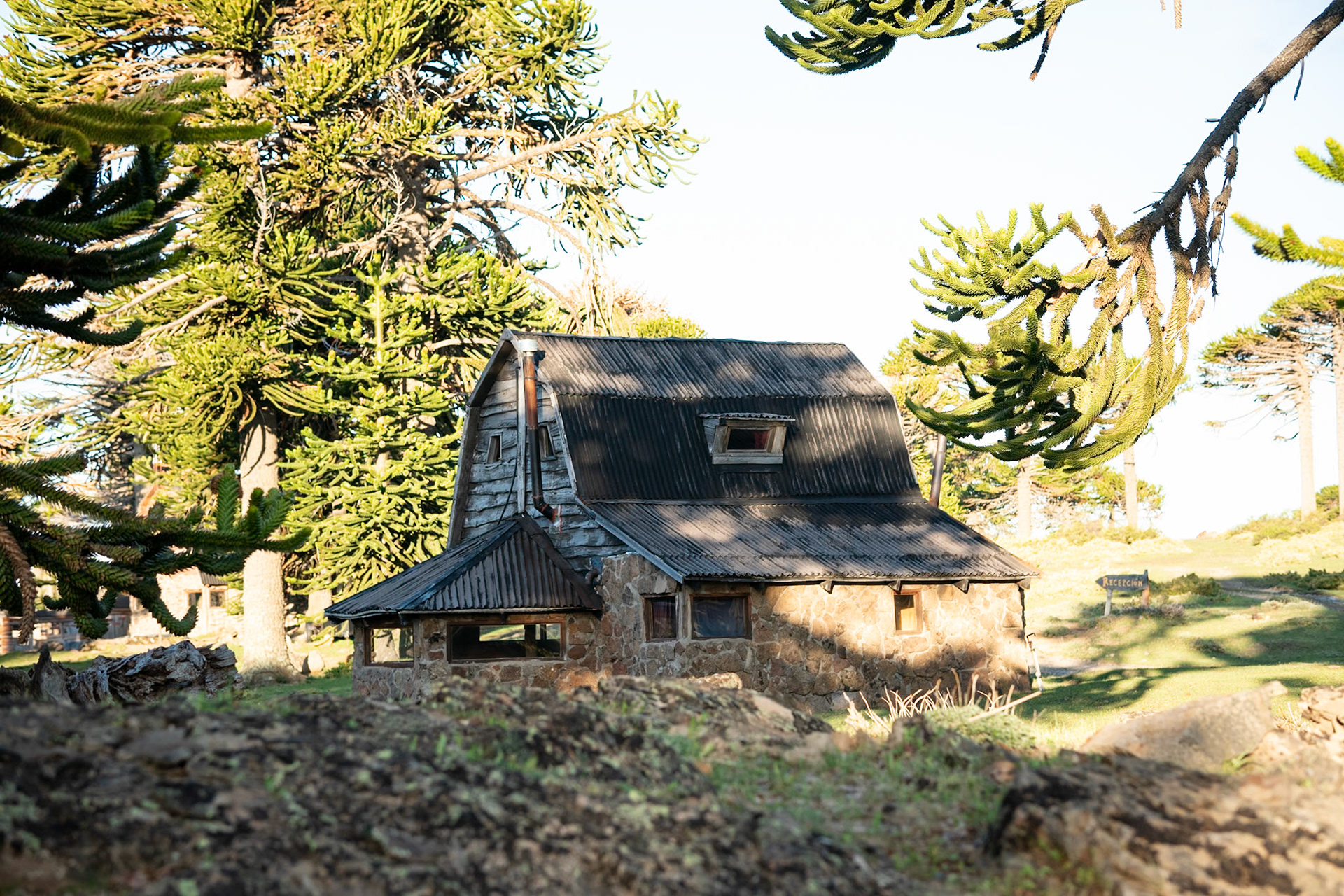
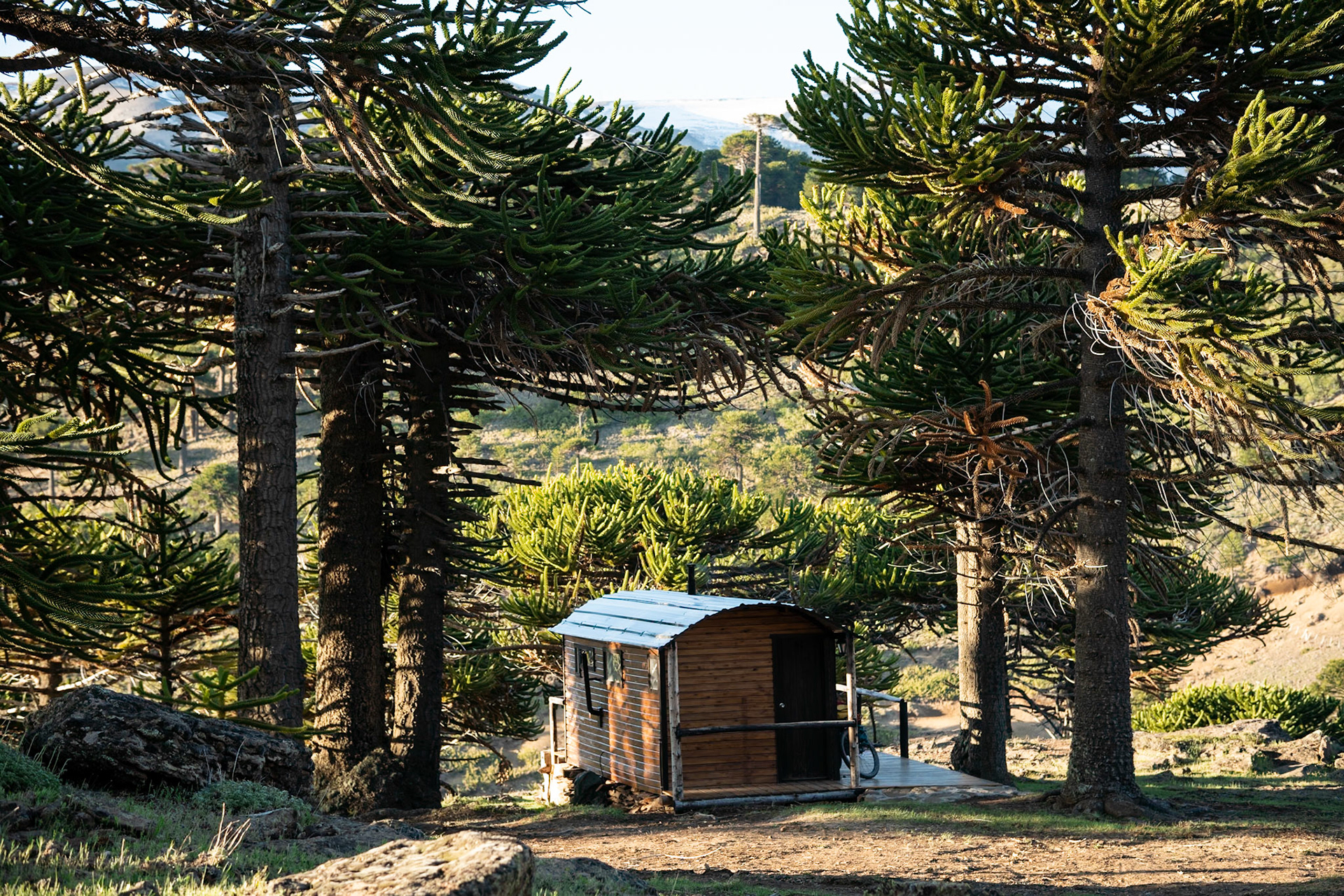

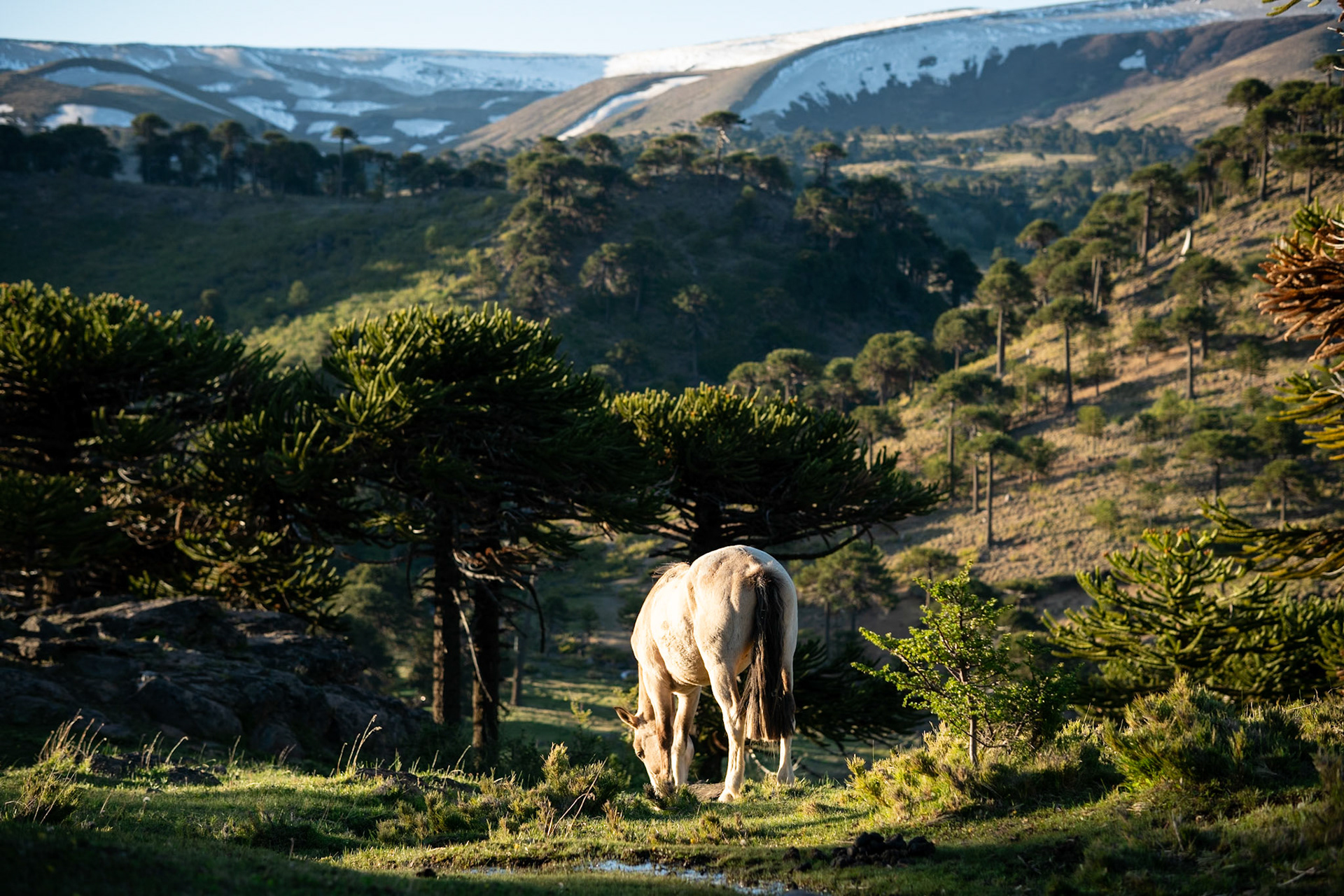
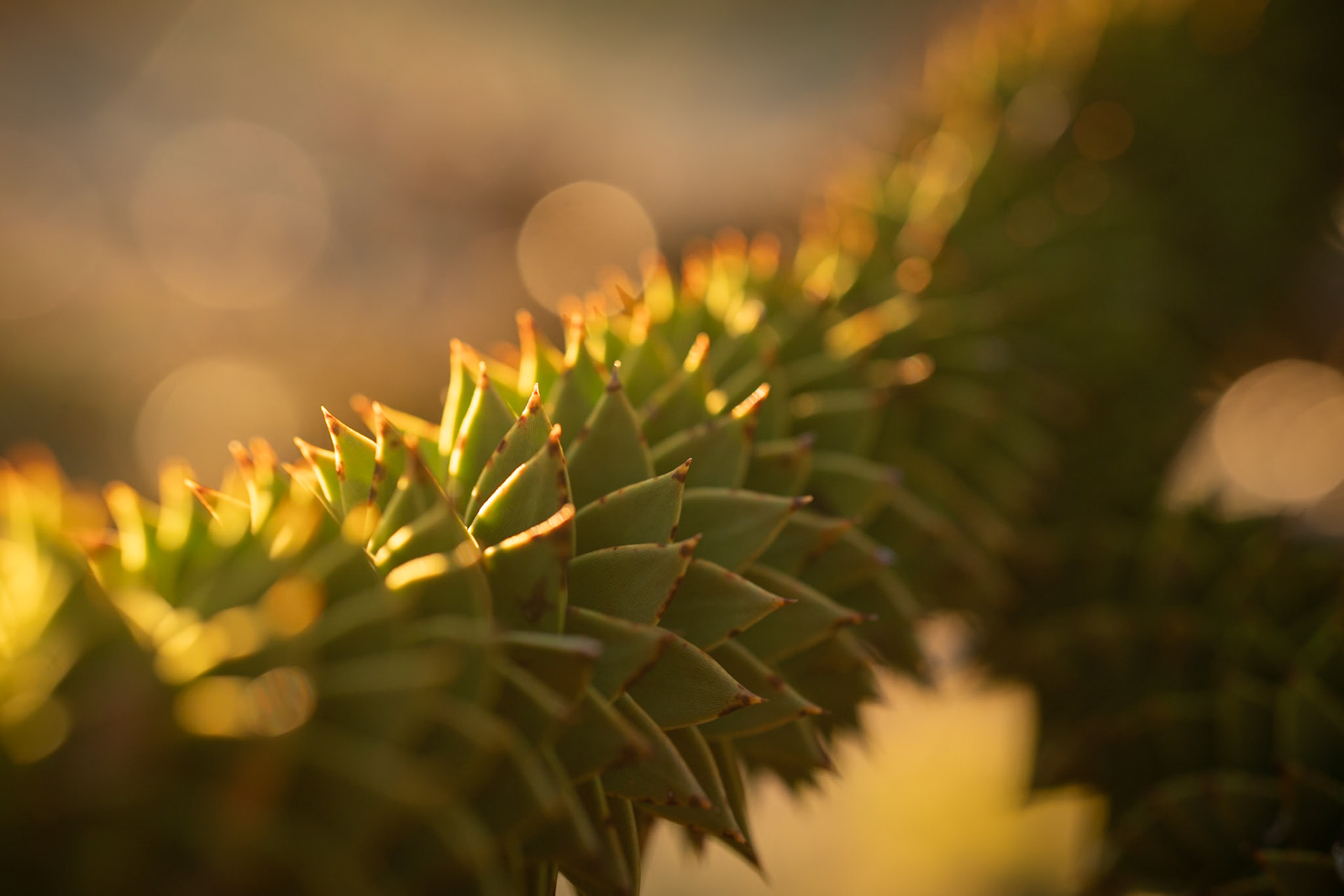
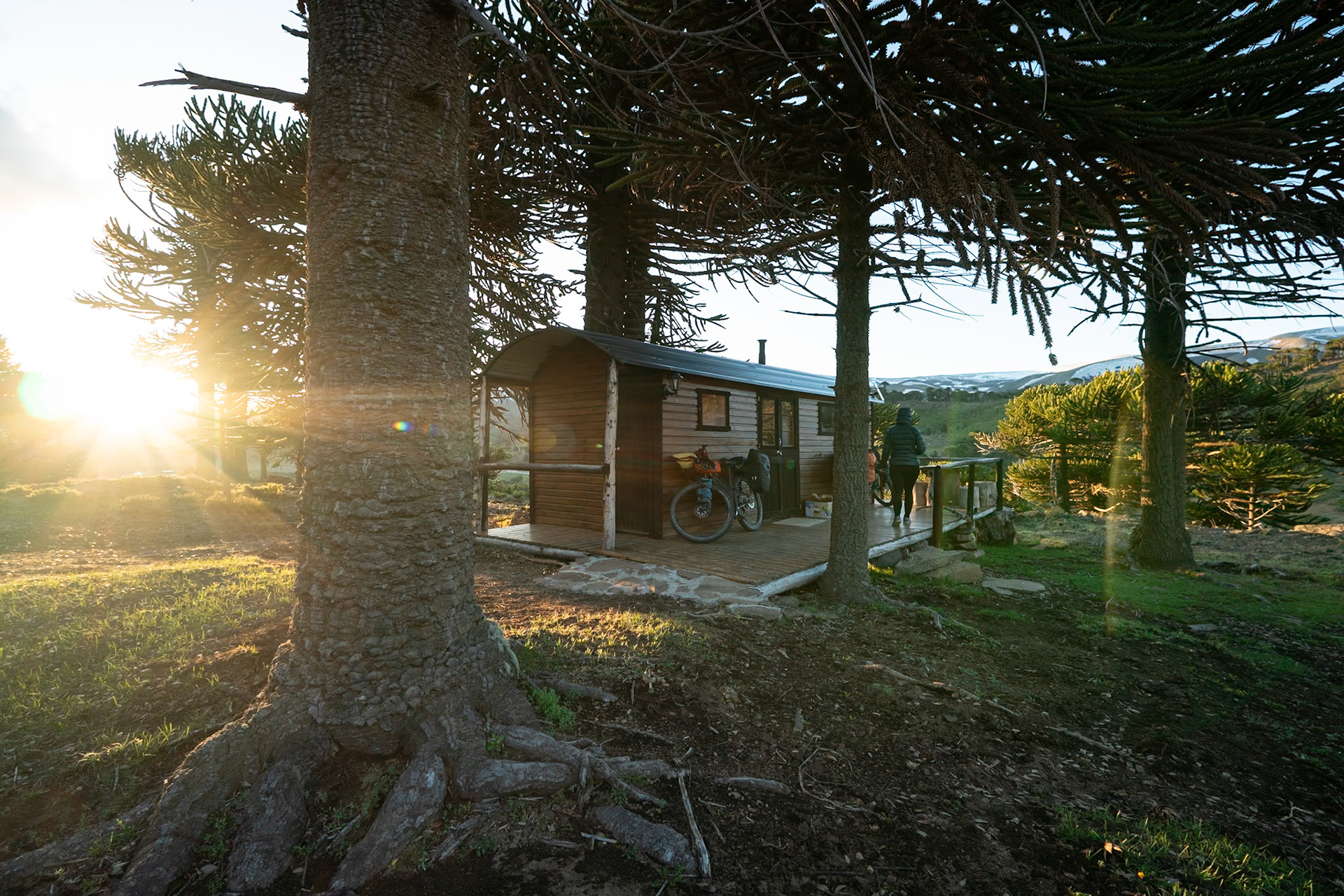
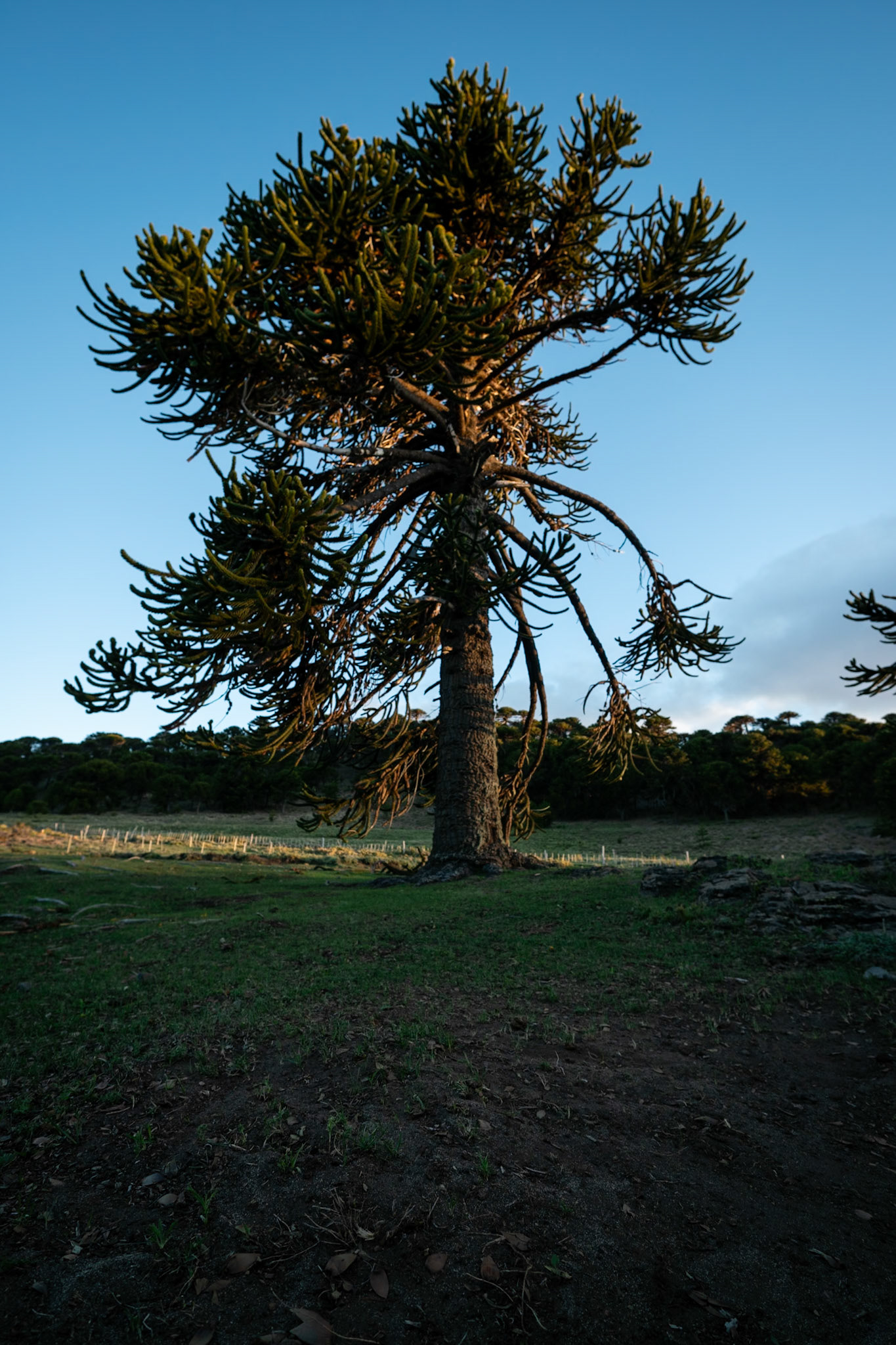
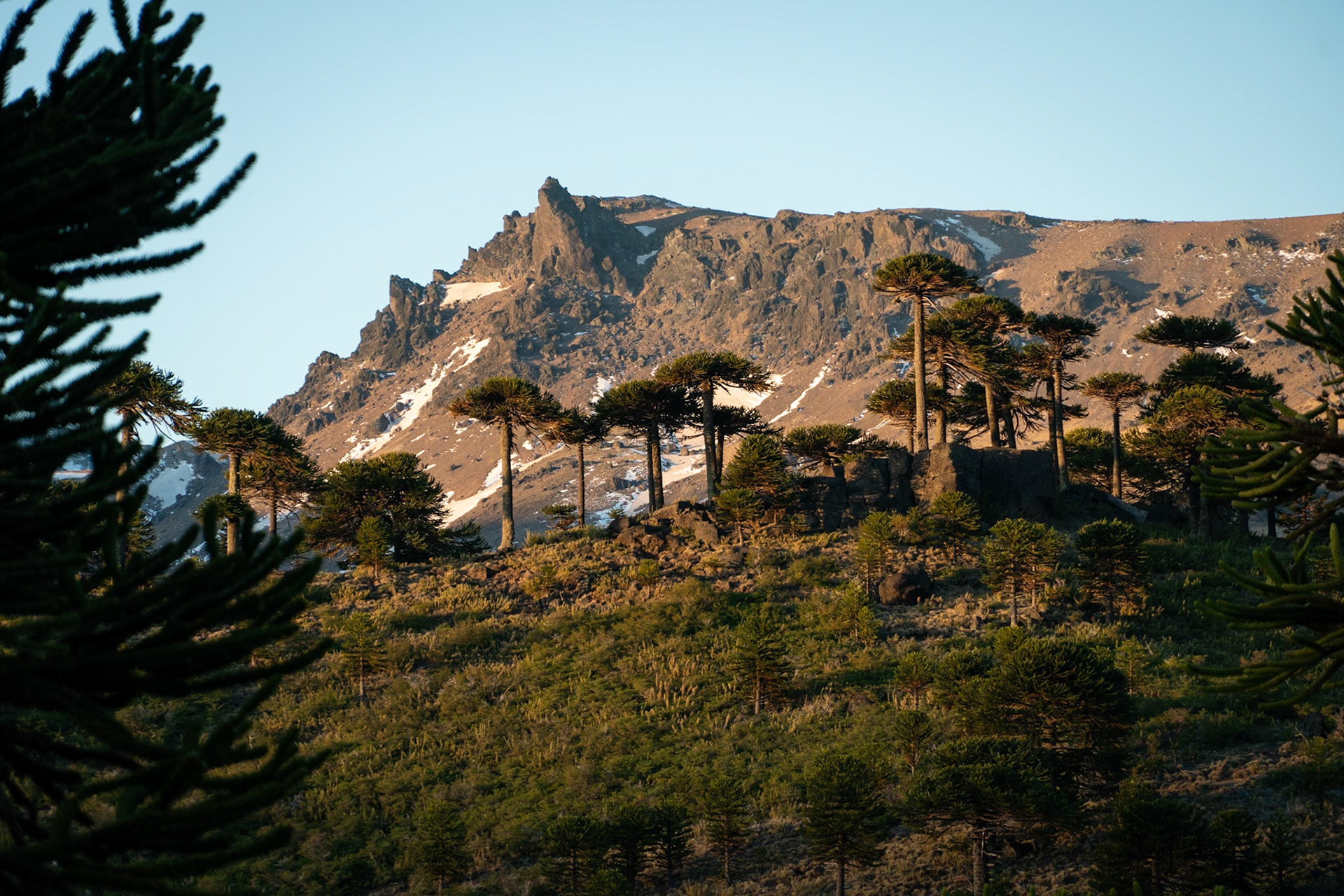
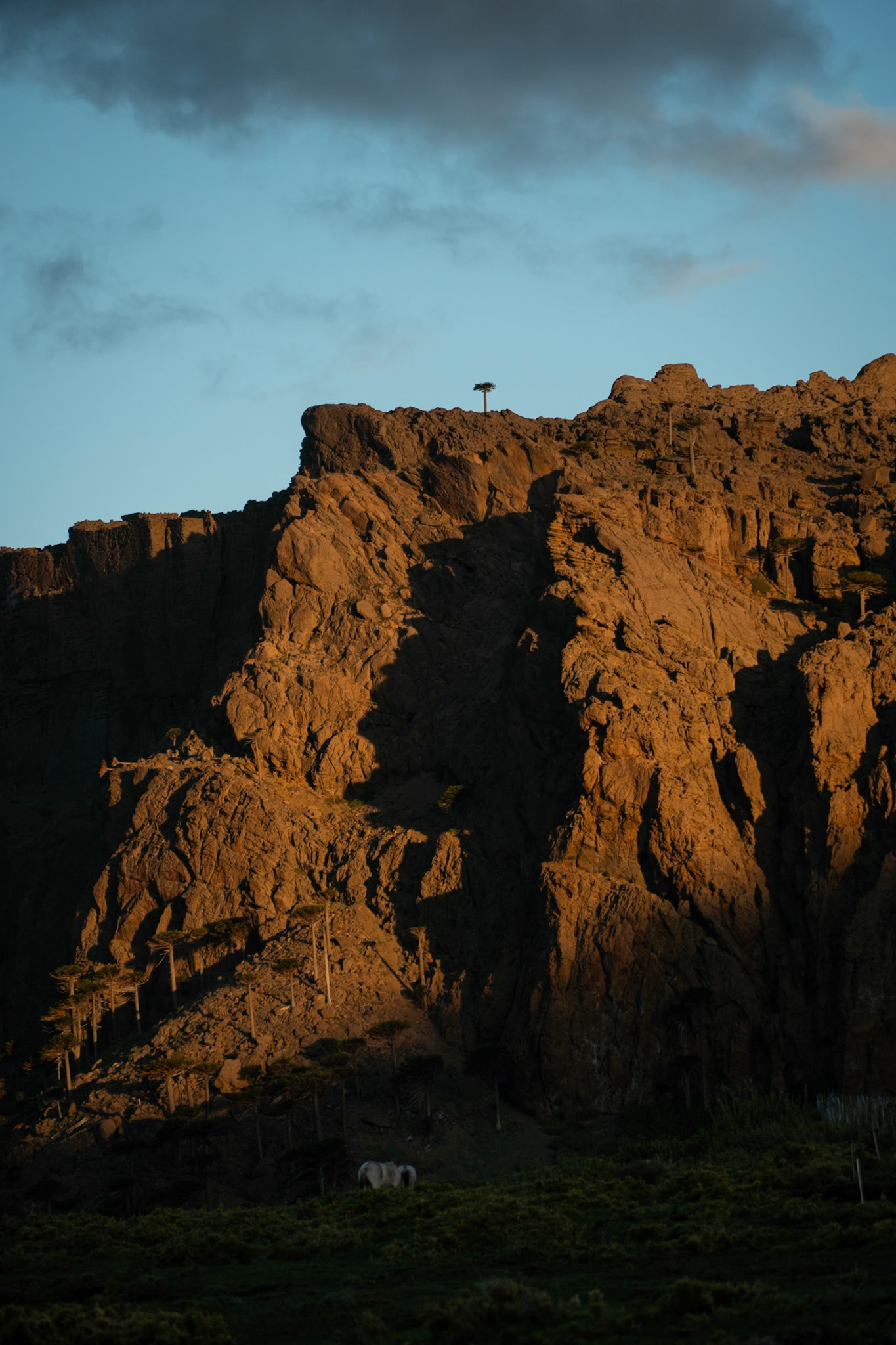
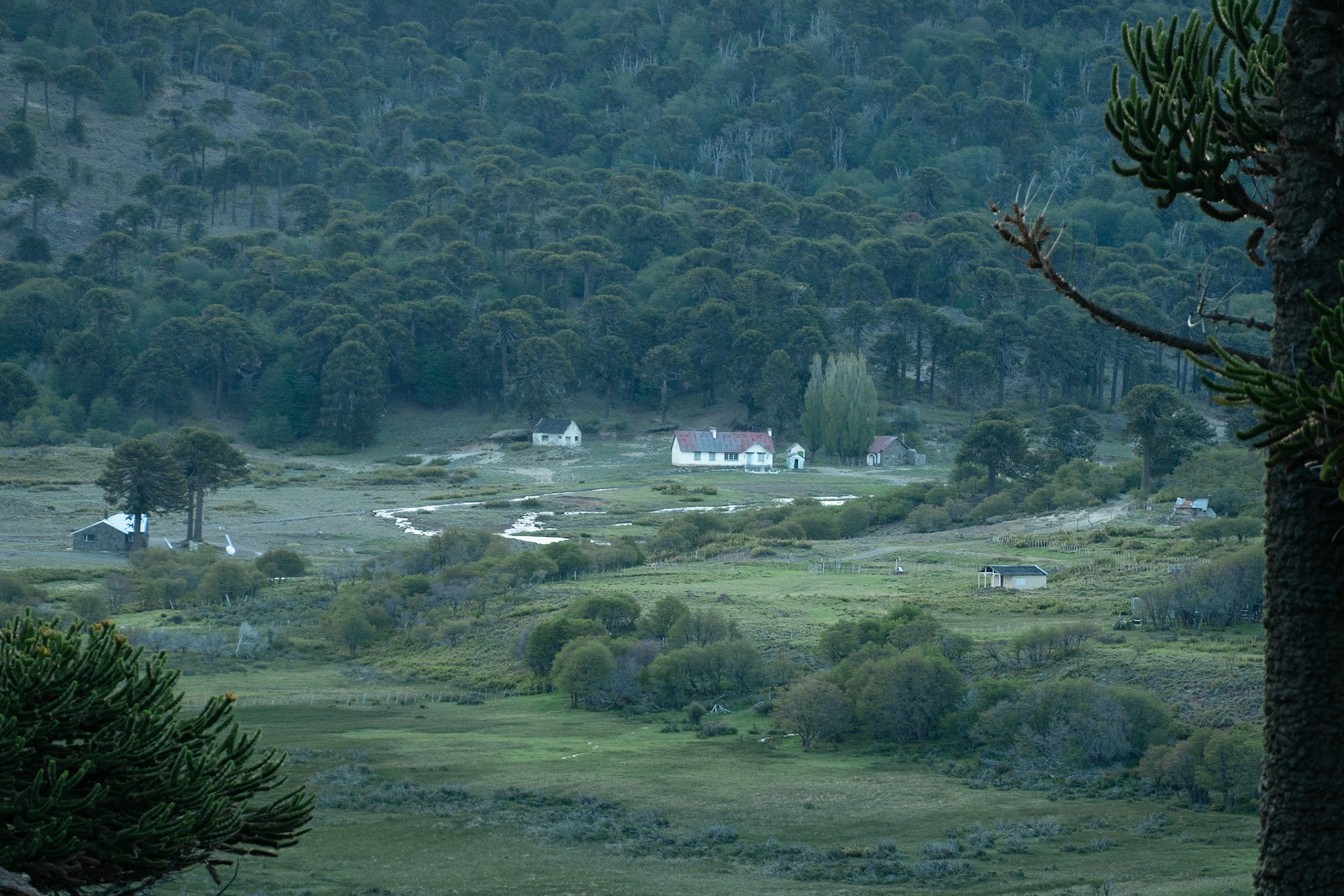
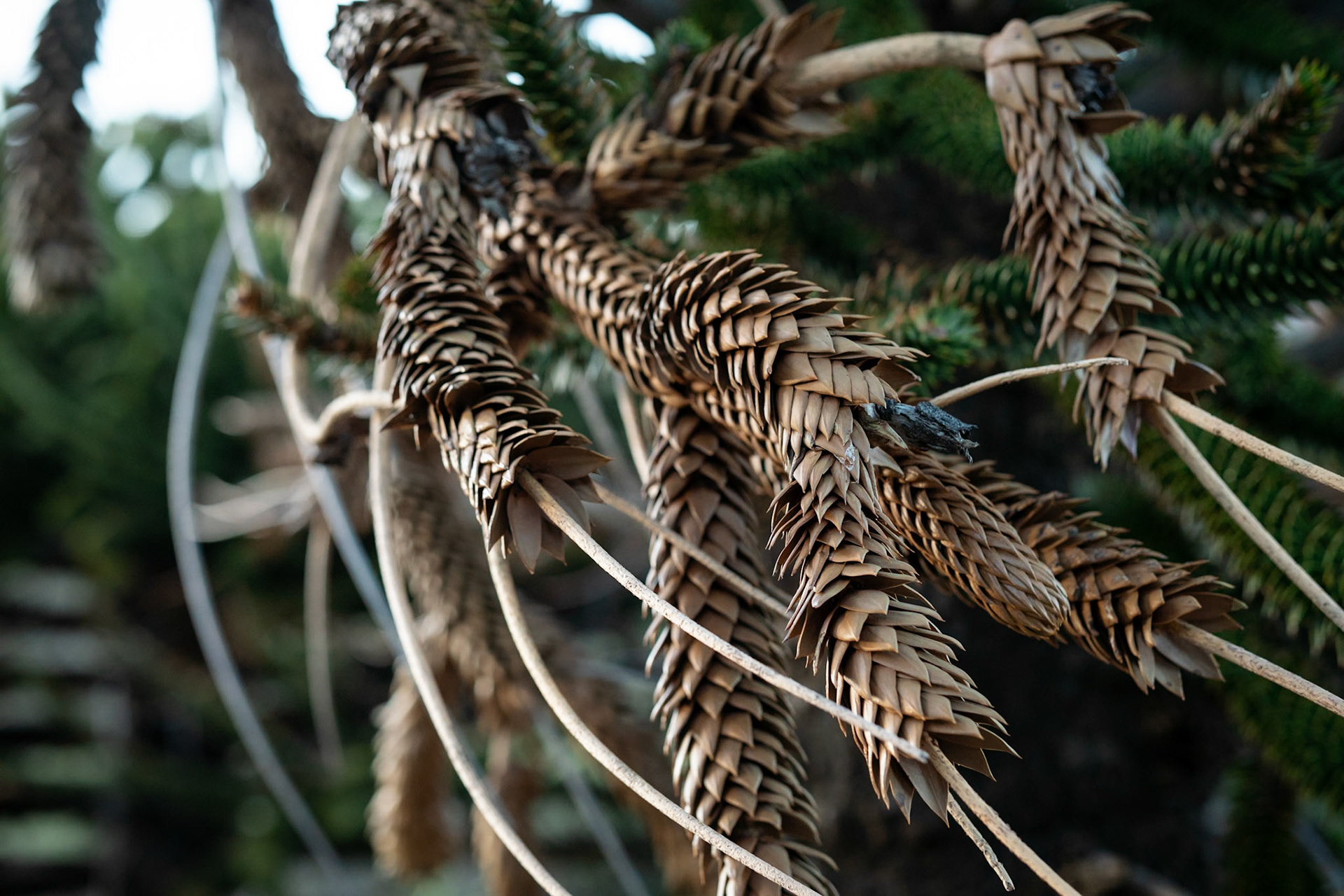
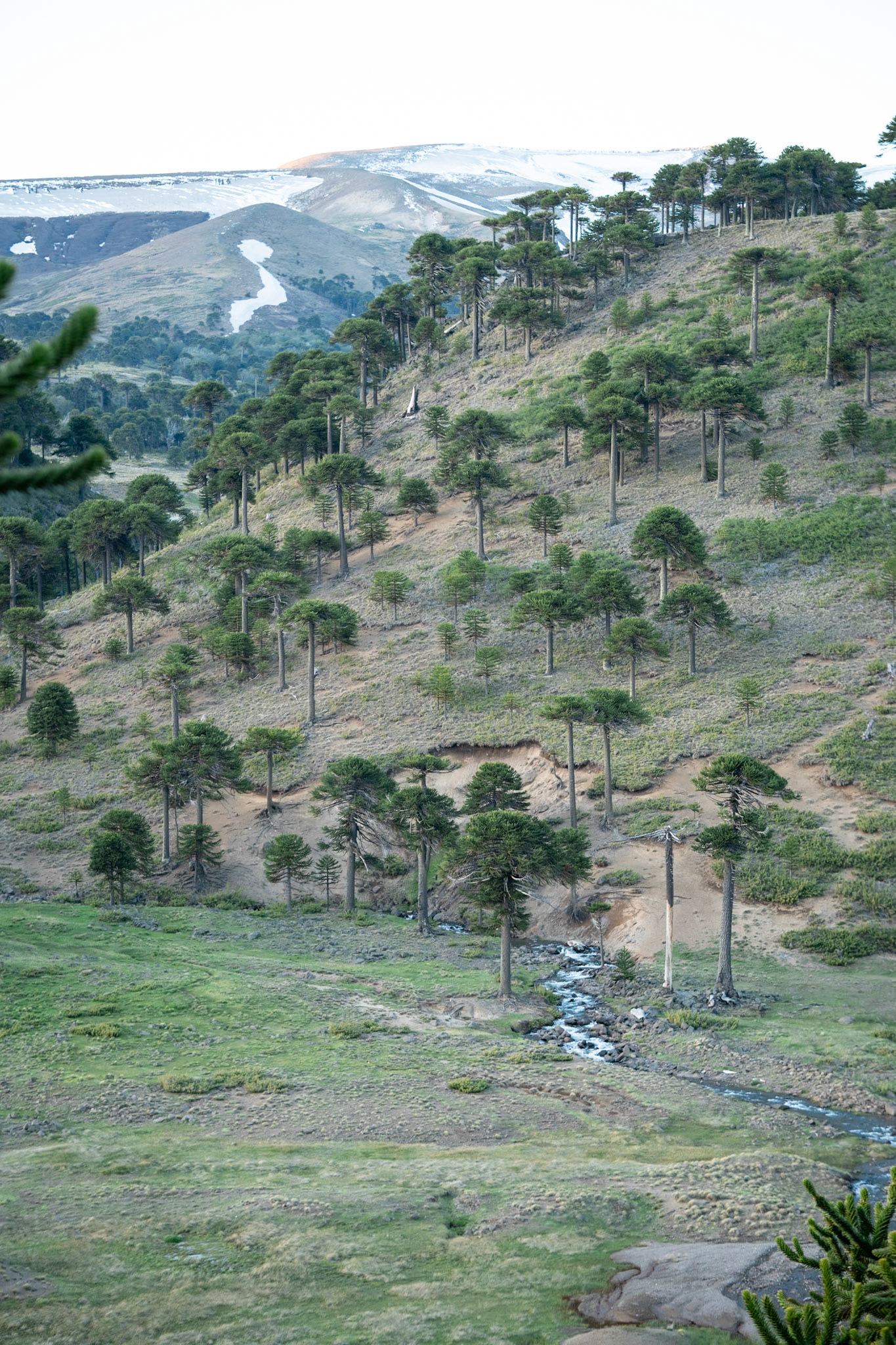

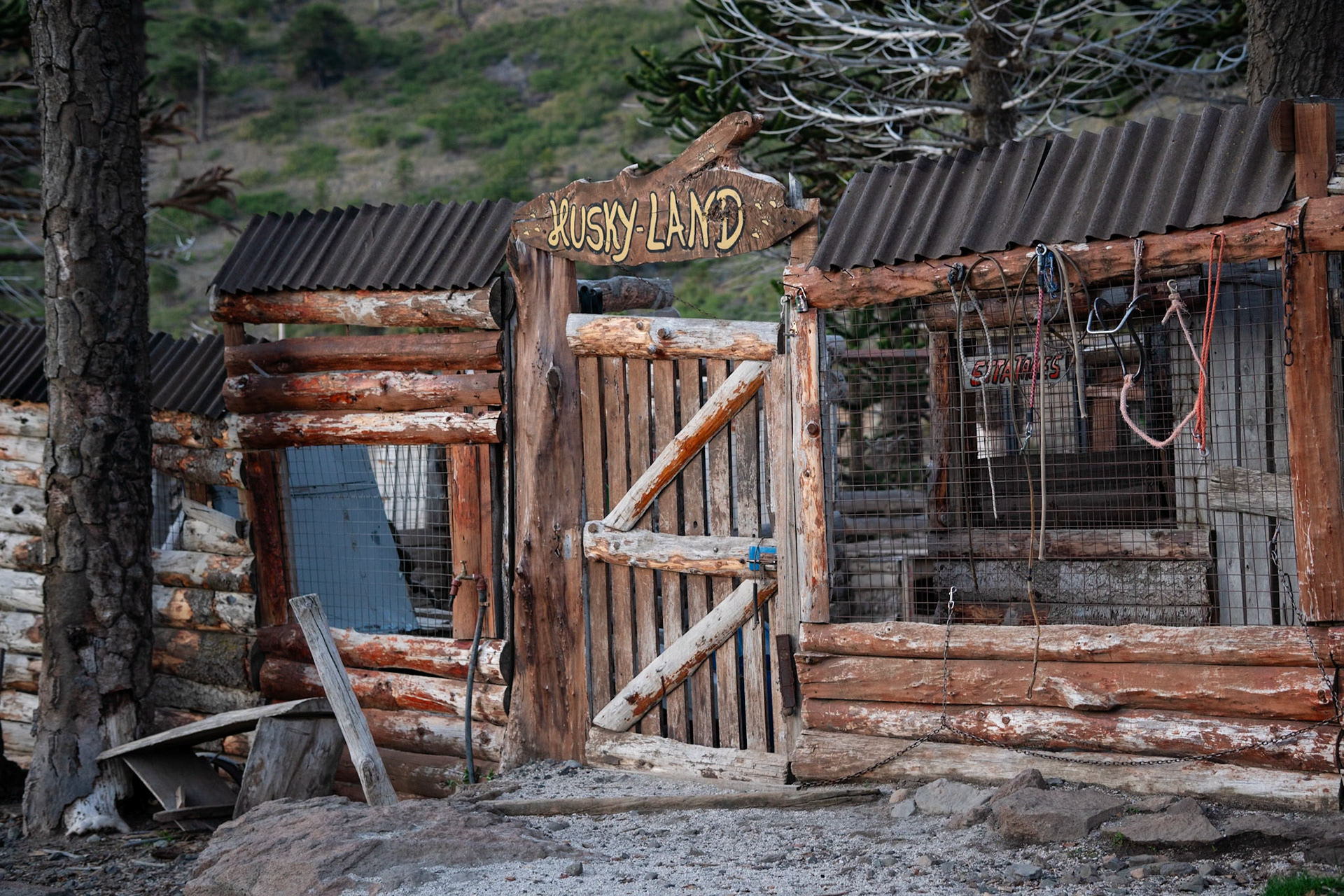
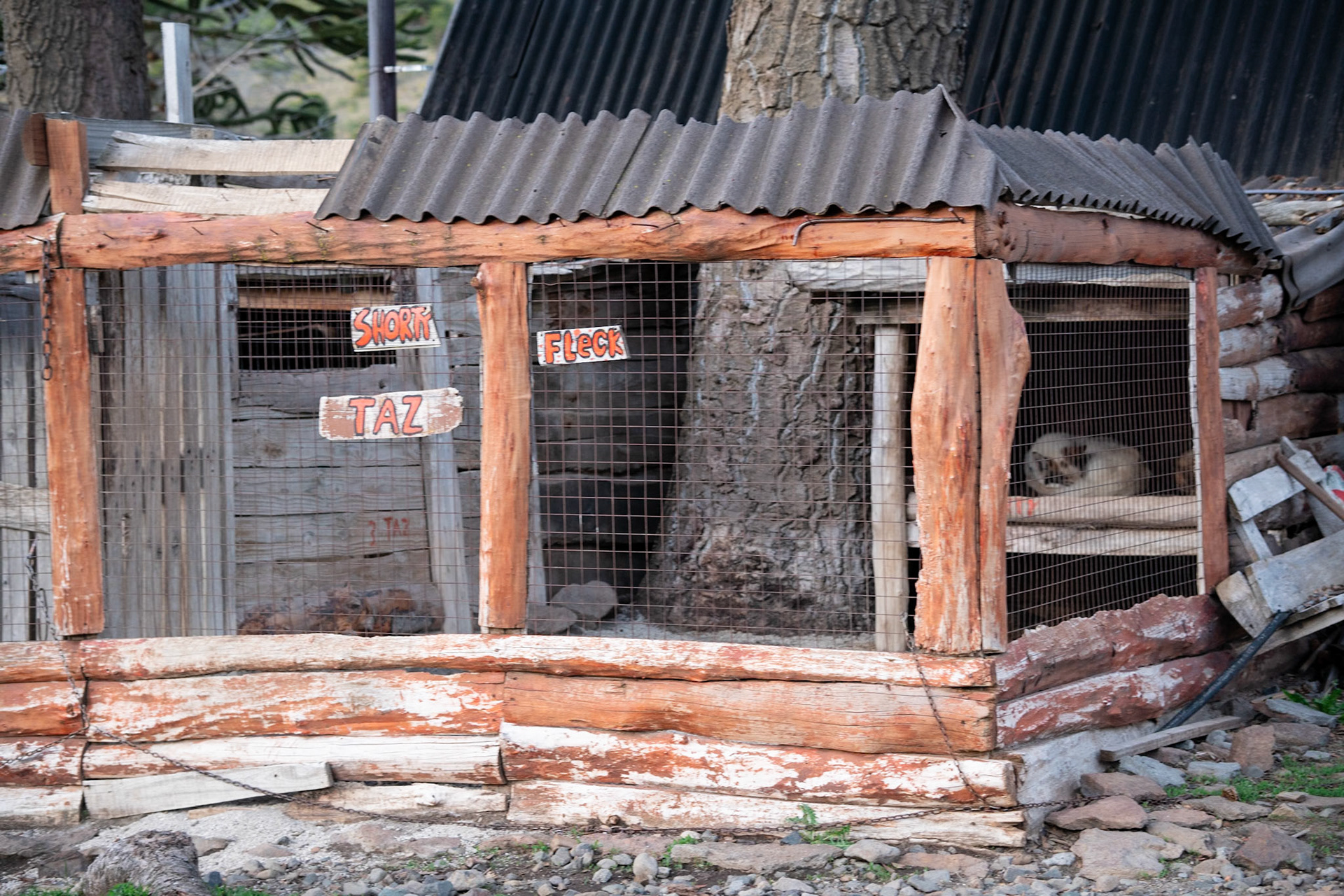
Day 2 - Pino Hachado to Lonquimay
We left at 8.30 after discovering that my bottom bracket was indeed broken and needed to contact a bike shop to start the usual process of ordering in parts. Thankfully it still turned just with the crank/BB interface slipping despite attempts to tighten it. It could easily last a few days but I didn't want it to deteriorate much further. It only took 15 minutes to reach the Argentinian border post and we passed through easily with the usual piece of paper to collect each agency's stamps from a sequence of windows and then pass to the final guard at the end. Overall it probably took 45 minutes. The climb up to Pino Hacahdo was gradual and scenic leaving the Araucaria for a rock and snow desolate volcanic pass. The wind was completely gone today allowing for an easy ride up however suddenly on crossing the saddle it arrived. Luckily it was now a tailwind and we flew down to the Chilean border post. Here we did the usual bizarre sequence of registering bicycles and querying whether certain food items were allowed in whilst the officers did their customary examination panniers from the outside. It all passed quite quickly and by 11.30 we were out the other side enjoying an expensive but warmly welcomed toasted sandwich and coffee at a modified bus cafe. The road descends rapidly into pastoral countryside through wide sweeping curves so we flew down to the small settlement of Liucara. Here there is some basic accommodation, several identical restaurants and 5 almost identical tiendas. Yet another example of insane business distribution, admittedly not quite as comically ludicrous as the Bolivian trend to have streets of only one types of shop e.g. 5 identical shoe shops, followed by 5 identical barber shops, all empty with owners sitting outside waiting for one of them to get the single customer that passed.
The scenery from here to Lonquimay was quite boring rural farmland but at least had some undulation, distant forests and. steaming volcanoes, unlike the recent Argentinian deserts.
We reached Lonquimay by 4 and stocked up at one of the larger supermarkets, admiring all of the imported foods that never made it to Argentina due to their extreme import restrictions and taxation. Our Chilean sim card balance had expired so we found a pub and tried some local craft beers while using their WIFI to get it all up and running again. Accommodation here was expensive so we headed up the hill Cuesta Las Raices to the pleasant Agrocamping Las Raices which was a beautiful spot that I would definitely recommend. It was 5,000 pesos pp with only cold showers, a simple toilet block, no WIFI but some 4g signal. There were numerous individual terraced tentsites dotted amongst the trees well spaced apart over a hilly forested area. There were walking trails to some decent waterfalls through established beech forest on the property too. It was a very peaceful spot to spend the night with no-one else around.
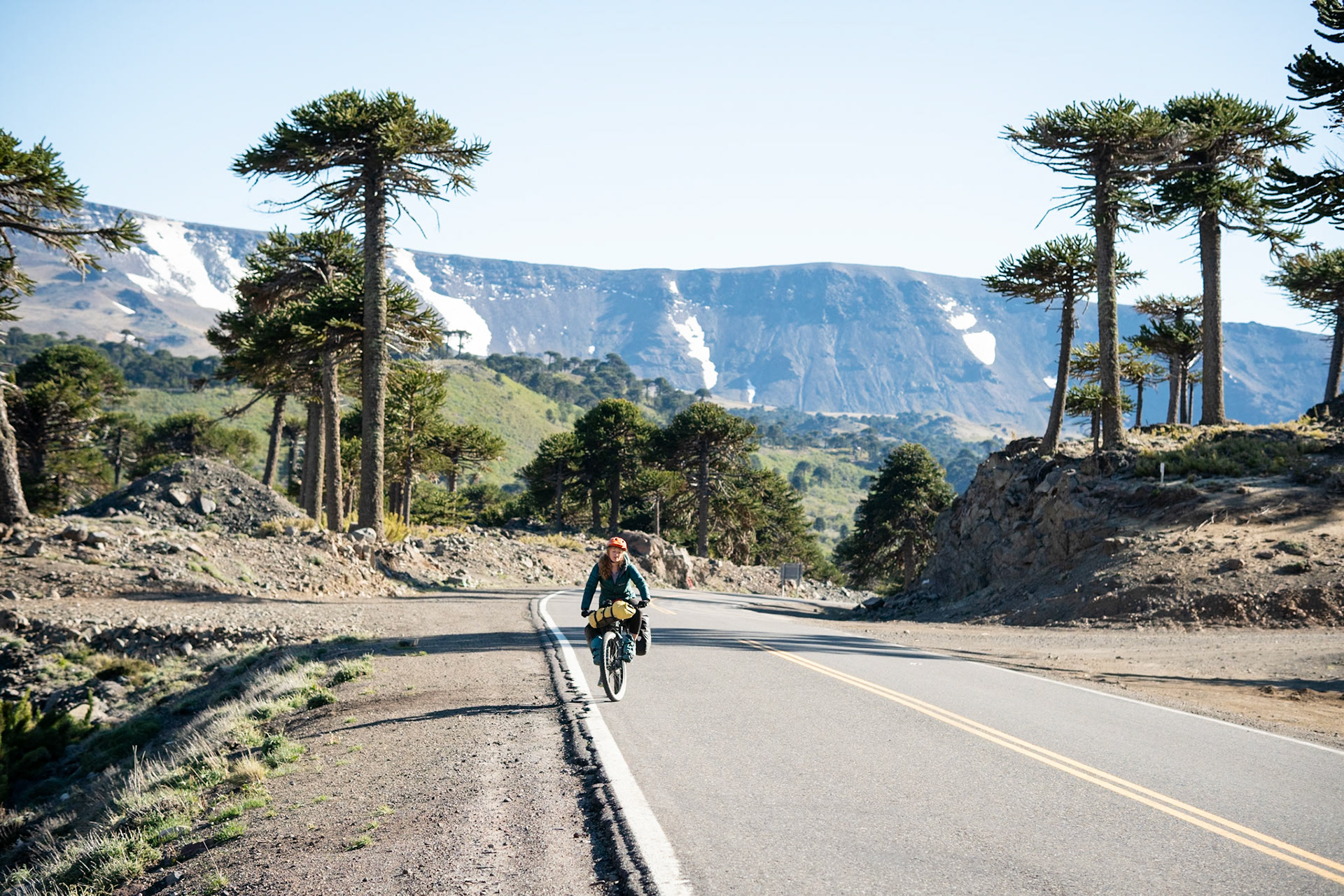
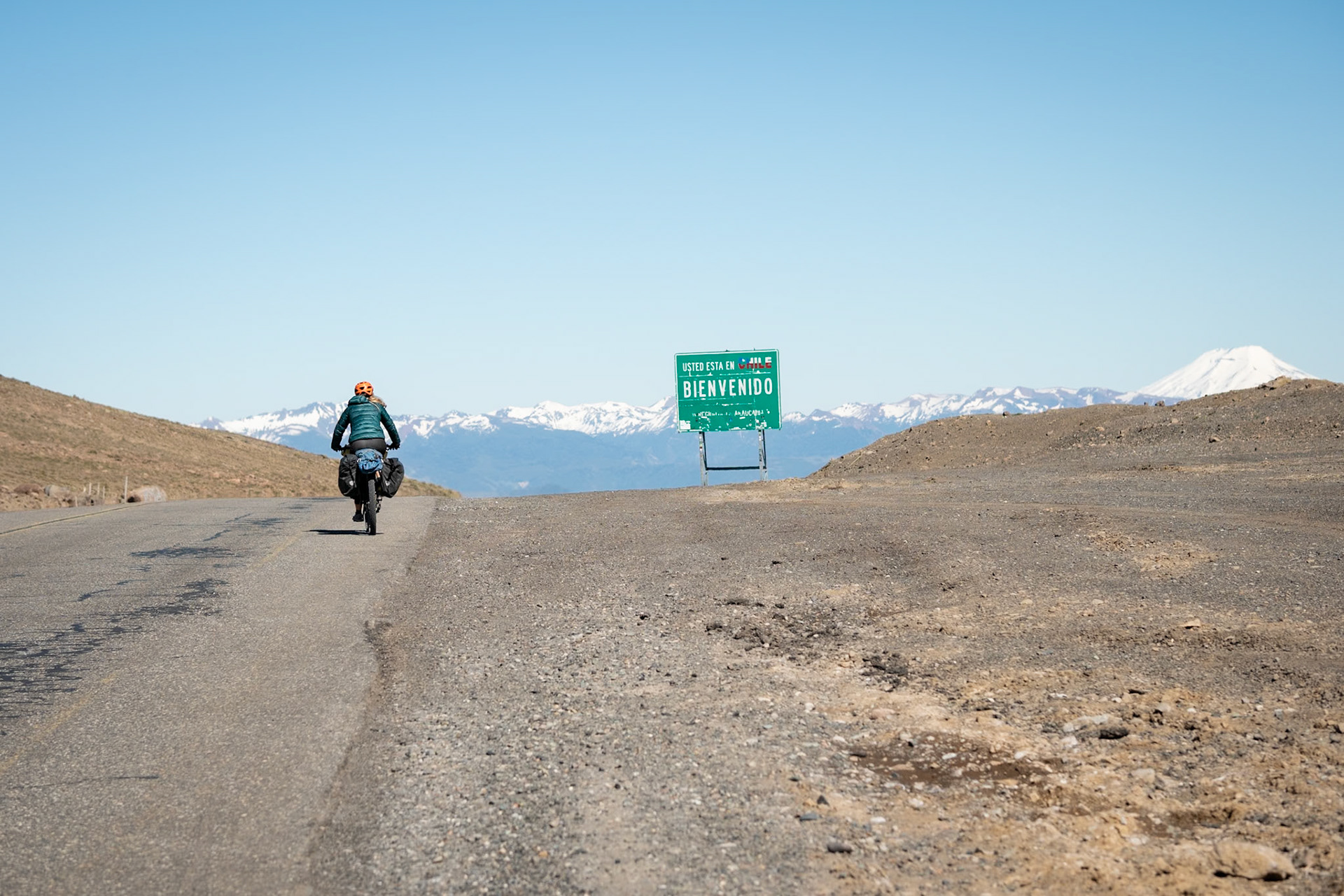
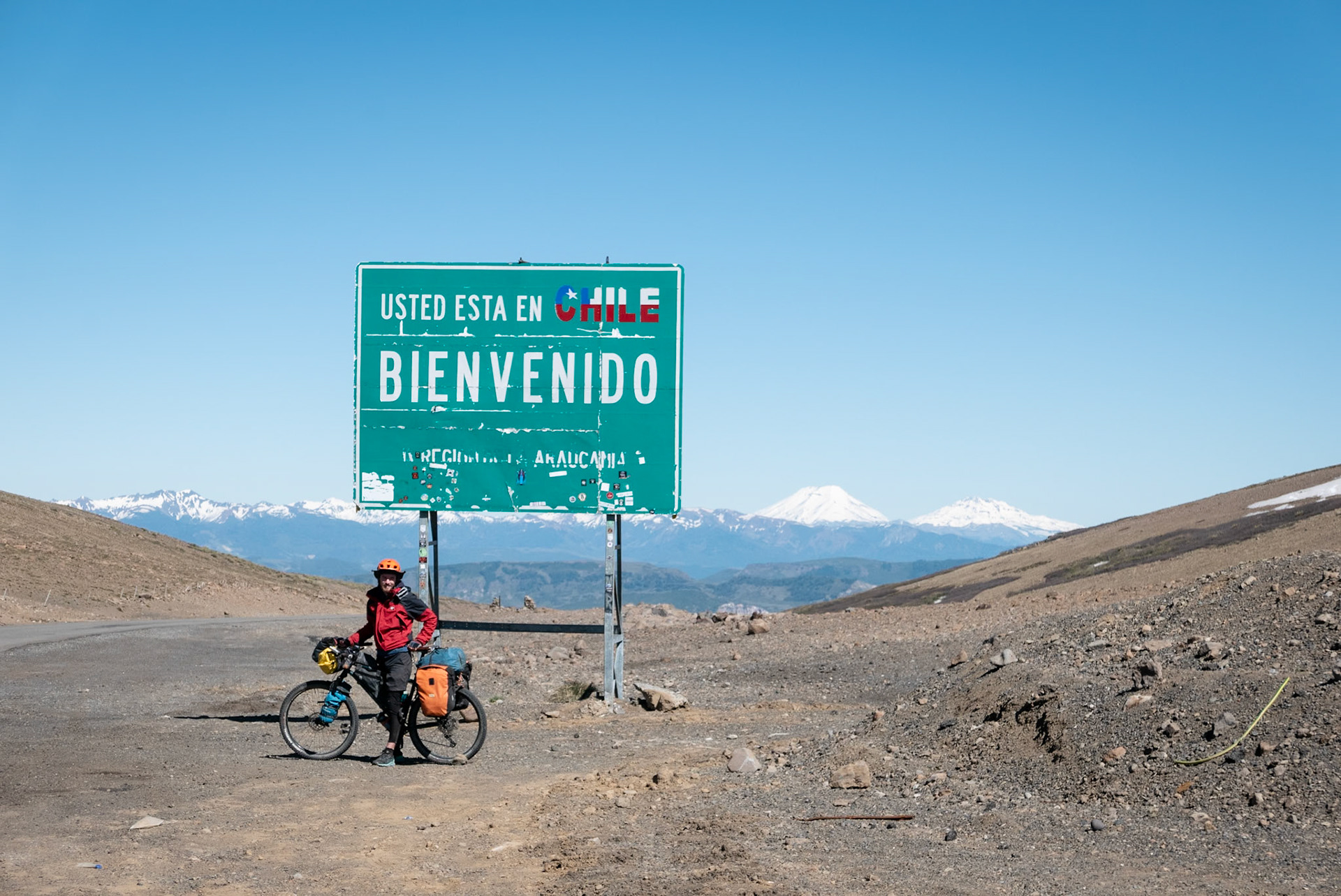
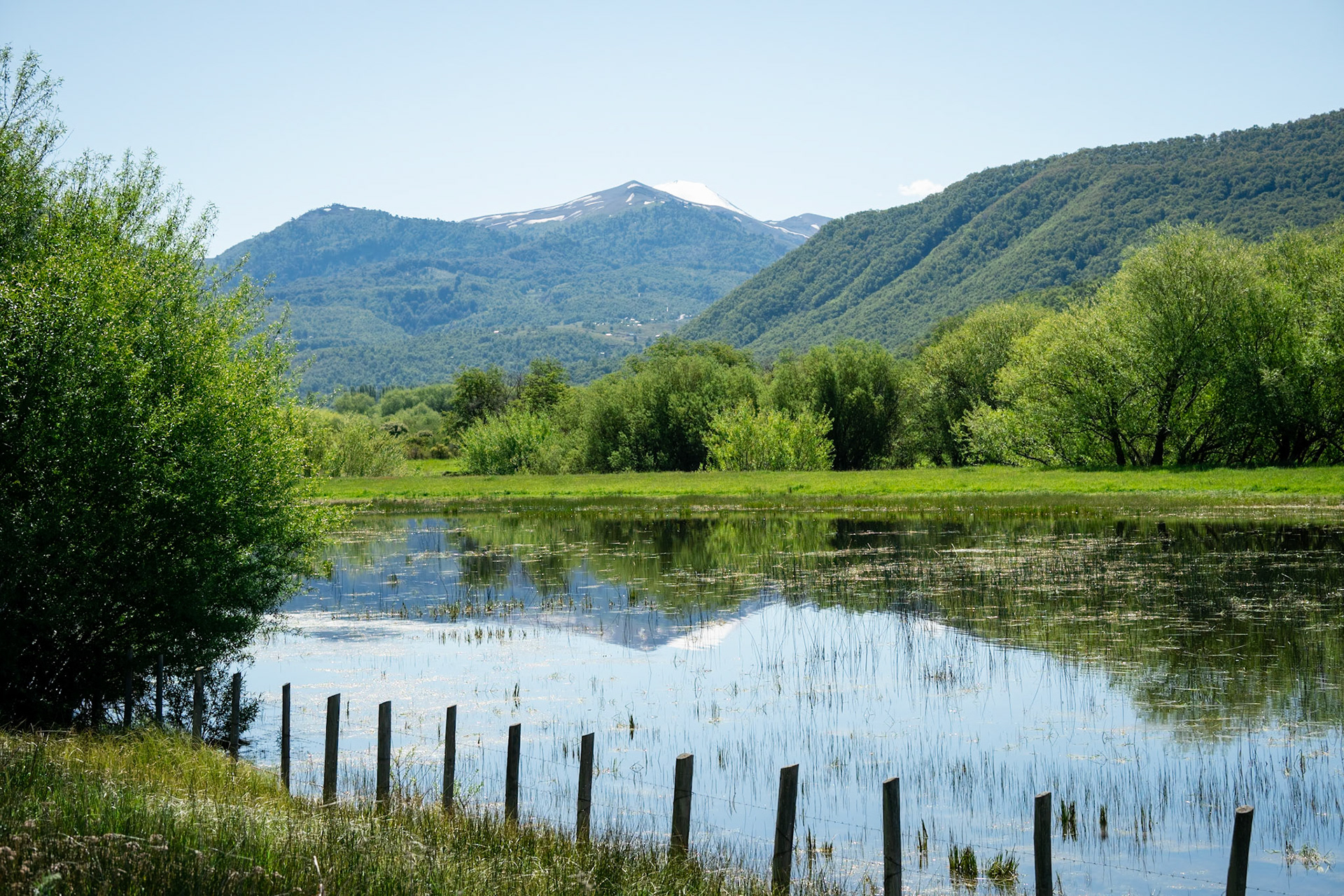
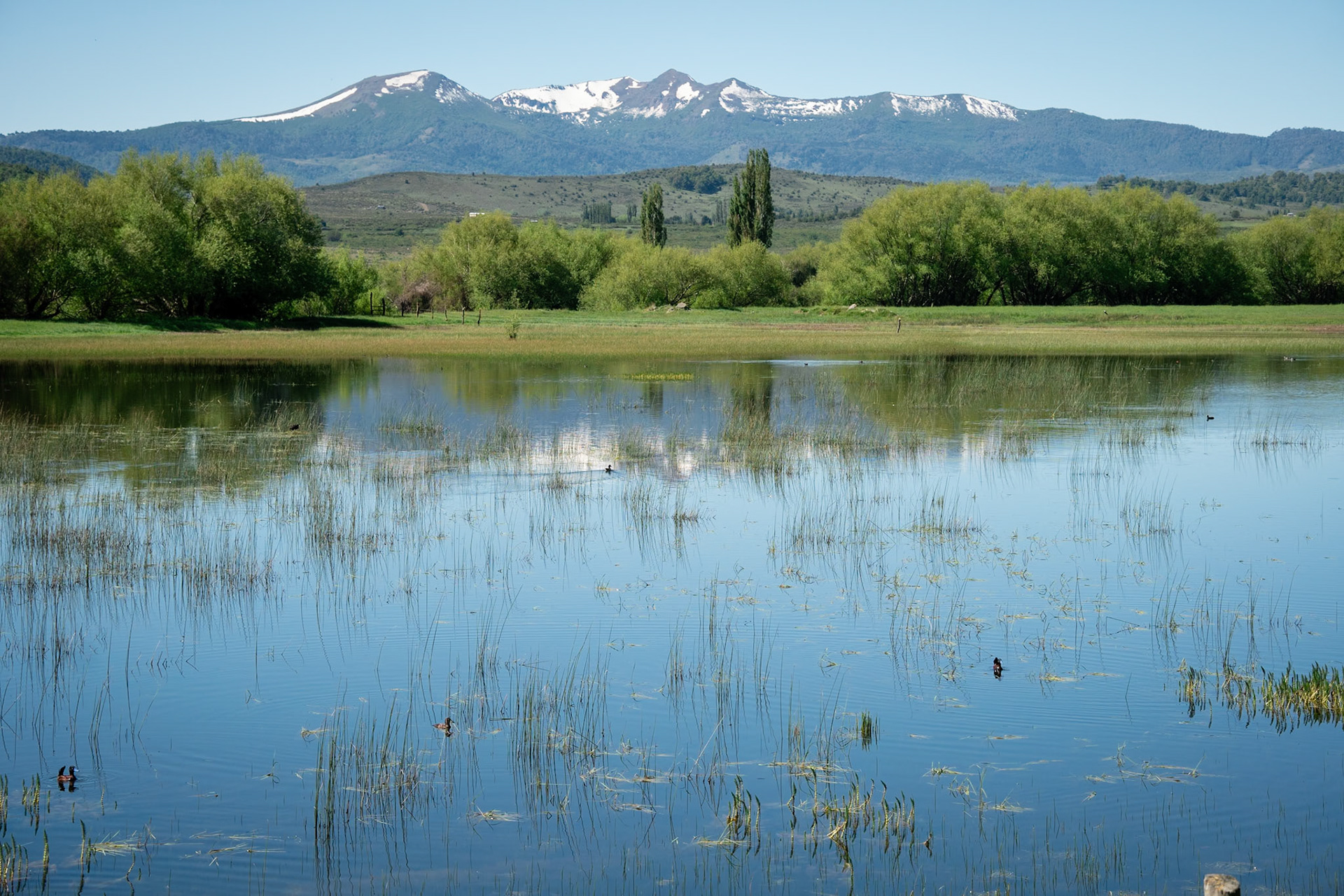
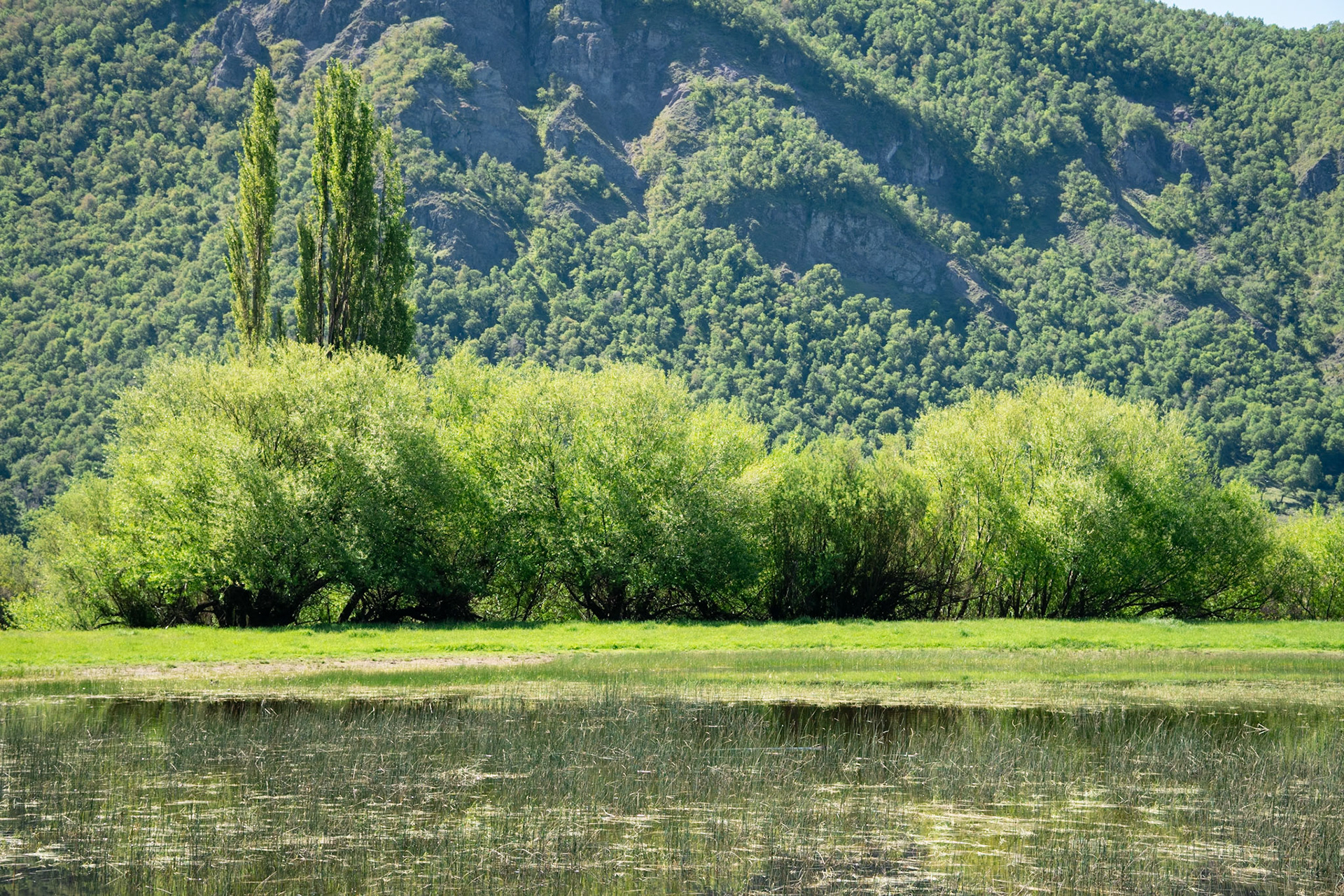
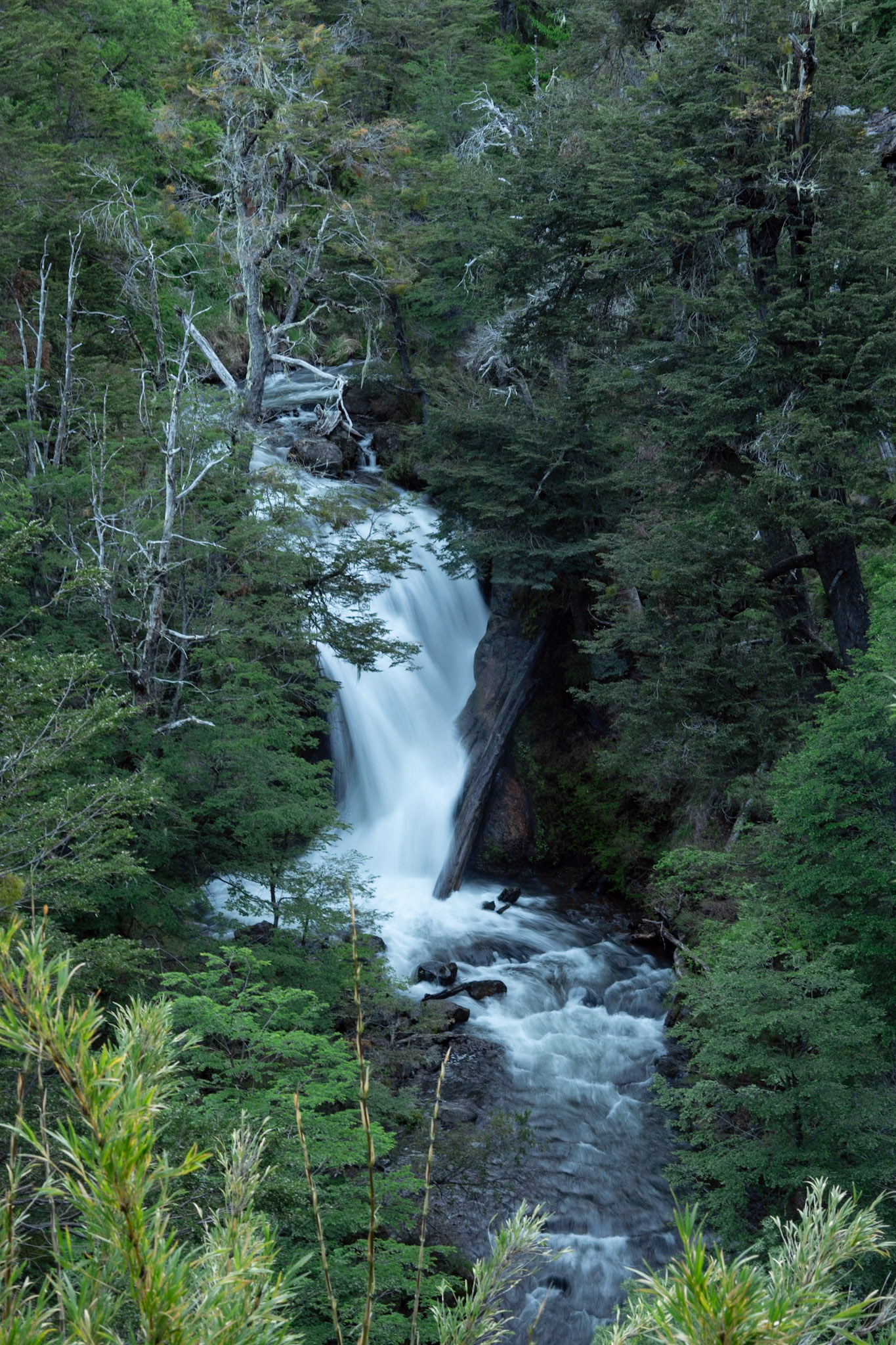
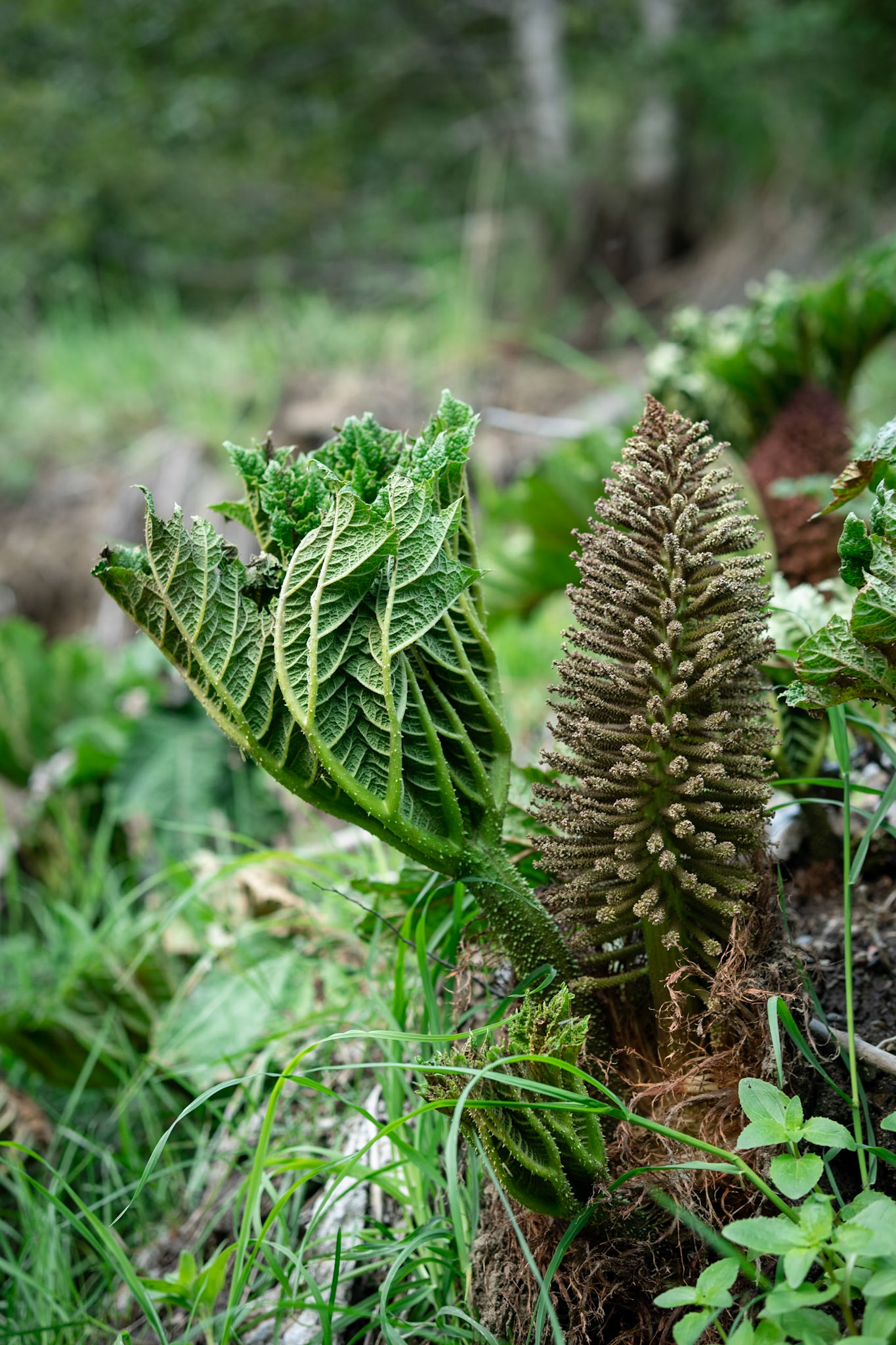

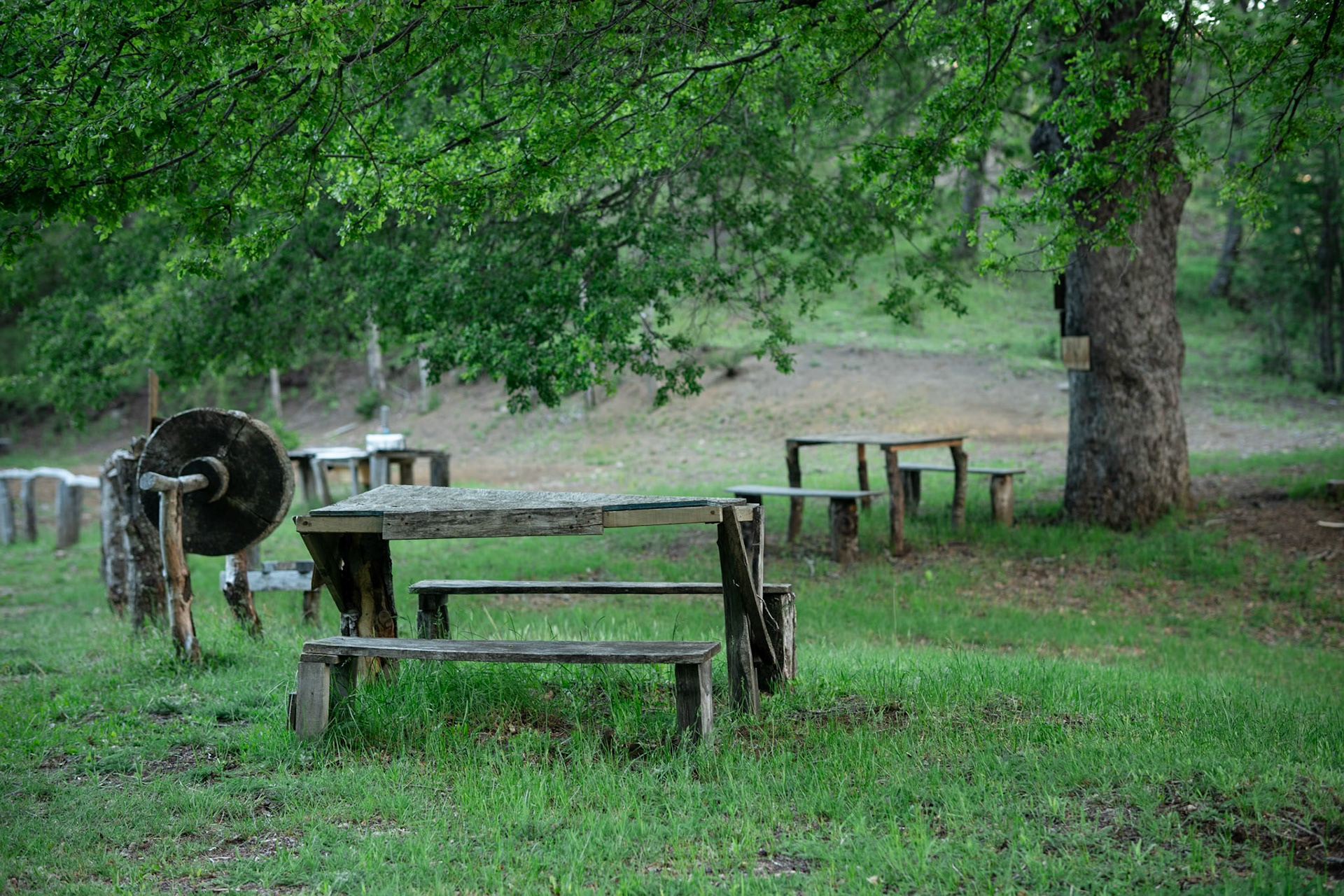
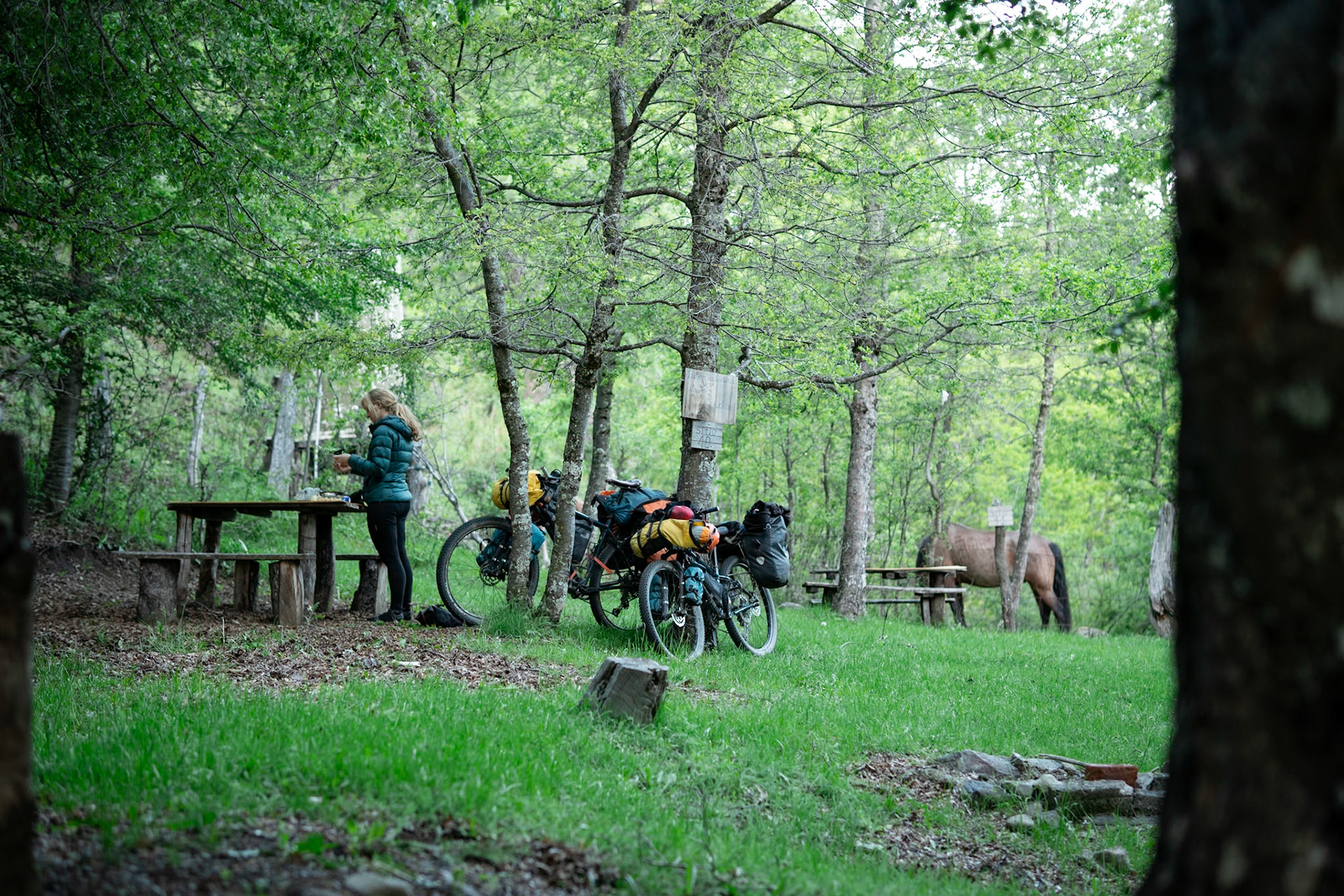
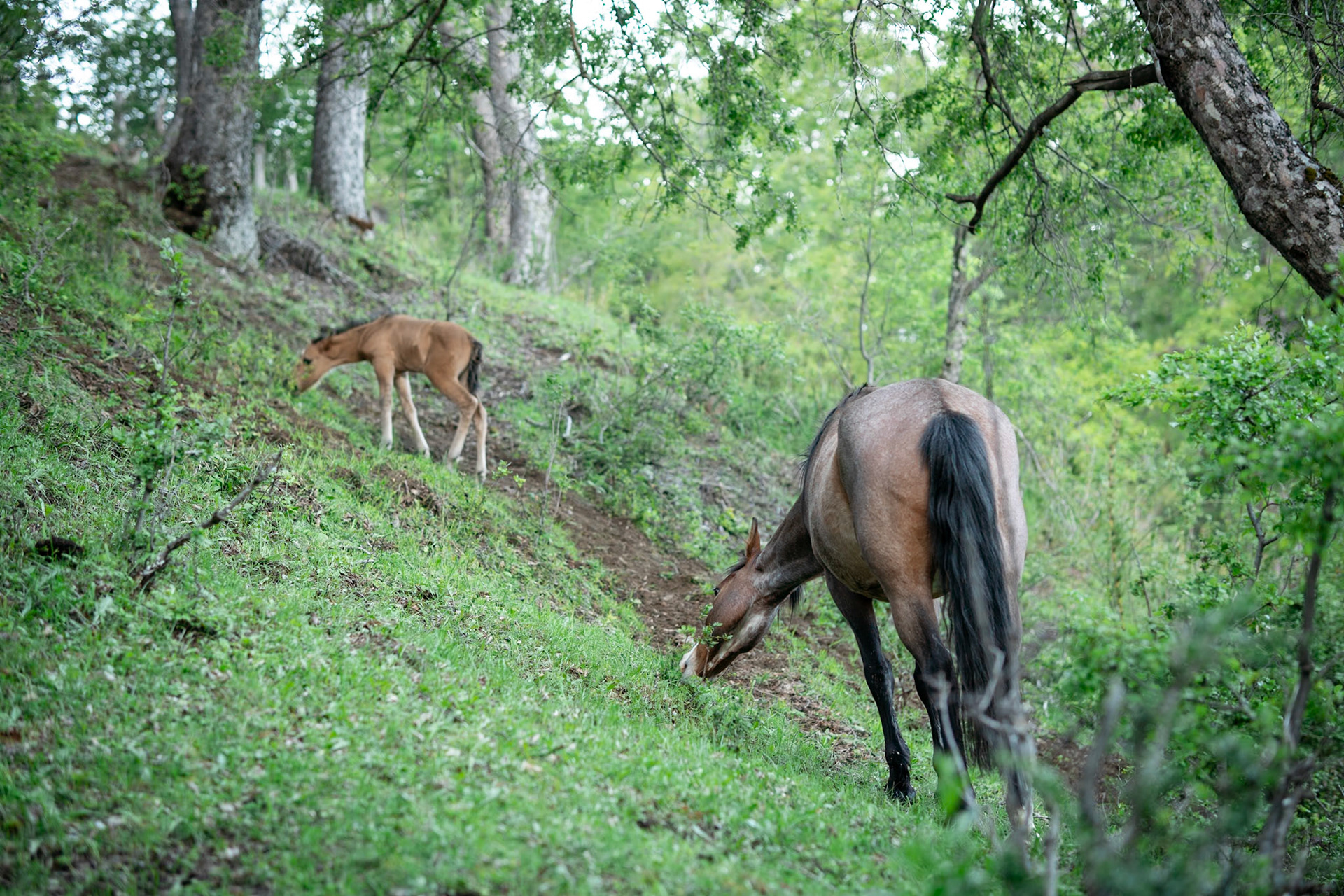
Day 3 Lonquimay to Malachullelo
We made the most of the idyllic peaceful woodland campground and relaxed plans to sleep in a bit and have a slow morning in the sun, exploring route options ahead. This was particularly necessary given a number of surprise park closures on the CONAF website which scuppered some plans.
Both Nalcas and China Muerte parks were listed as closed, with no context or timeframe, meaning the 'Monkey Puzzle Route' was now unrideable. Recent escalating tensions between tourists freedom camping and local Mapuche residents had also been on the back of our mind and we had heard this may have been associated with the closures.
Eventually we headed up the hill which started off very steep, really stretching us and needed a push or two until the upper sections where it settled into a more gentle gradient winding amongst araucarias and beech. We passed numerous dilapidated rough sawn timber shacks along the roadside with signs advertising tortillas for sale but no-one for miles around. Ironically, many battered old 'Abierto' signs were outside a few distinctly cerrado abandoned tiendas.
The road was a smooth gravel and dirt which was nice to be back on after so much asphalt recently. We passed a skifield that looked partly abandoned with shells of buildings at the base, then again maybe it miraculously comes alive in the winter like so many of the off season ghost towns around here.
The descent down through the national park was spectacular. We were unsure if it would be open being a Monday (website said it closed on Mondays) but we saw no signs or even indication of entering the park and we saw numerous cars throughout the morning happily travelling through so who knows what the website referred to, especially given this was a through-road.
The mixed beech and araucaria drops into conifers with avenues of stunning log cabins, ski chalets and roadside lupins making the place feel quintessentially of the European Alps.
Unfortunately the nice bakery at the base of the road was shut but it was only an easy 3km to Malachullelo. This has a very well stocked but pricey (Chilean prices) supermarket on the main road at the entrance to the town as well as numerous minimercados and a reasonable bakery.
We continued to the camp at Dos Volcanes just down the road. It was a beautiful campground and hostel with numerous tent sites amongst low beech trees with individual cooking shelters, power, excellent hot showers and modern clean toilets. The host was lovely and very knowledgeable of all the cycling routes and national parks in this region. It was 8000 peso pp to camp here, more than we would like but far cheaper than alternatives we've encountered. The views up to Sierra Nevada and Lonquimay also made for a lovely backdrop in the evening light.
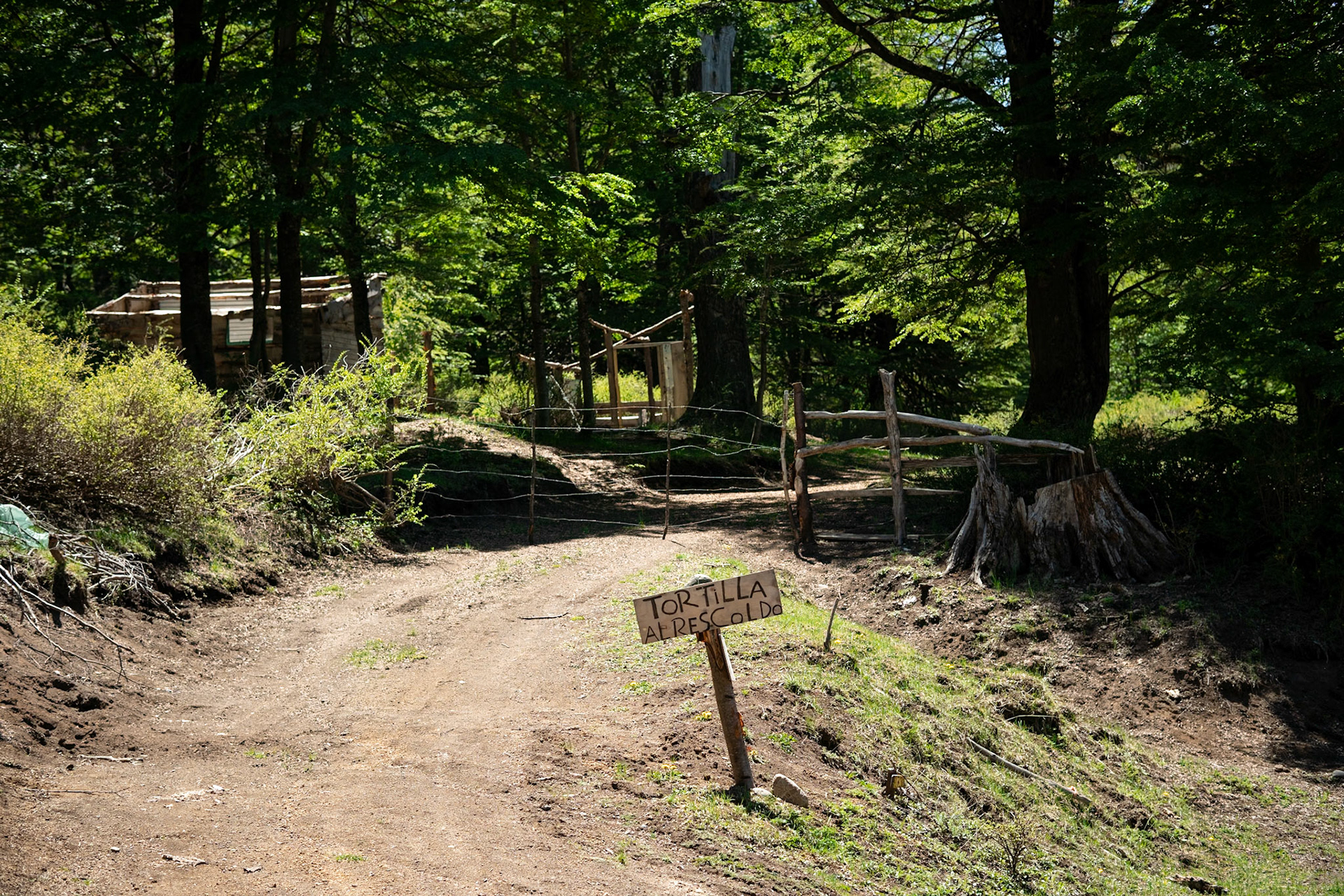
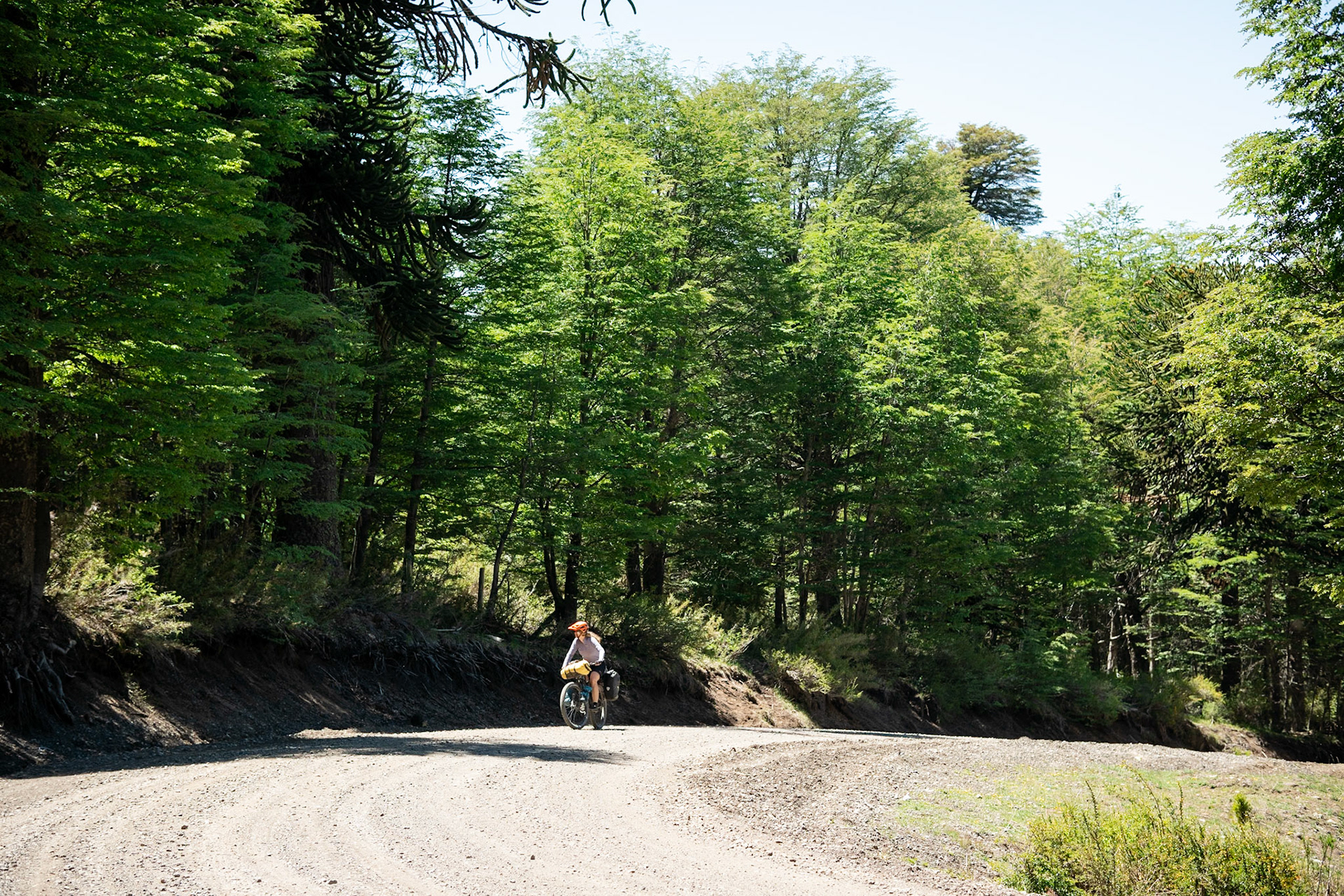
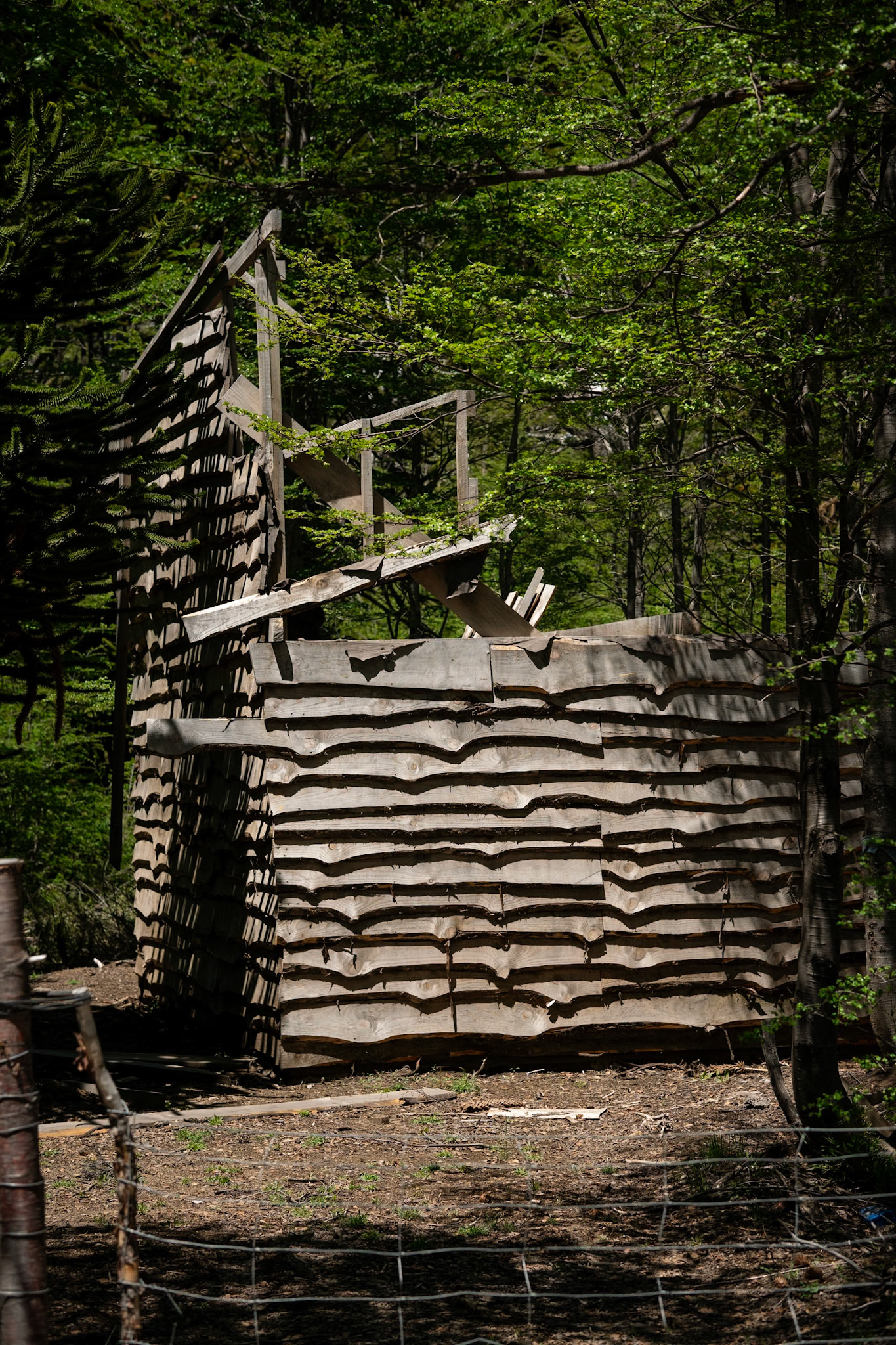
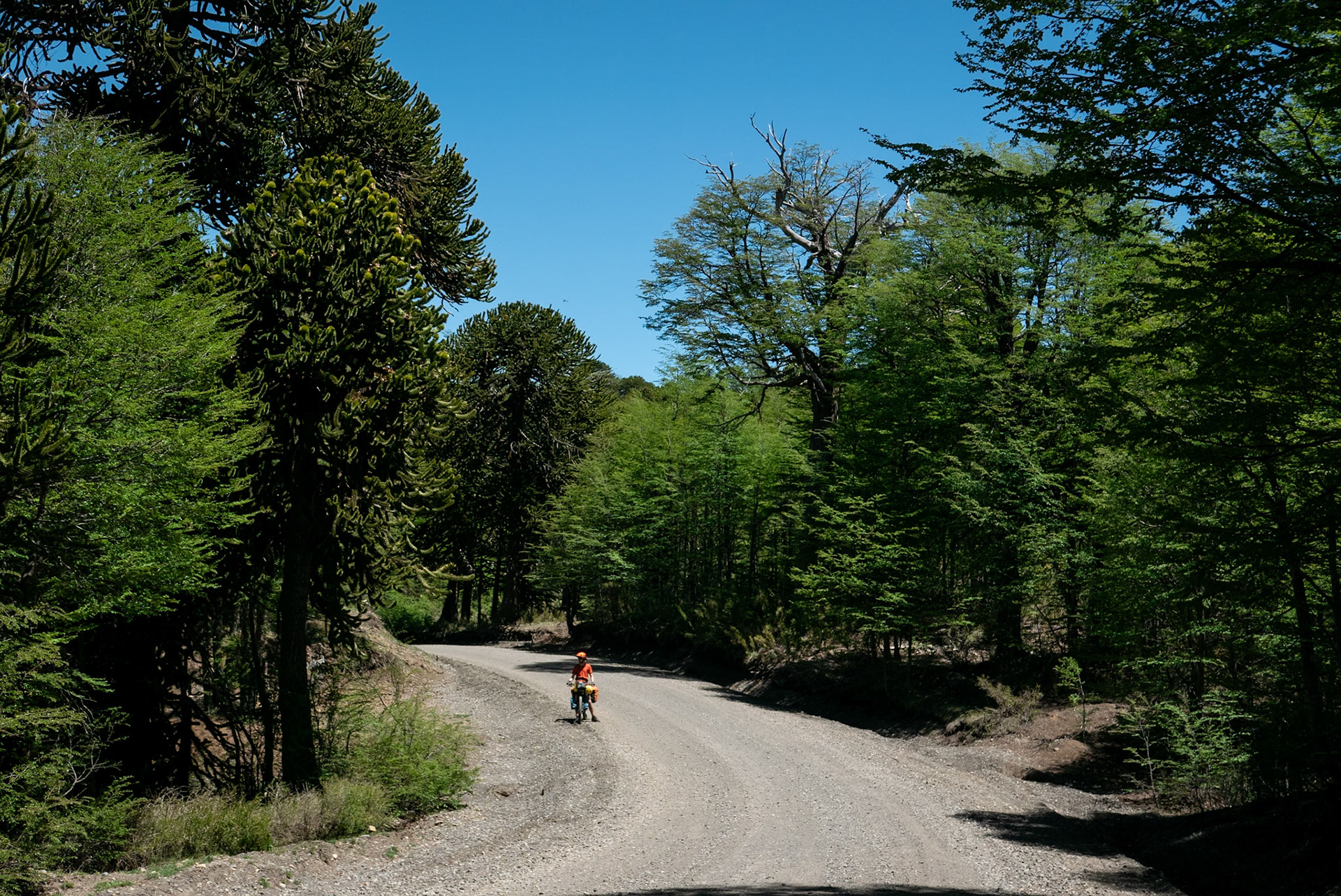
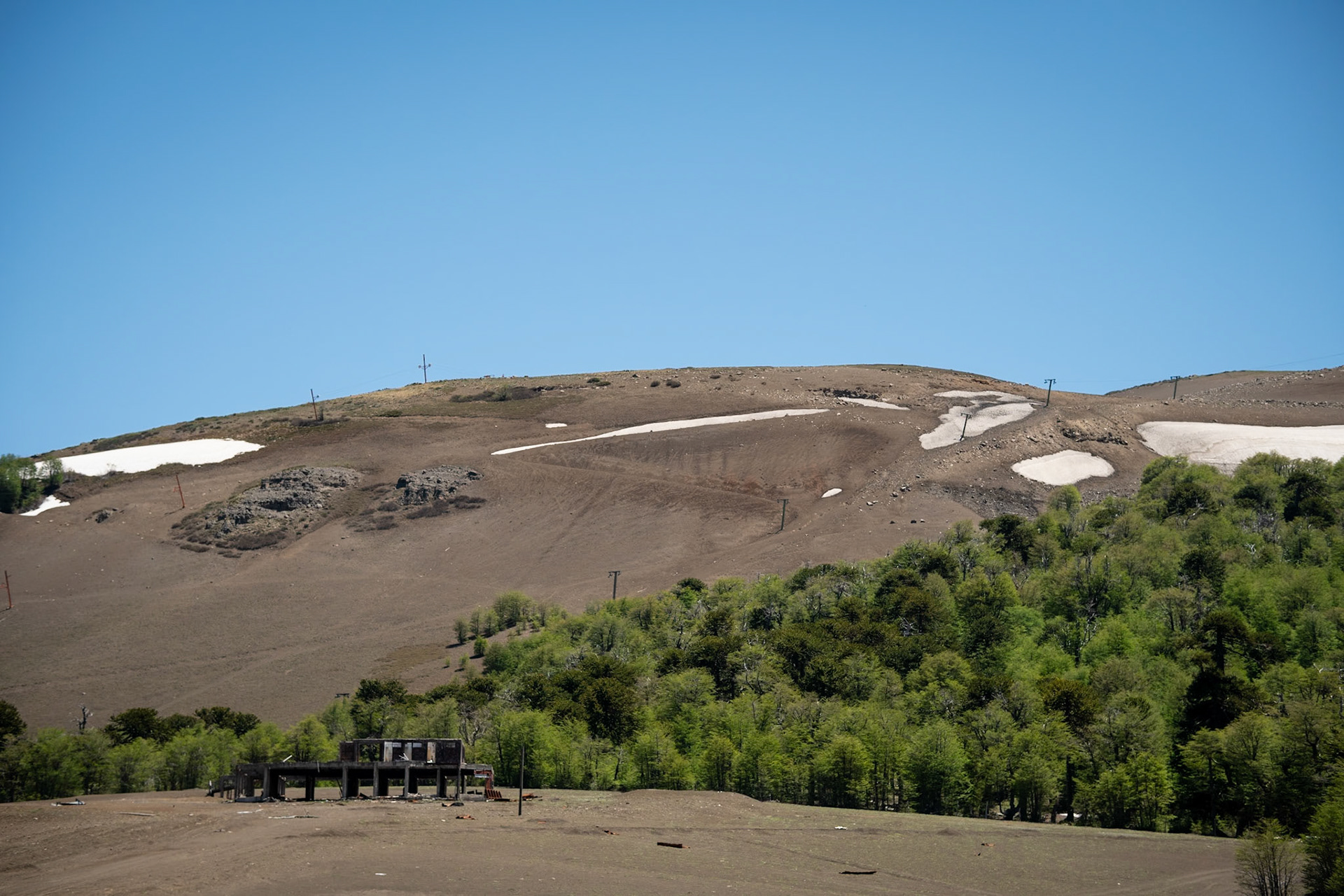
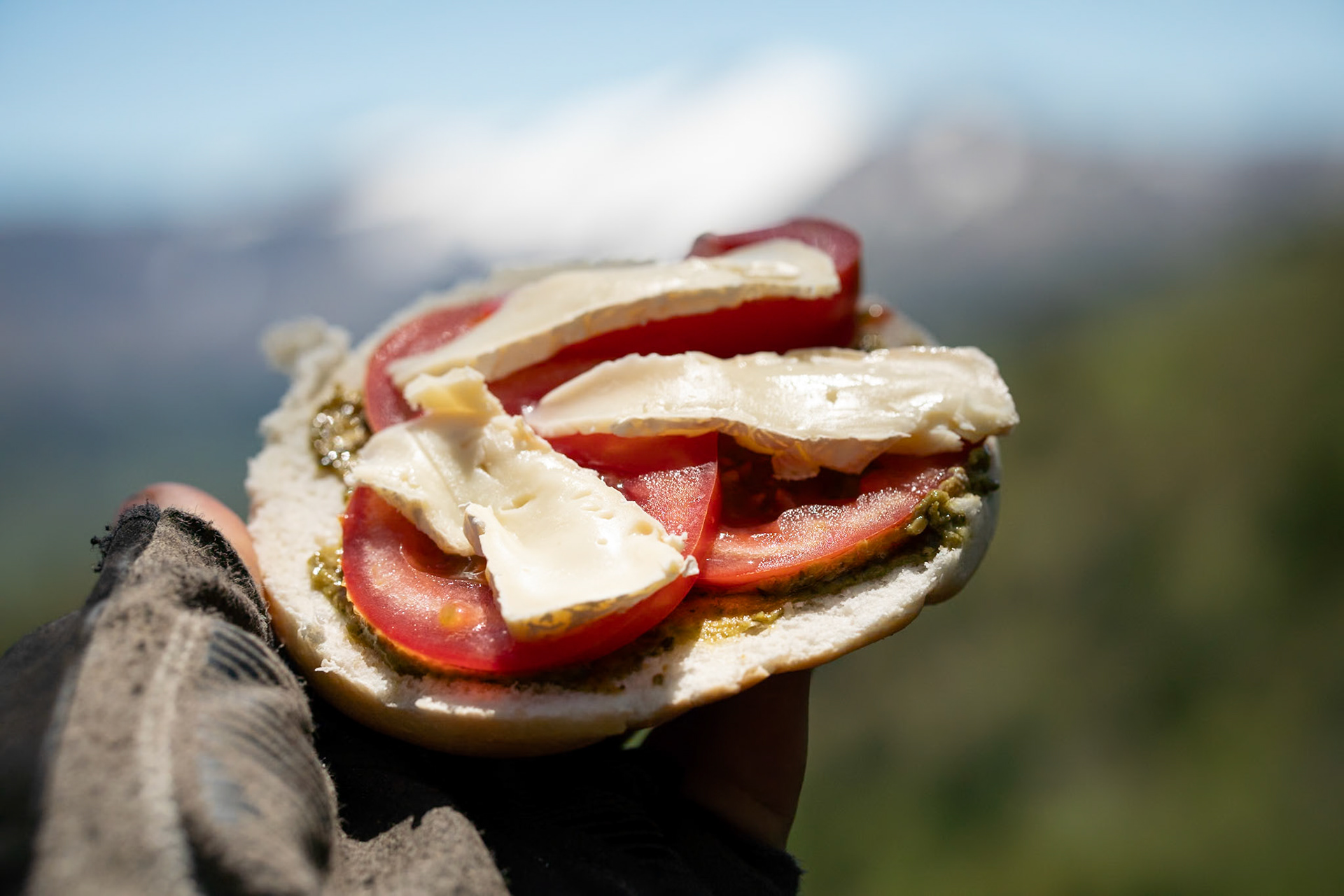

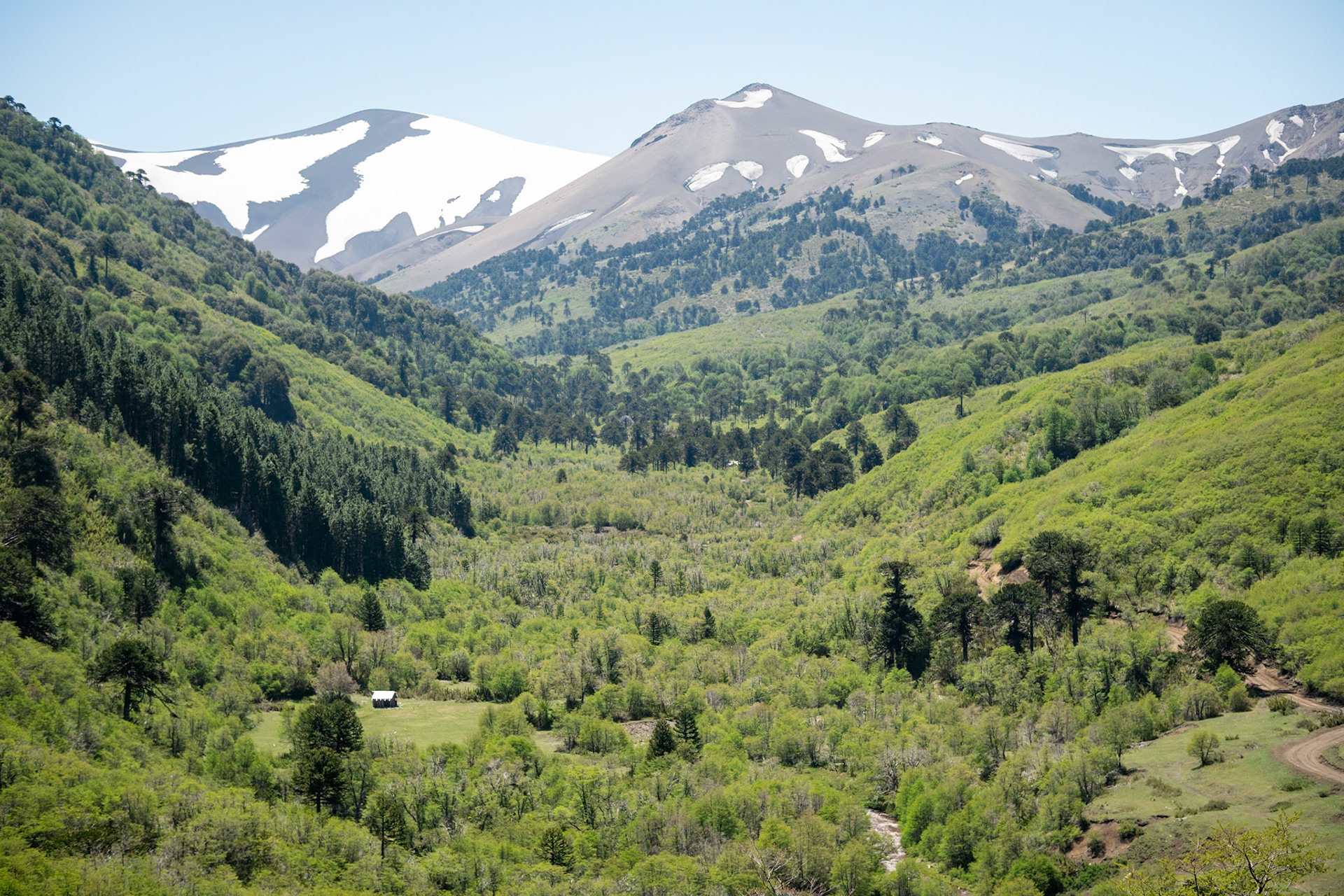
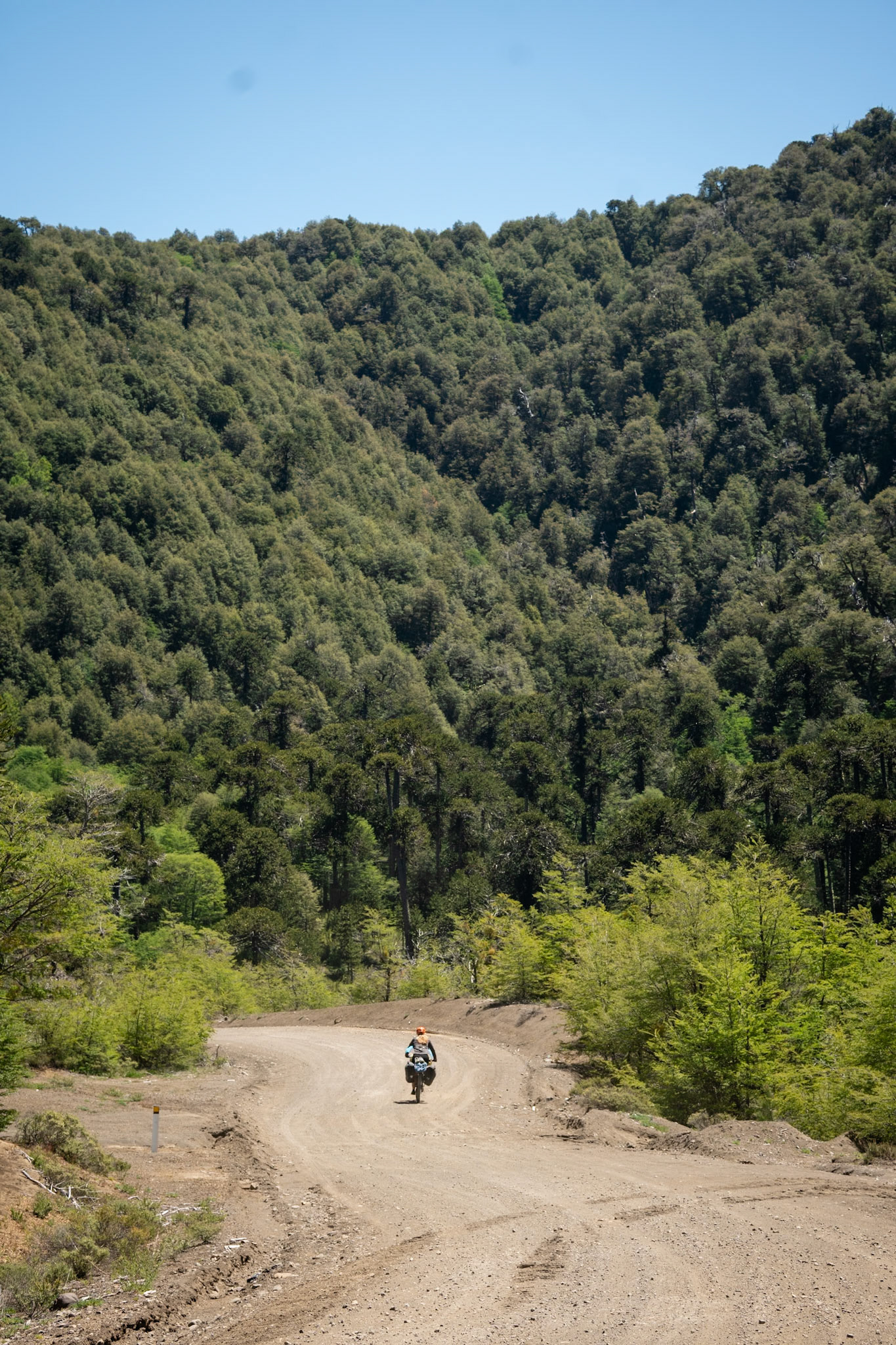
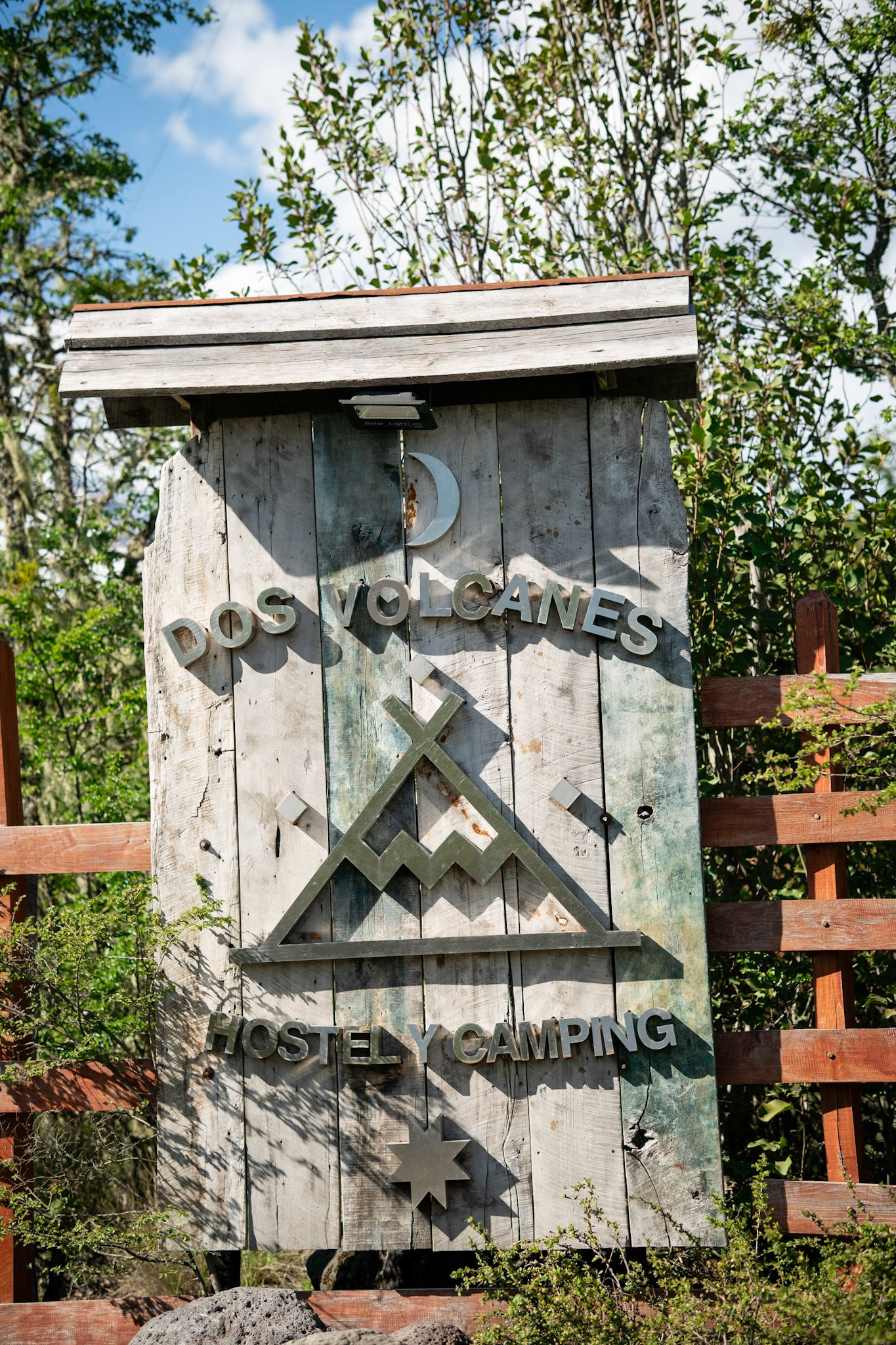
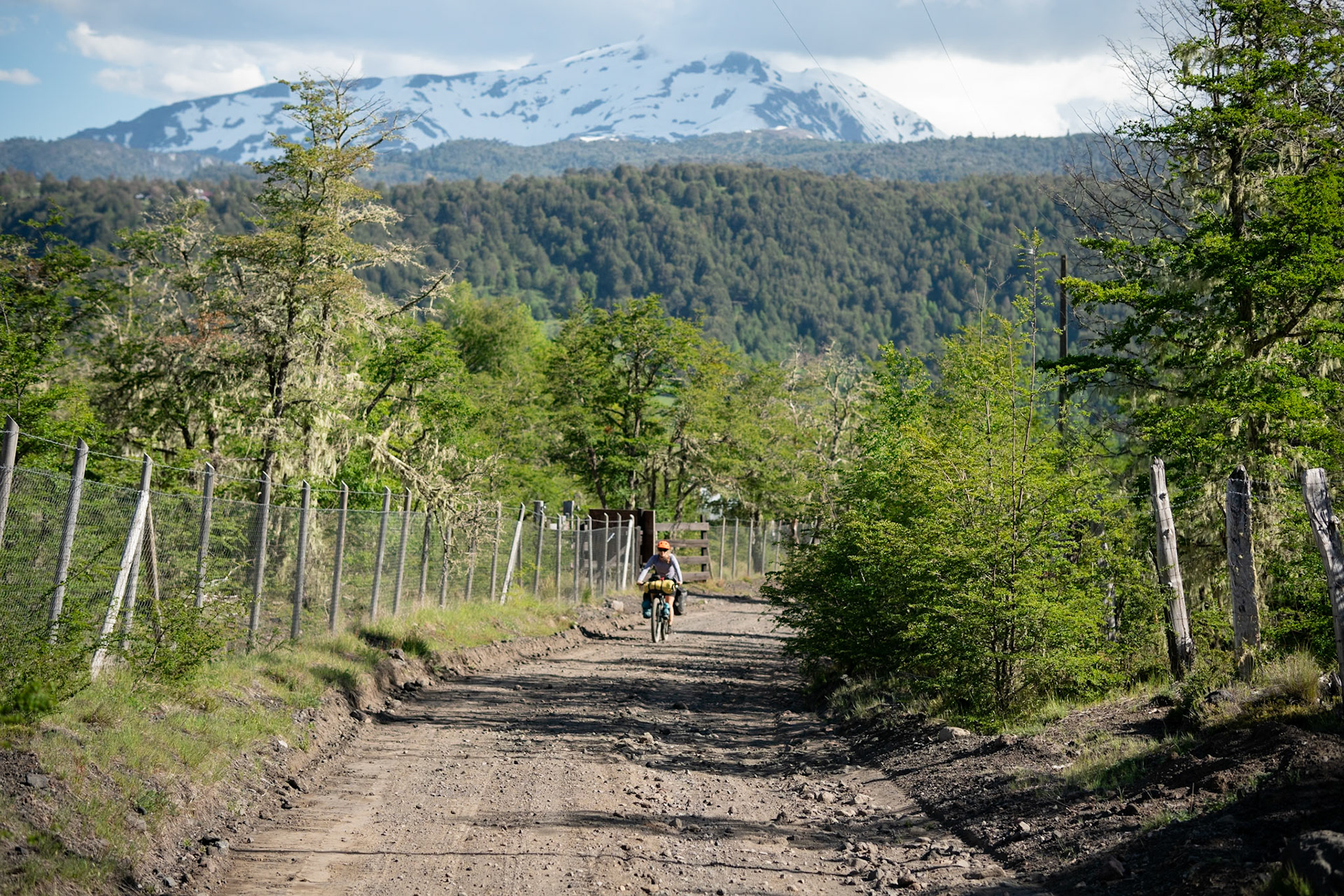
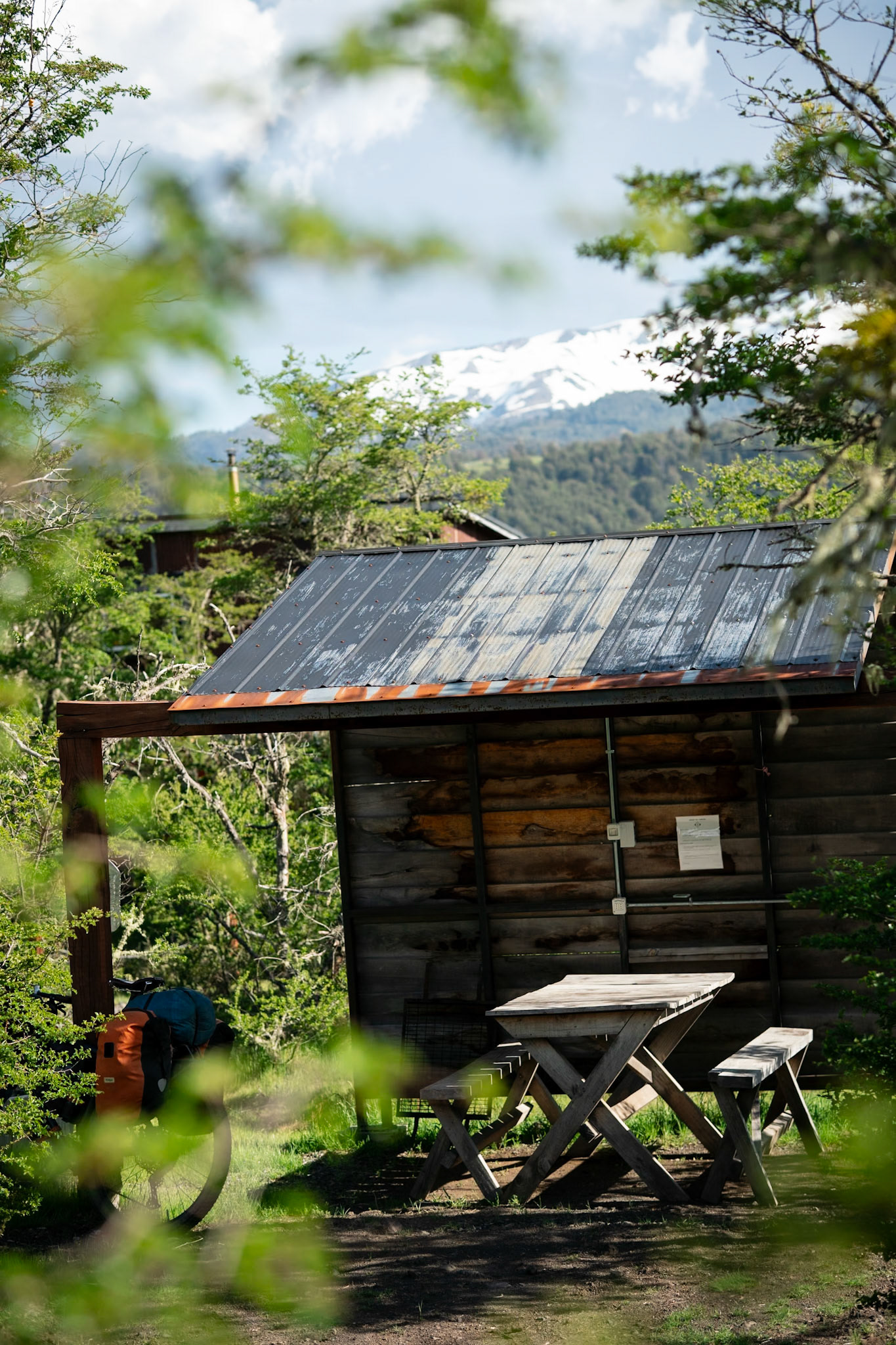

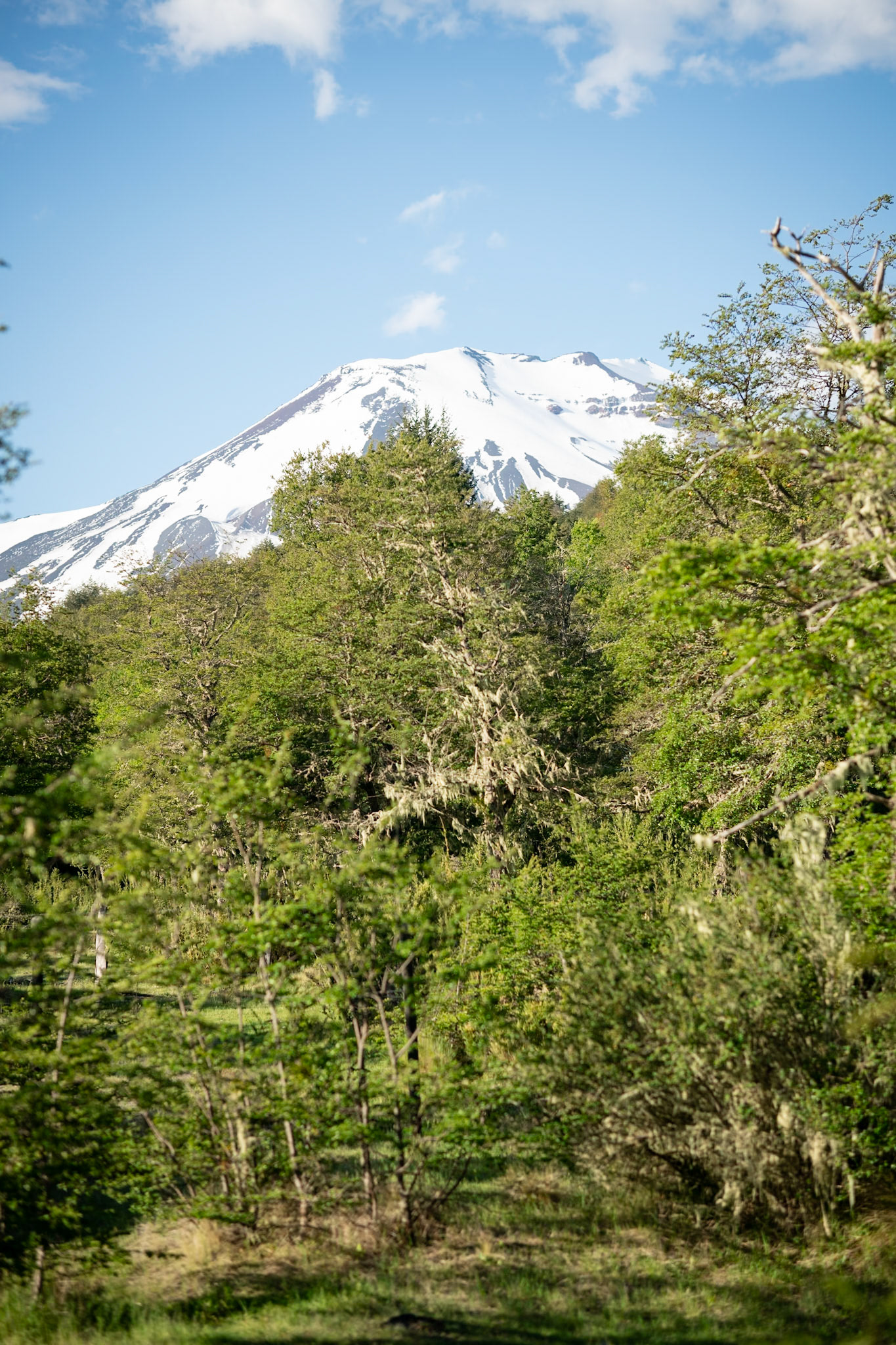


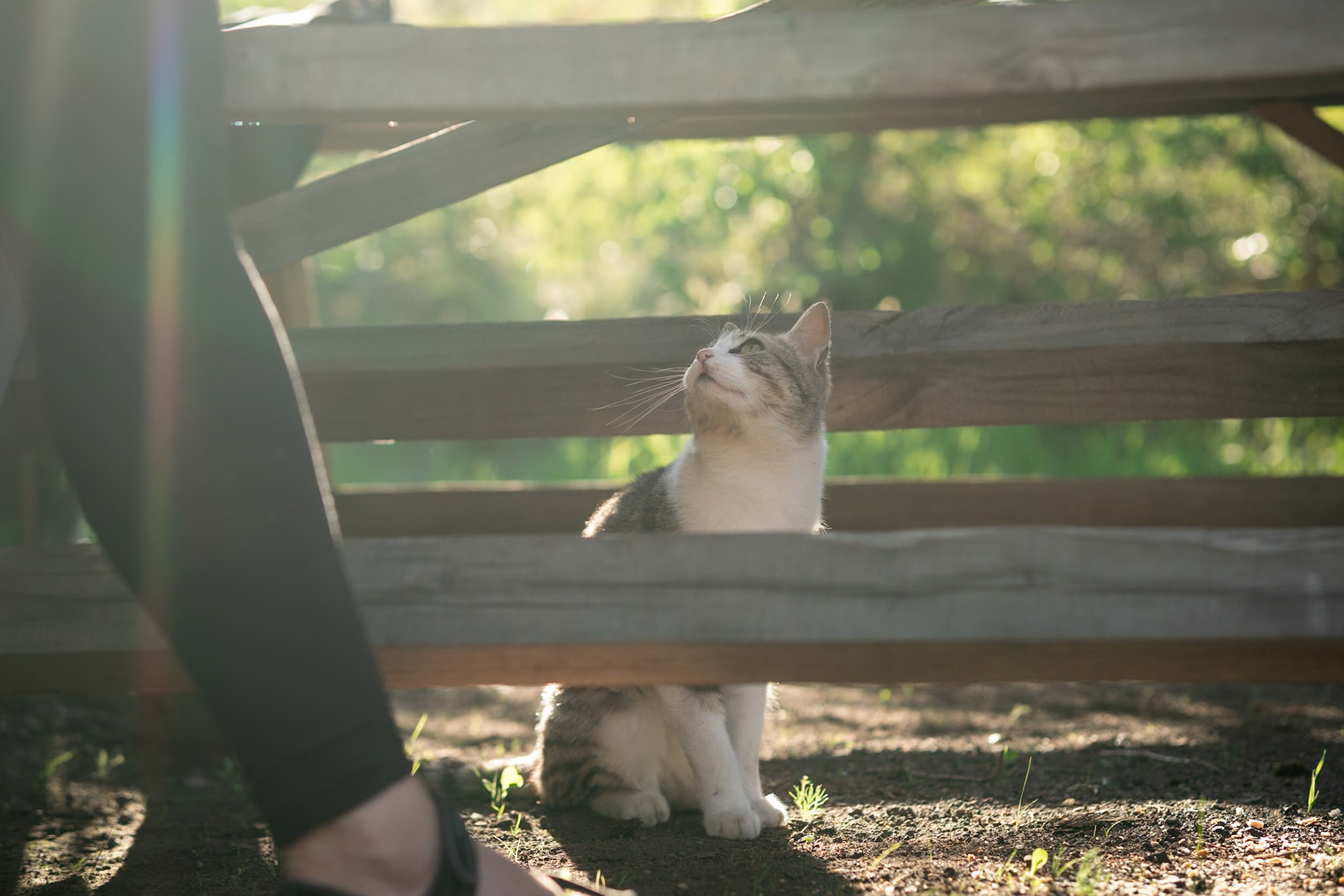
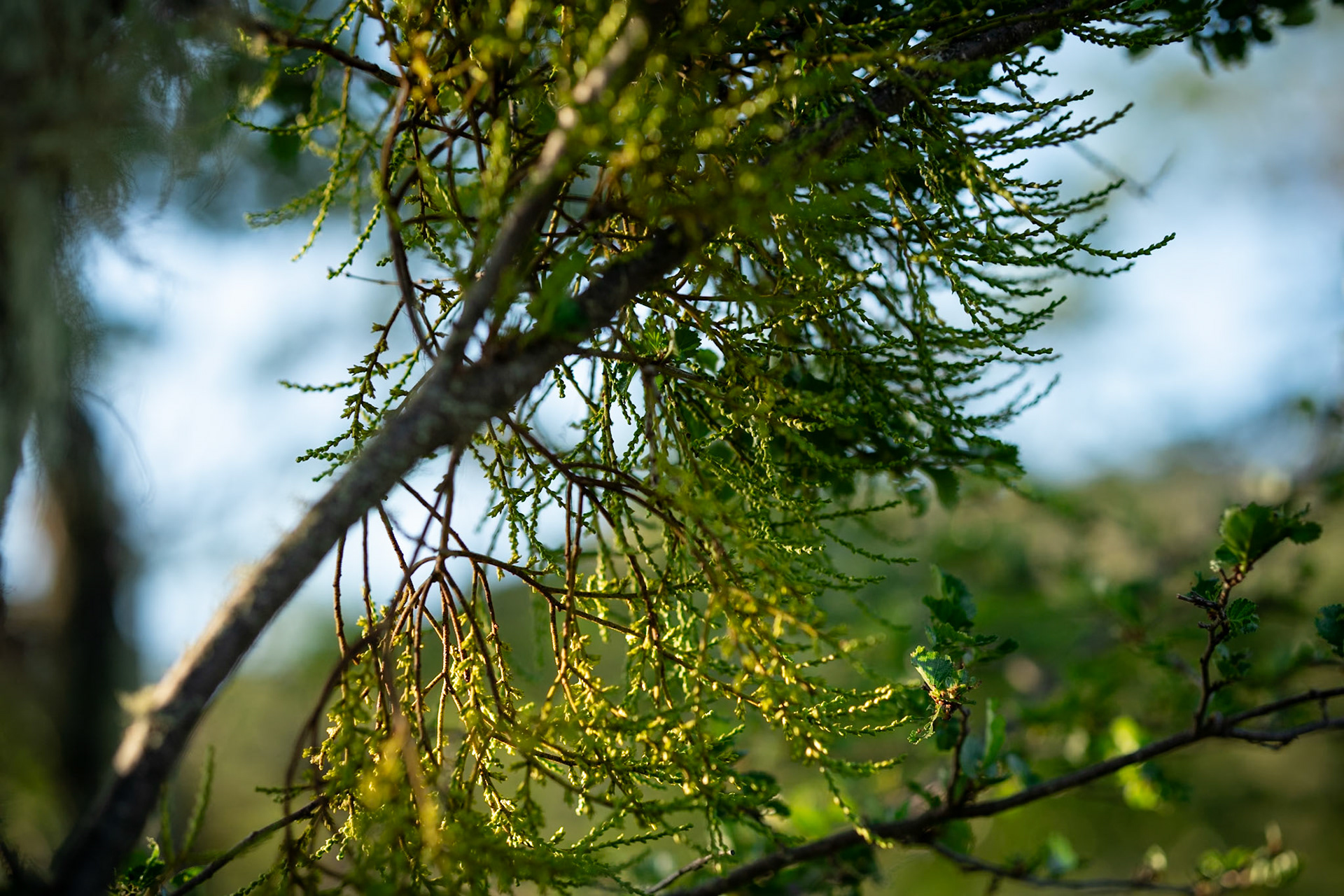
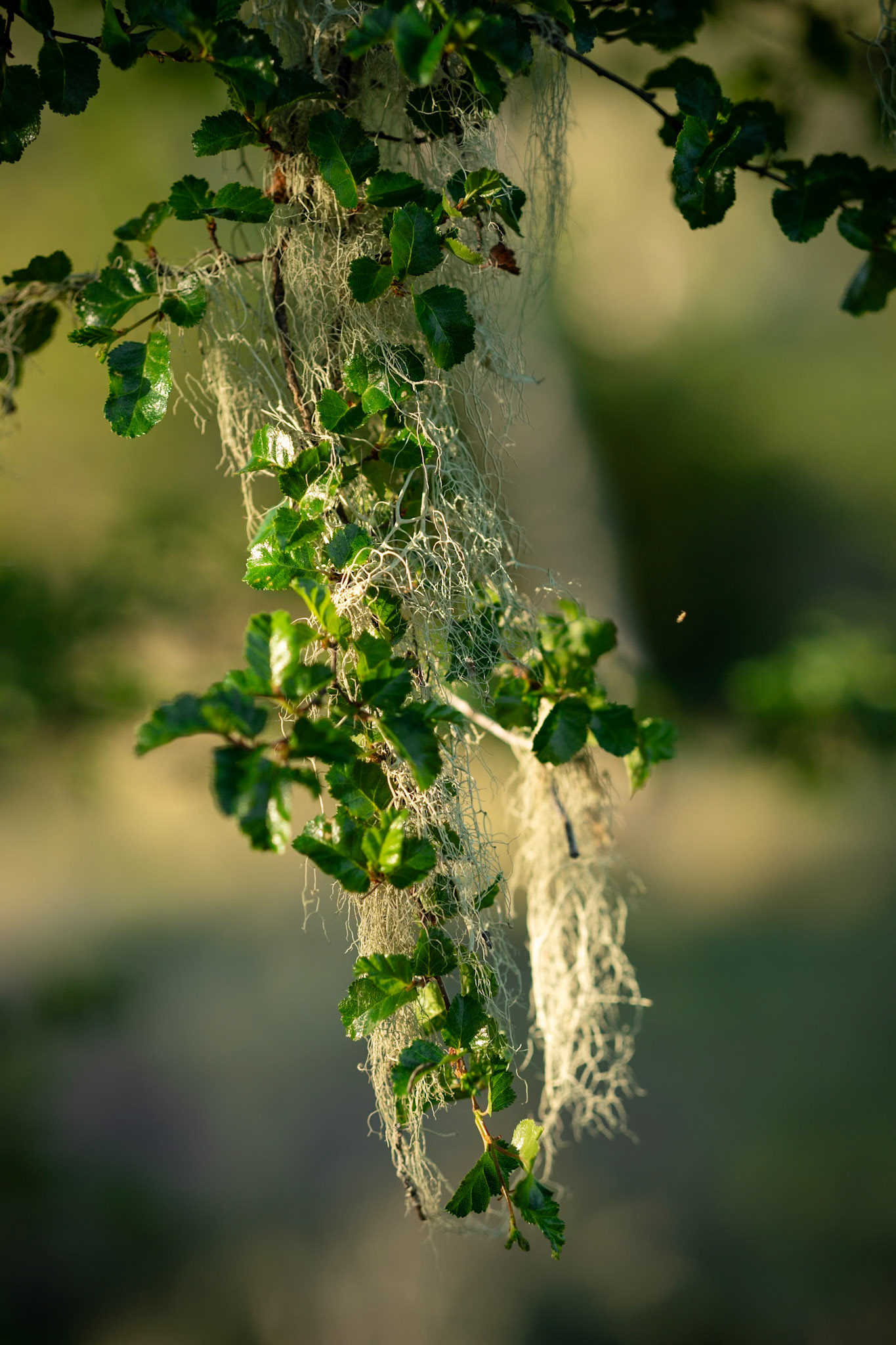

Day 4 Malalcahuello to (near) Captren
We had our first morning dew for months, the tent and bikes were soaked but the novelty of it was brilliant. The glittering morning sun on grass dewdrops was a spectacular sight. The Cellphone towers and WIFI had been off-line for the past day so we needed to get out of the valley to get online and reserve our national park pass.
We headed down the narrow and busy highway to Manchuria. The road was tight but at least the forest either side was pleasant. All very reminiscent of cycling on the roads through the national parks around Murchison in NZ. The road became gravel at the turnoff at Manchuria with a short climb then pleasantly undulating terrain. There were seemingly endless roadworks however so our progress was quite slow. We passed several cafes along the way but all were closed for the off season.
Once in reception we saw that our route ahead was apparently closed but also that even when opens stops admission to the park at 2pm. We stopped in at Camp Llaima to find out what the situation was ahead. Hans who works there was amazingly helpful speaking great English to explain the finer nuances of the Chilean parks system. The road was apparently indeed currently open, but often prone to closure when flooded and the website was out of date. It does close for admission at 2pm regardless. If you stay at the campground in the park (or other paid accommodation) you only pay the park admission ticket (must be done online before arriving due to poor Cellphone reception) for the day you enter the park. In off season camping is limited and very expensive.
We concluded that we may as well camp here and go early the next day. The campsite was beautiful, set in old beech forest with quiet spots dotted about, clean toilets a good shower, power and WIFI (necessary to book park tickets as there is no cell signal there either). More importantly there were two lovely border collies that immediately took a liking to us food-bearing travelers. It was lovely to have a relaxed afternoon in such a peaceful spot to read books and make cups of tea. We heard the now common tapping of woodpeckers high in the trees above. The inconspicuous red crests of the magellanic woodpeckers made them easy to spot but the other species remain well camouflaged high in the canopy. The nearby mirador on the lava flow looking up to Volcano Llaima is well worth a look in the evening.
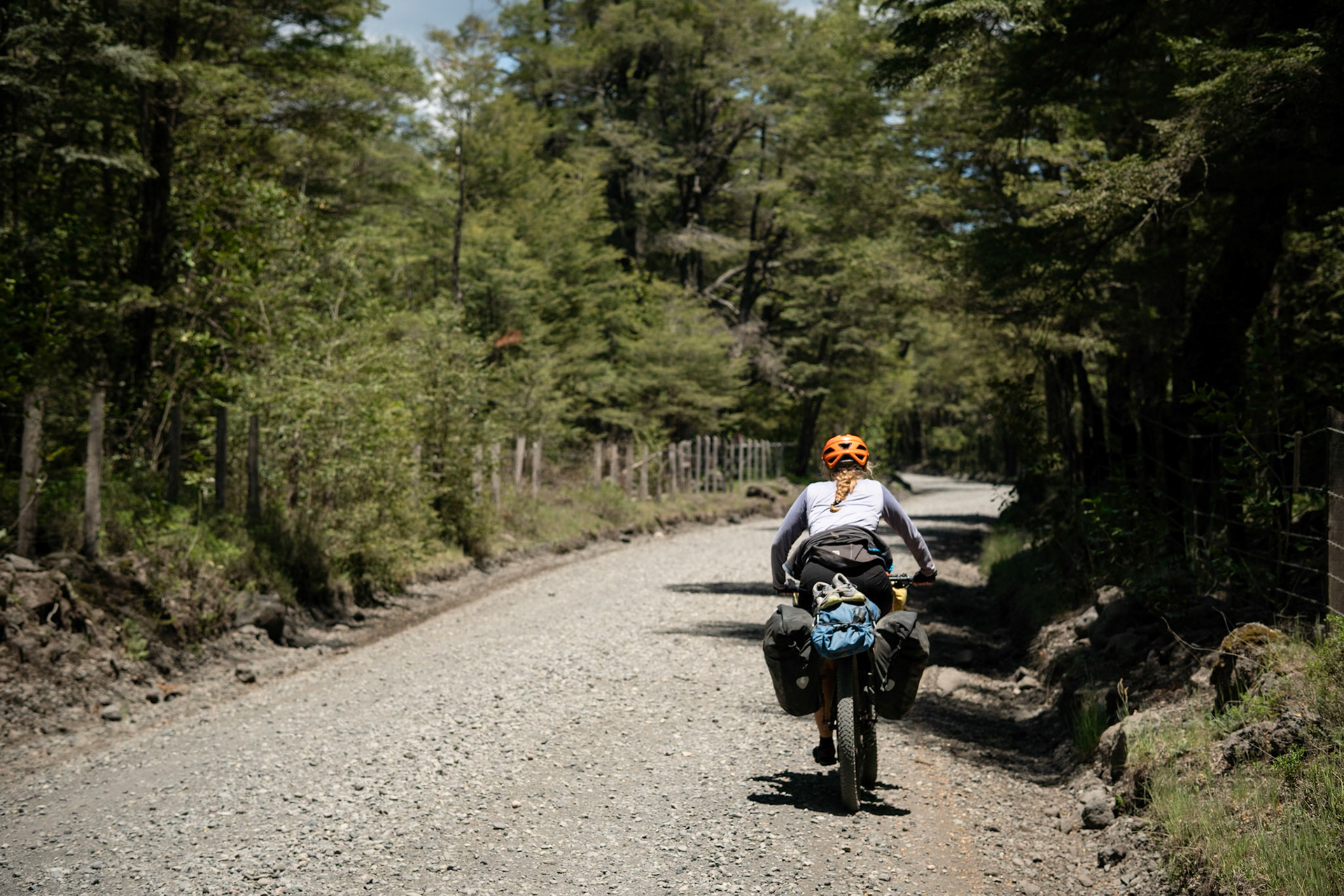
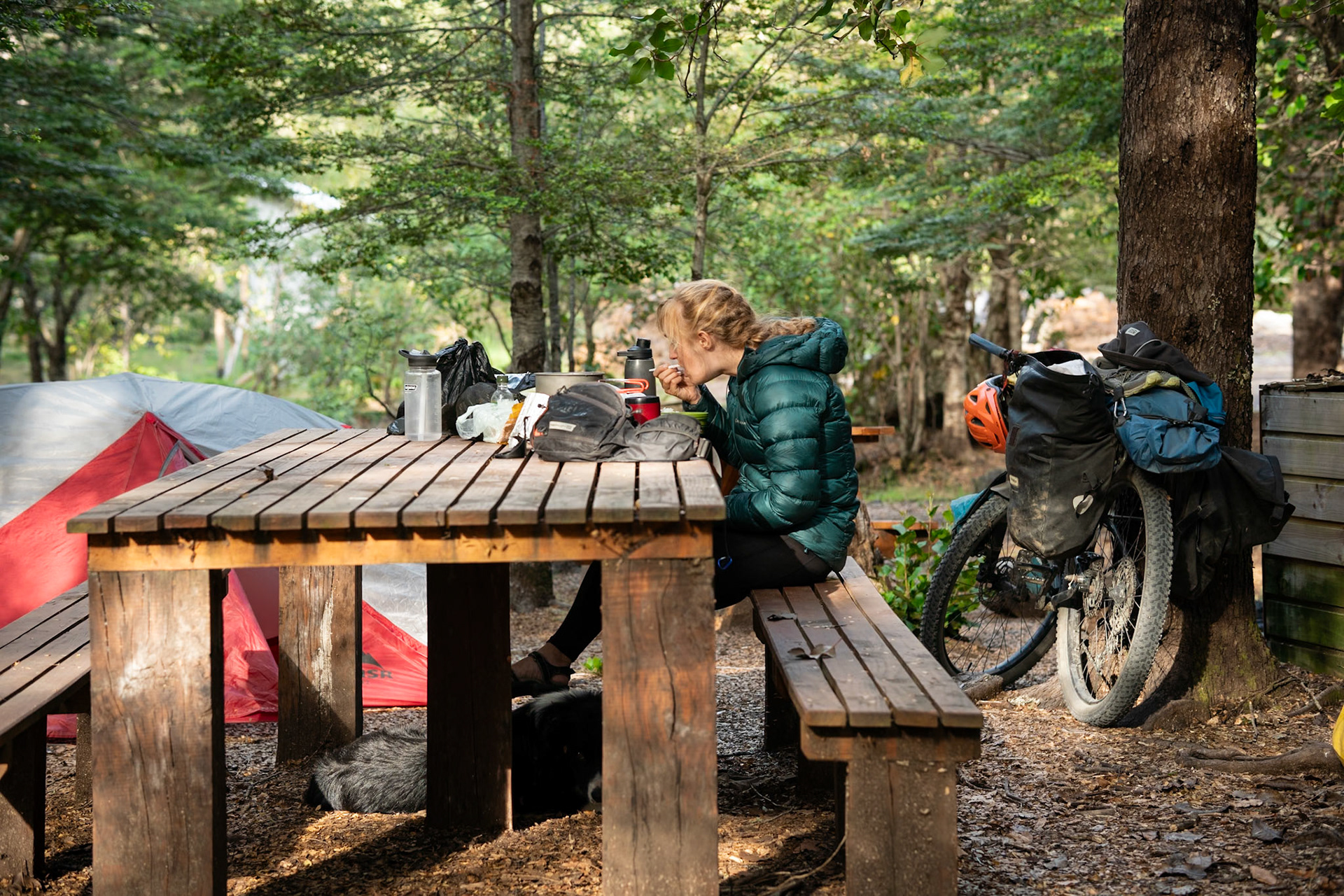
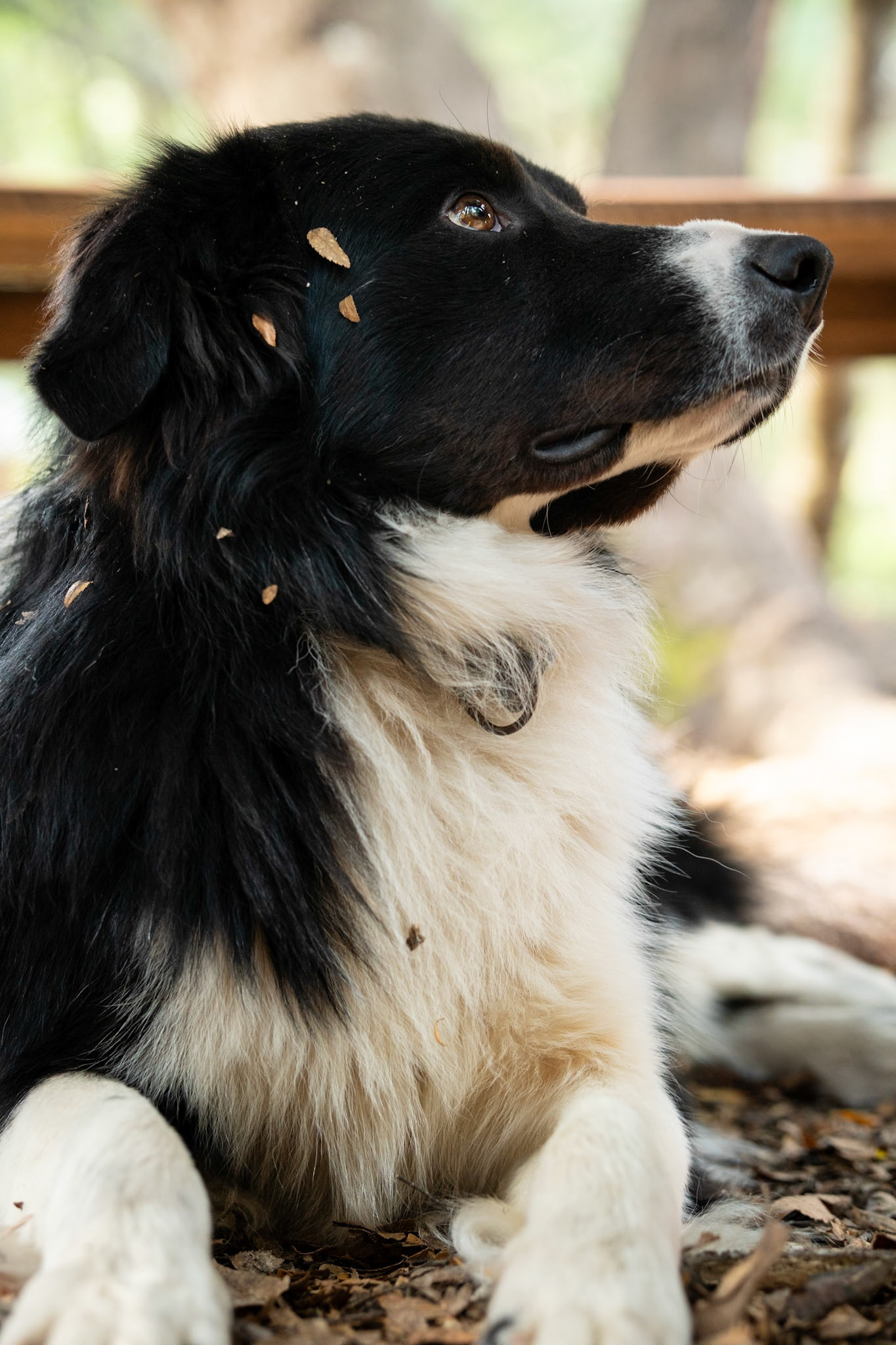
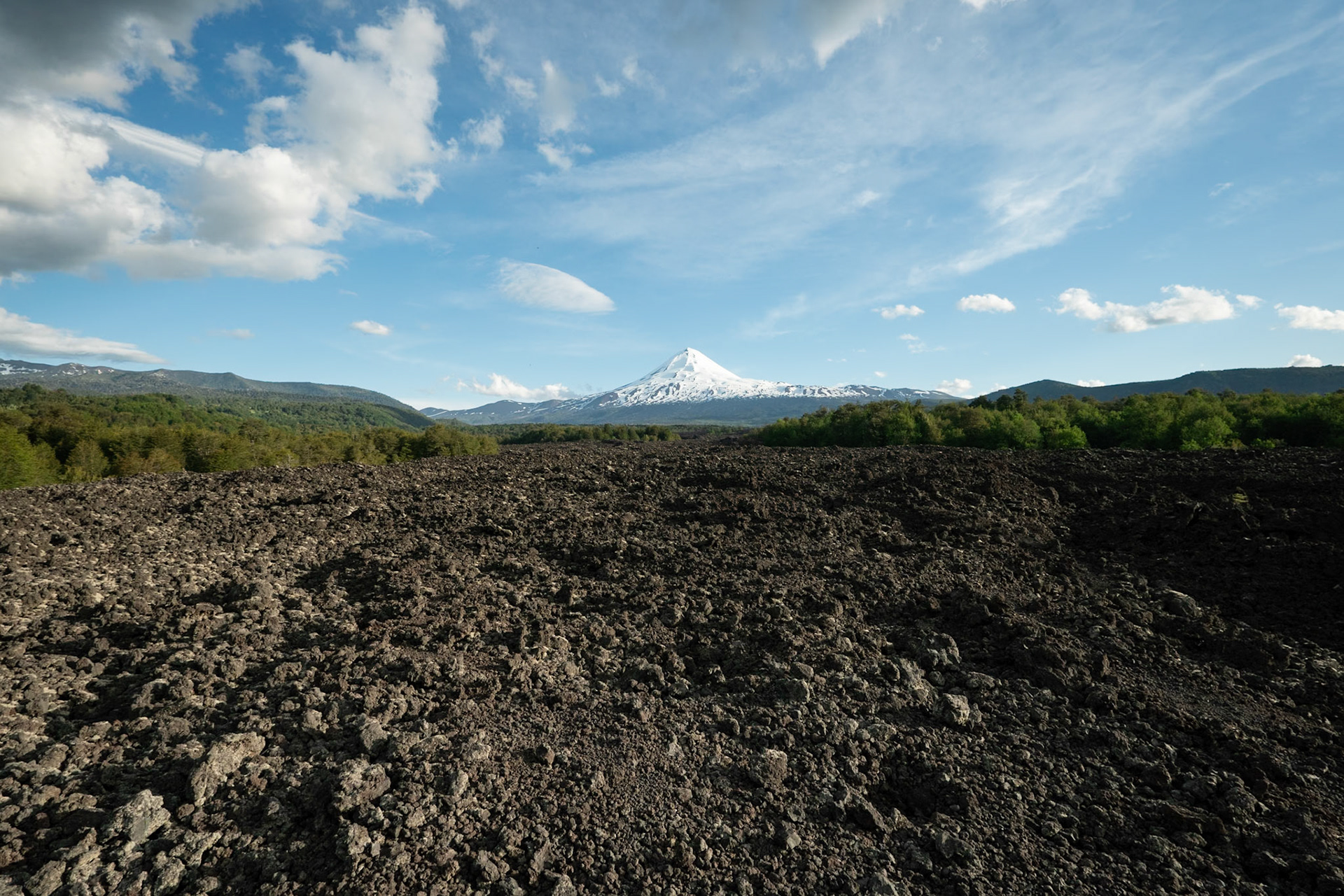
Day 5 Llaima Camp to Melipeuco
Conguillio Park only opens at 0830 so we couldn't get in as early as we would have liked to make the most of the very steep entry fee (10,000 peso pp!!!). The road up from Camp llaima and into the park had a reasonable layer of pebbles and shingle that was frustrating and slow to ride on but nothing by Bolivian standards. We initially had to turn back after 3 kms as the very friendly border collie had decided to adopt us and run happily with us off into the distance with no sign of turning around. She was heartbroken to be led back to her camp and had to be kept indoors to avoid a repeat chase.
The park control gate was staffed rather excessively with three rangers who all looked at our pre-purchased ticket QR code and nodded approvingly before battling with the QR code reader and writing down our details all over again in their logbook. The youngest then insisted on giving us a pre-prepared broken English description of the parks main attractions on the wall map, which was very kind but ironically was chiselling away at our limited time to actually see the park. We found the first of what was to be many spectacular jewelled lizards on the wall outside.
The route winds up across scoria fields and through tranquil valdivian nothofagus forest as araucarias become increasingly present higher up. Lake Chalten was a beautiful spot for an early morning tea before a sudden sharp climb up from there, with a few more short steep sections after. The route here is the most spectacular in the park with tall stands of the aforementioned forest but now with and understory of bamboos and numerous colourful berries in the scrub. The road was now a hard packed mud (caution in the rain) with steep banks either side, presumably from erosion, and flowed nicely down to Lake Conguillio. We only had seen three cars until now but from here we started to meet the cars from the southern entrance, so the road became a fine sandy dust and was aerosolised by the now frequent traffic. We went for a short explore at the start of the Sierra Nevada track but couldn't get far due to the tight park closing time. Later in the season the cheaper El Estero campground is open and would make a great base for a short hike. But unfortunately only the >35,000peso (~70NZD) sites were available in early December.
Lake Arcoiris was astonishingly clear and a surreal sapphire blue that our attempts to photograph just couldn't do justice without appearing grotesquely artificial. Laguna Verde however was not particularly verde. We crossed a huge field of inconceivable volumes of black scoria material which was quite a spectacular demonstration of just how powerful these volcanoes are, in what had been just another relatively small eruption.
The valley was pleasant but a little repetitive. Ruta al Conguillio Cafe was expensive but served absolutely outstanding local food from the little we tried and what we saw. We had an empanada with queso and Morchella (morel) mushrooms which was superb, definitely the second best empanada in South America so far (only after the lifechanging roadside Jawitas back in Chulumani town square). Also a Pinone Sopapilla with Merken which was quaint to taste the nutty pinones in the bread but really not quite all it was cracked up to be, as well as fresh raspberry juice(genuine raspberries, amazing on a hot day). The guy who ran the place was a keen cyclist and had very helpful route suggestions for the few days ahead.
Down the road Melipeuco was well stocked with numerous supermarkets and grocers. We camped at the affordable and charming Agrocamping El Lleuque for only 5000 pesos each (very cheap for this area). Hot showers would be an extra 2000. This was a simple, peaceful back section under trees with clean toilets and sinks. No wifi. The cat seemed well used to visitors and had no qualms taking every opportunity to climb into and over bags, bowls and ourselves in search of food despite our best efforts to remove her.
From Melipeuco there are many options to explore onwards in just about any direction. We chose the more conservative of the gravel routes, given the deteriorating bottom bracket. This was the winding and hilly but scenic S-965, used for the 2022 Across Andes Race, through the national parks around Cunco, Colico, Termas Rio Blanco and Currarehue to Pucon. After that, south through Villarica national park to Lake Neltume, onto Paso Huahum and Argentina, as covered in my next post.
